We took our first vacation since the pandemic this month (January 2024) and traveled to Sri Lanka. It was a wonderful trip. After roughly 24 hours of total travel, with a stop in Istanbul, we started in Colombo (the capital).
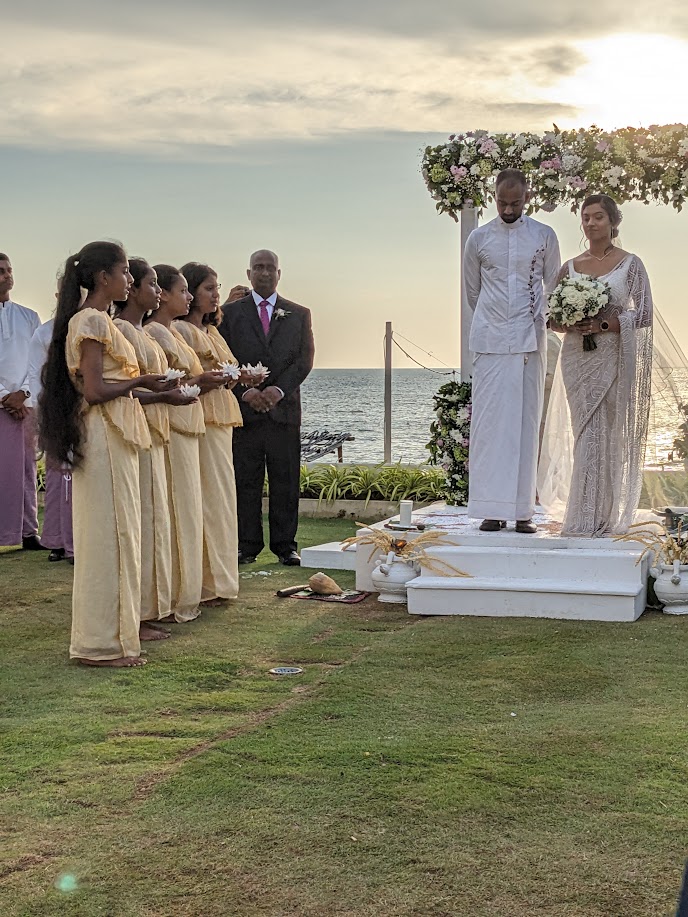
The impetus for our trip was the wedding. of Sanjiv and Sumudu (Deana’s cousin Janthy and her husband Dehan’s son and new daughter-in-law). The wedding was held on the beach behind The Galle Face Hotel. and the setting was incredibly picturesque. It was my first Buddhist wedding and it was filled with symbolism, and ceremony including Kandyan traditional dancers.
We stayed at the Galle Face which is a venerable and impressive 5-star colonial-era hotel. It has been kept up-to-date; the rooms, hotels, restaurants are modern and classy, but it still conveys the history and gravitas of a hotel that’s been in service since the mid-1800s.

Sri Lanka sits on the equator and can be pretty hot. Although we visited in January, the temperature in Colombo stays in the mid-80s and humid year round. One of the many bizarre legacies of British colonialism is that men in Sri Lanka generally wear western suits. Nothing is more miserable in hot weather than a wool suit, high collar, and tie. Linen is a bit better, but still awful. What makes this even more mysterious is that South Asia has extraordinarily beautiful fashion that is meant for the climate. Deana and I visited an Indian store in Ellicott City (India in Style); they have a huge selection, the owner is wonderful and patient, and for better (Deana’s case) or worse (mine), we bought South Asian formal outfits for the wedding. A Kurta is definitely cooler and more comfortable than a suit although in retrospect I would have preferred linen over silk.
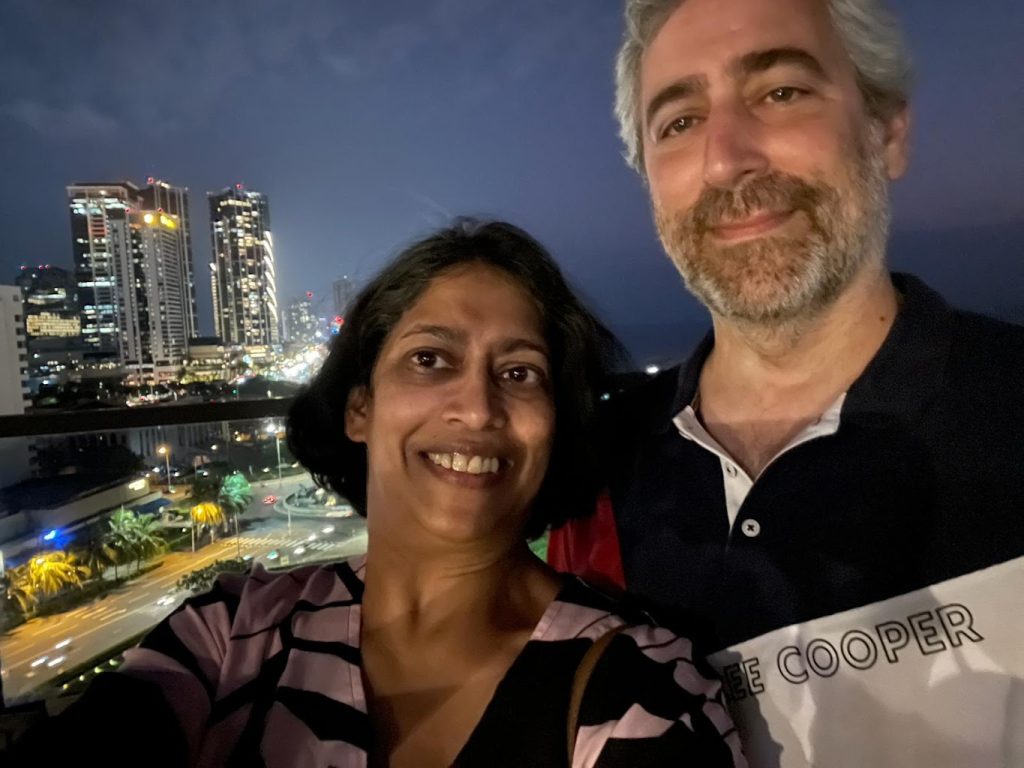
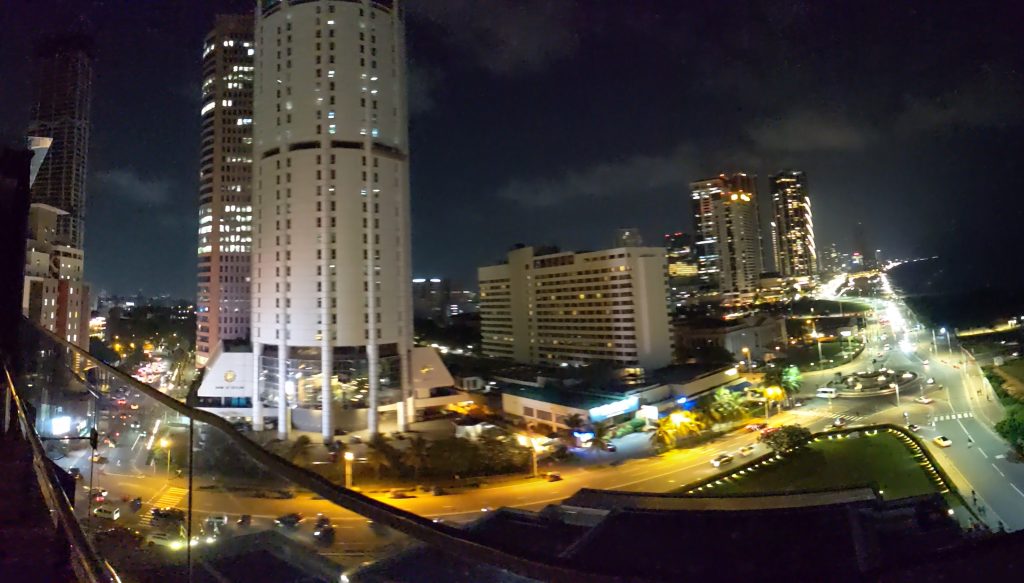
Colombo is a large metropolis with heavy traffic, skyscrapers, and diverse neighborhoods. Like many major metropolises, it is also very fashionable and Deana and I quickly realized our American-tourist clothing needed an upgrade. After several visits to House of Fashion (a popular department store that focuses on clothing) we acquired enough warm-weather, but semi-fashionable clothing (and another suitcase to hold it).
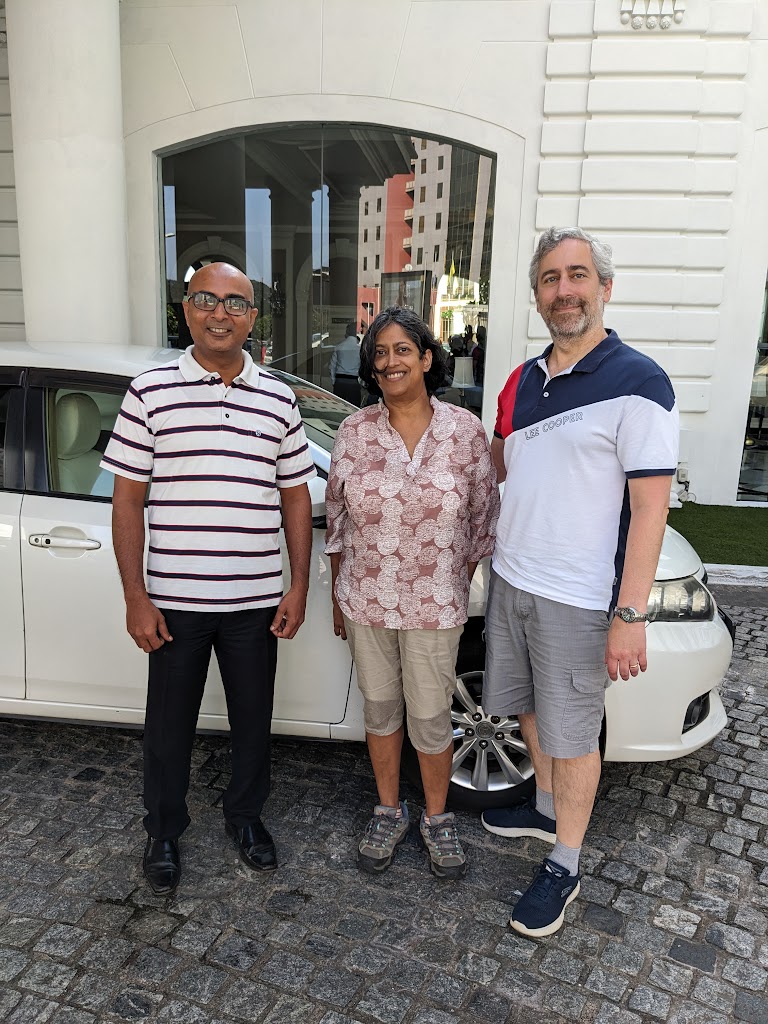
We also realized how essential our driver (Amal) was. Driving in Colombo makes driving in New York City look trivial. Aside from the fact that Sri Lankans drive on the left (UK-style), driving anywhere in Sri Lanka is not for the faint of heart whether in dense urban settings or narrow mountain switchbacks. Even in rural areas, overtaking (passing) is an art-form and there are novel road hazards (like elephants) one may not be accustomed to. If you go to Sri Lanka, get a private driver; it is the single best thing you can do. If you can get Amal, you should do so; he is a gem. You can reach him on WhatsApp (the calling app everyone in Sri Lanka uses) or on his website. I’ll talk more about this later in this post.
While in Colombo, we spent time with Deana’s family members including her cousins Lakshman (who lives in Australia), Lakshme (who lives near us), and Dev (who lives in the UK), her mother’s brother: Uncle Rasa and his wife Jaya, her relatives Somes (Colombo), Subo (UK), and Subo’s brother Ram and his wife Kala (Toronto). Lakshman entertained at his condo where I made my one and only mistake of having a drink with ice – Mr. Montezuma made me pay for that drink for about a week. Really really really don’t drink tap water or use ice in Sri Lanka. Anything you drink must come from a sealed bottle or be boiled. Dev took us to the charming Barefoot Cafe (where by coincidence we again saw Lakshme and Lakshman)
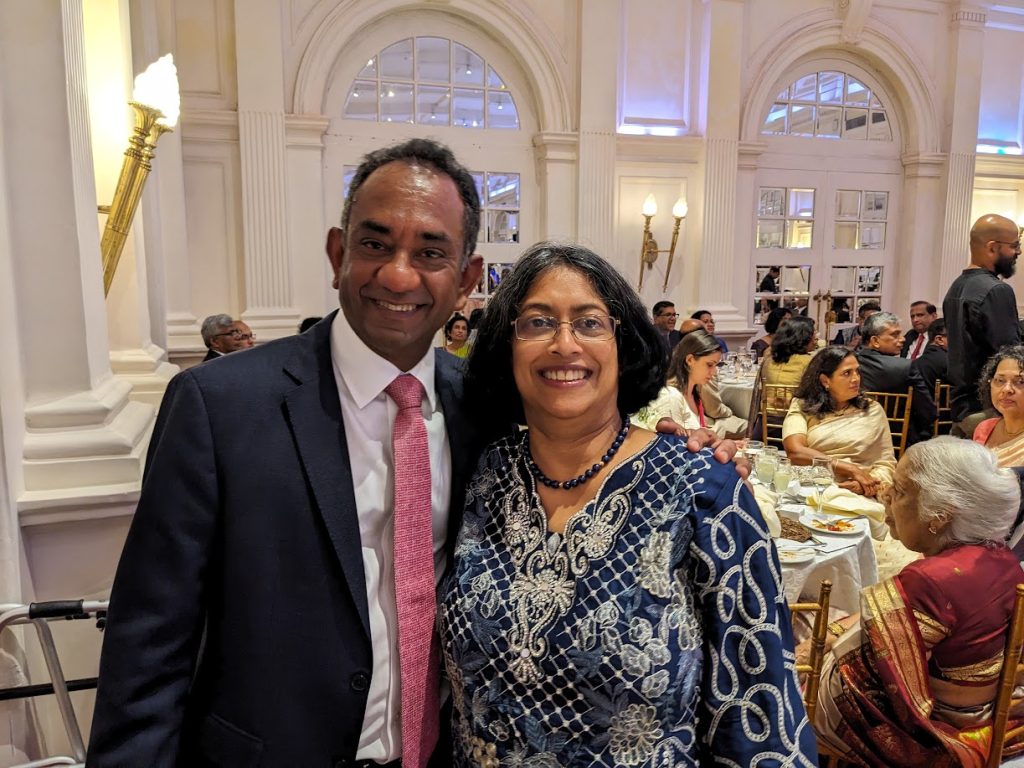
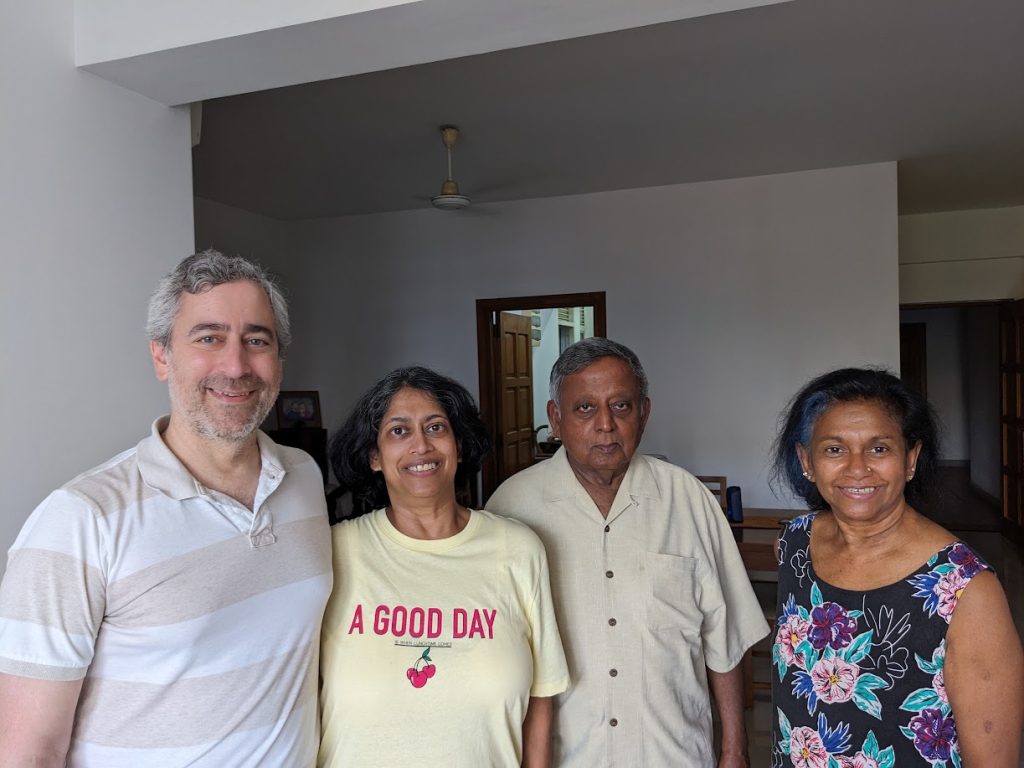
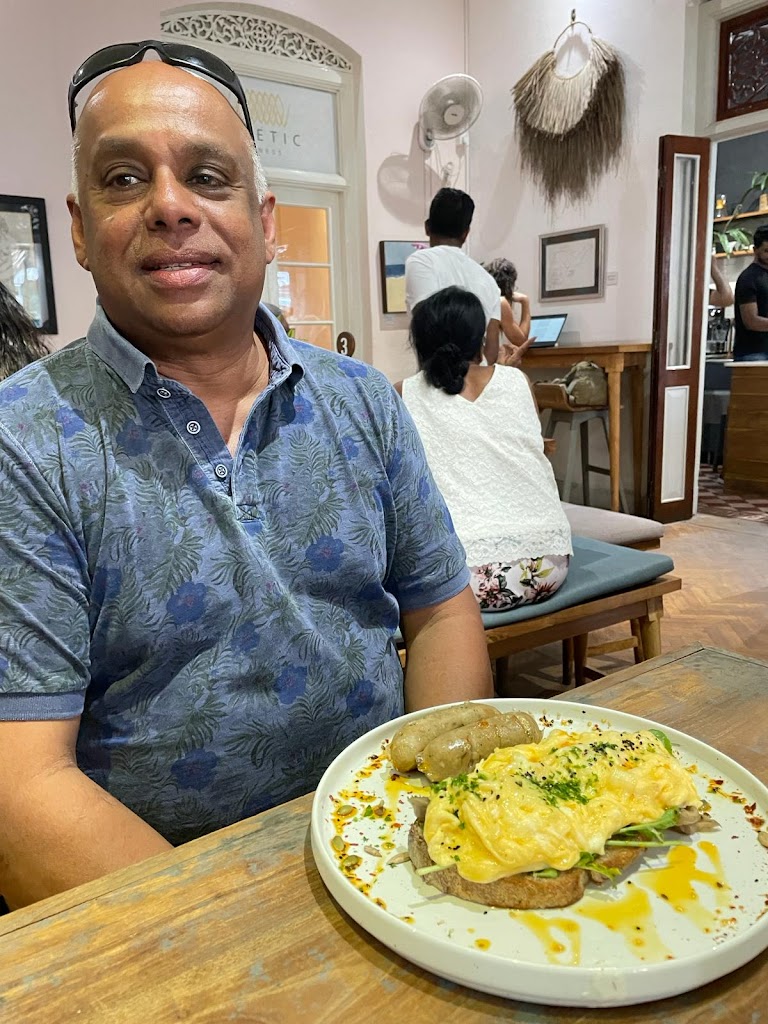
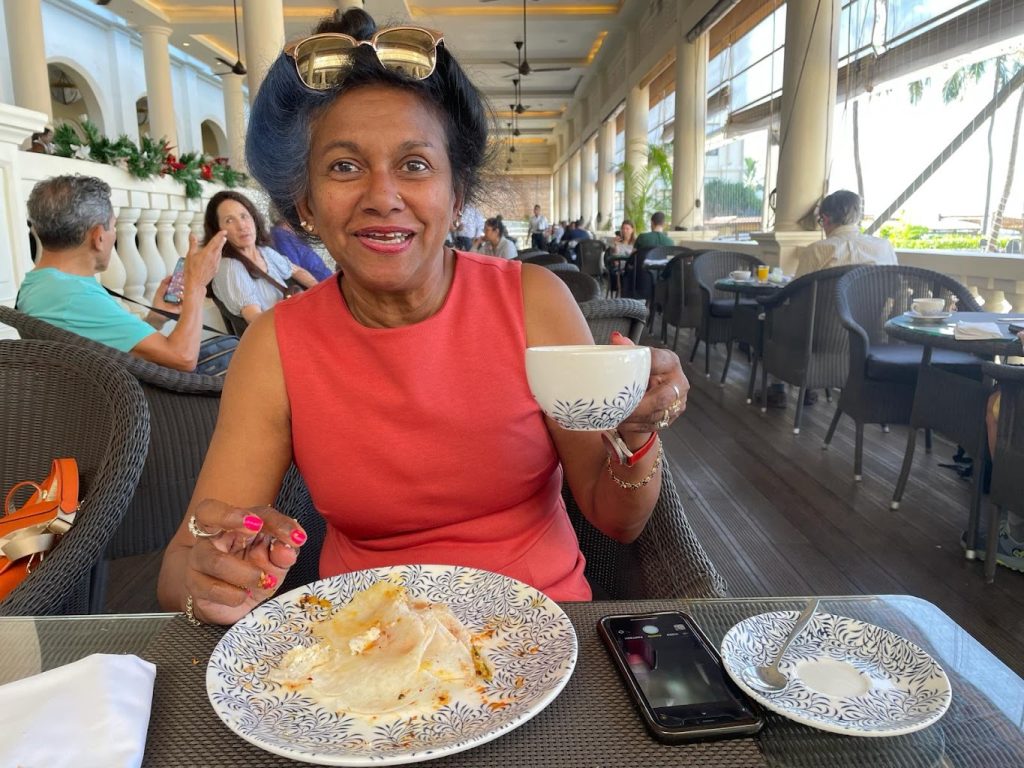
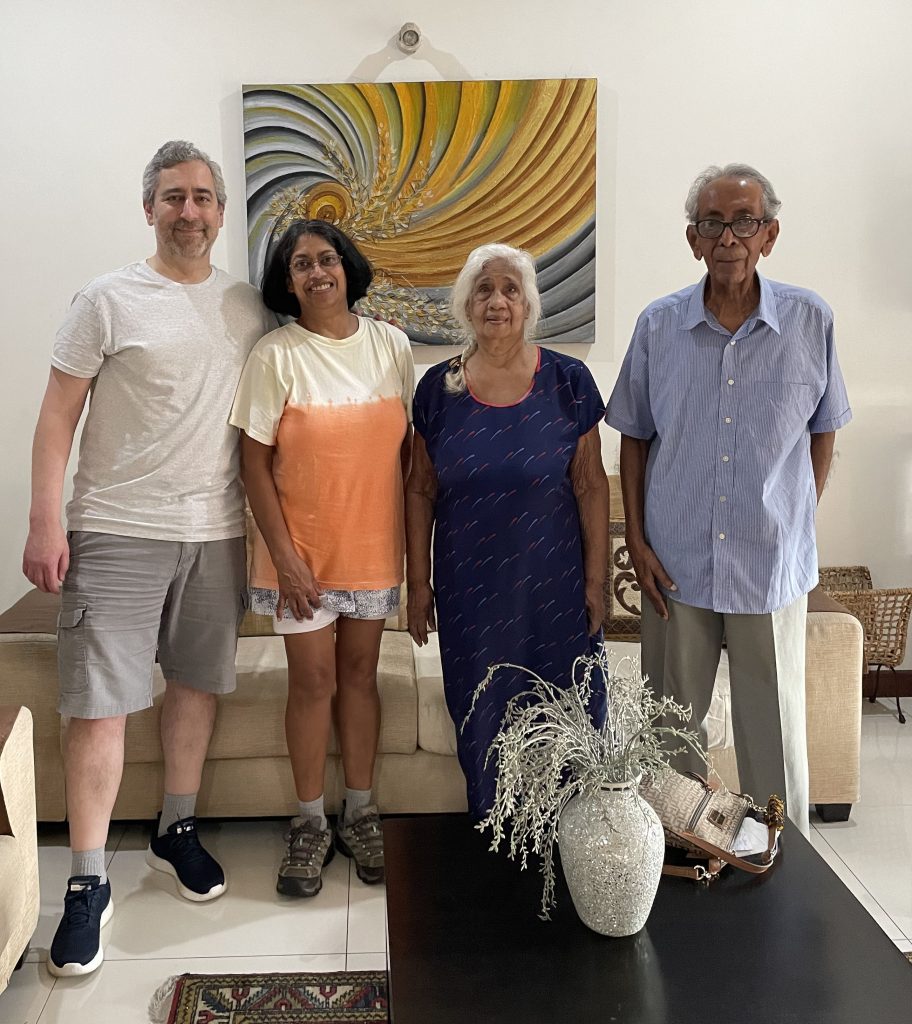
From Colombo, we traveled to Nuwara Eliya which is in the mountainous central region of Sri Lanka. There we stayed at another venerable colonial era 5-star hotel: The Grand (which, true to its name, is spectacular). The rooms are amazing, the grounds are beautiful, and the scenery is stunning. Nuwara Eliya is in tea country: the mountainous central part of Sri Lanka. Unlike Colombo (and much of the island where the climate is tropical), the mountains are delightfully cool and dry – a near perfect environment. The area around The Grand is known as “Little England” and is full of European-style architecture and the culture of the area is unique. We had high tea daily, visited a tea plantation and factory,
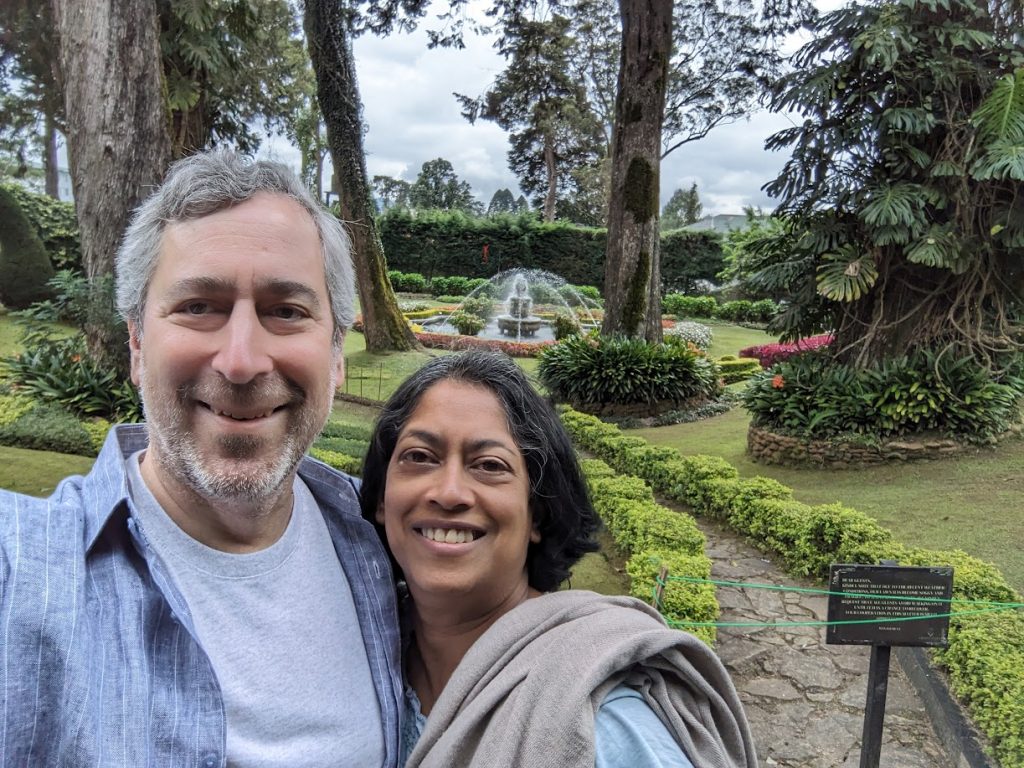
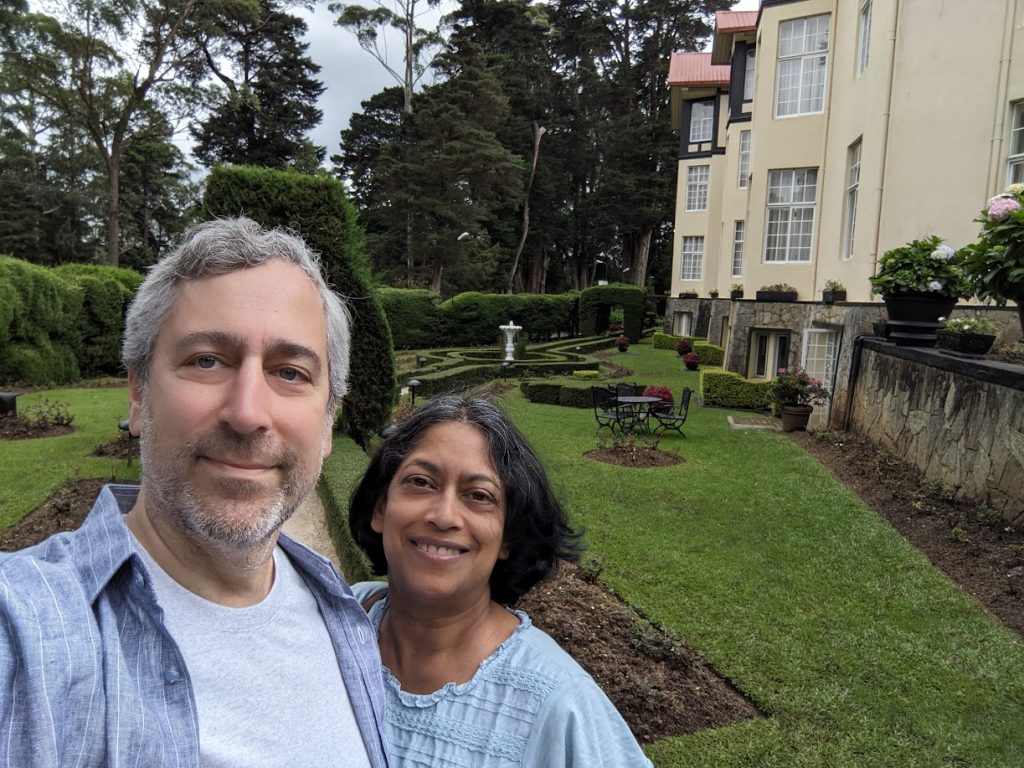
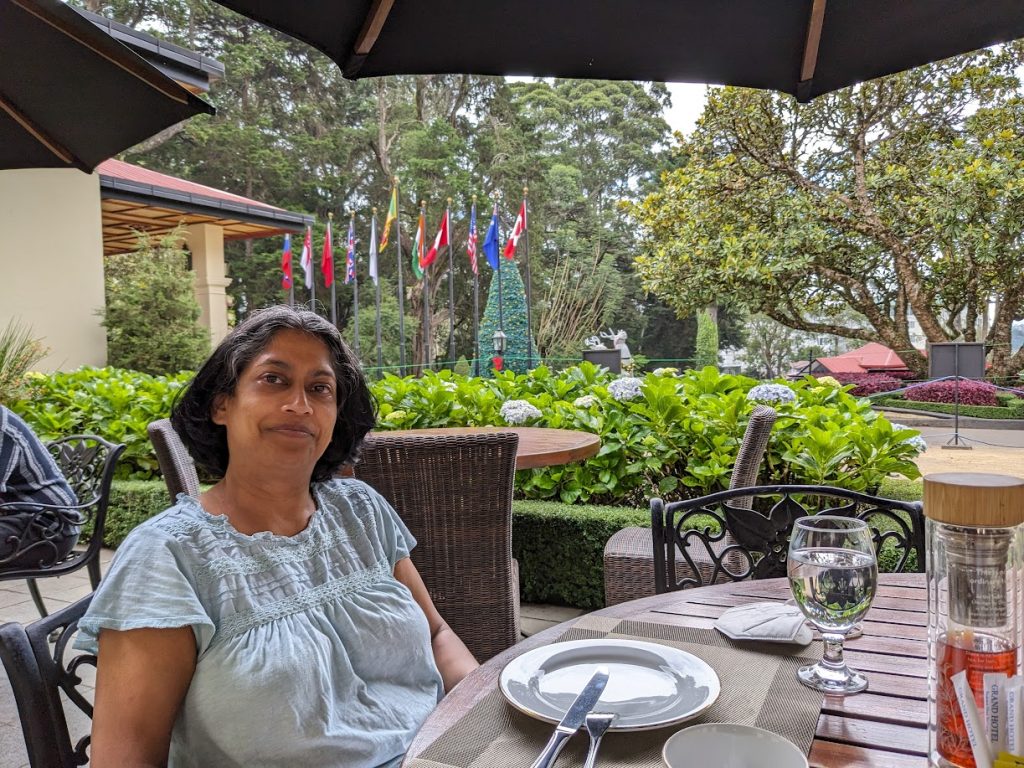
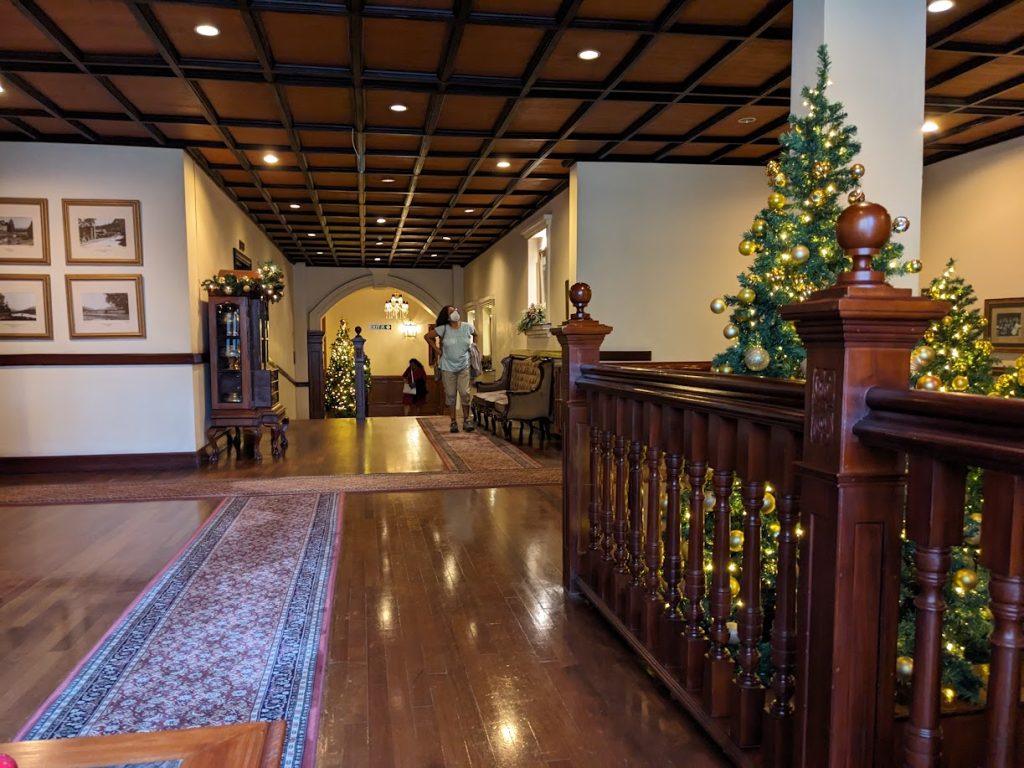
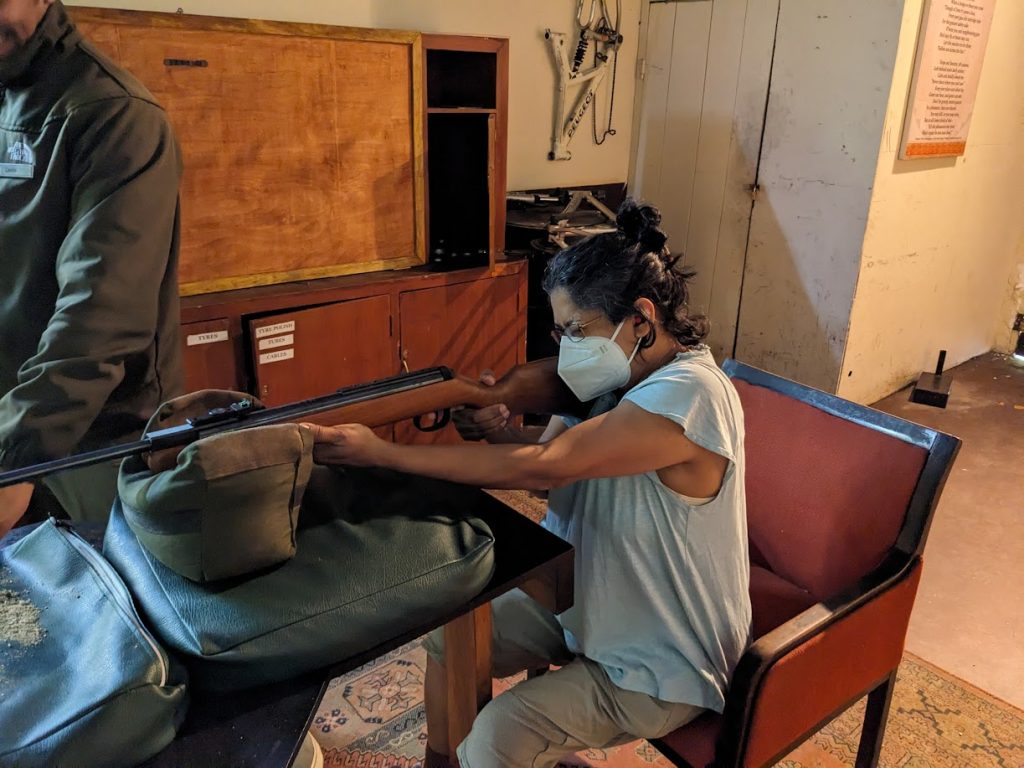
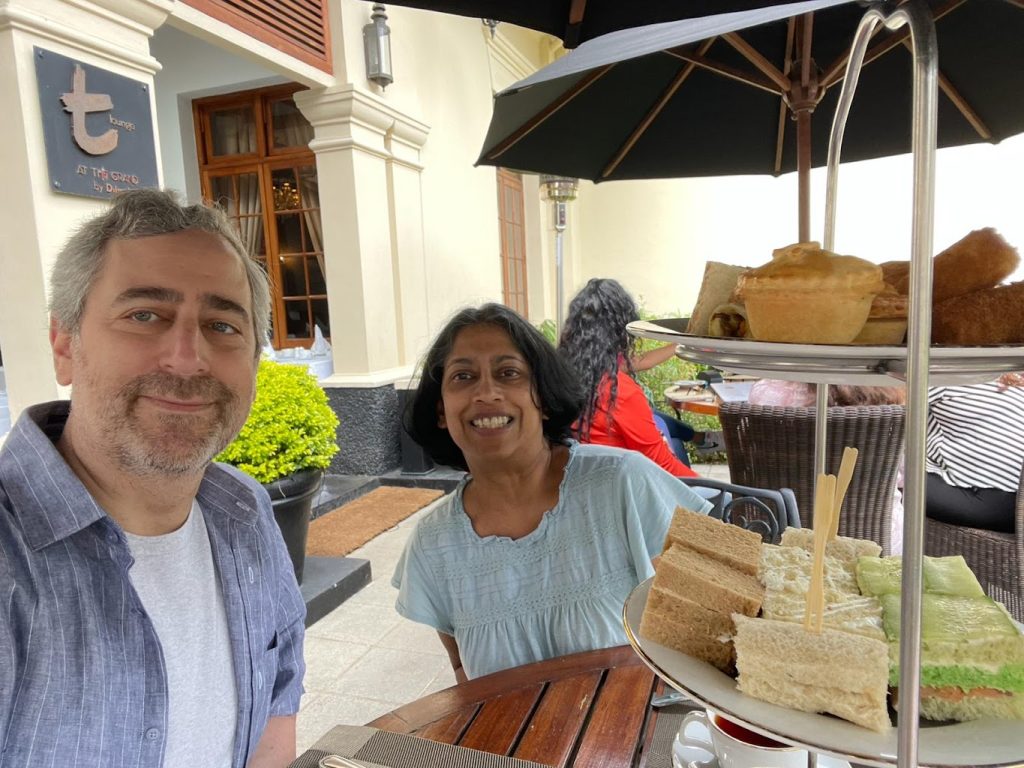
By coincidence, Subo was staying at The Grand at the same time and Deana was able to spend some time with her there. Did I mention how spectacular the gardens are?
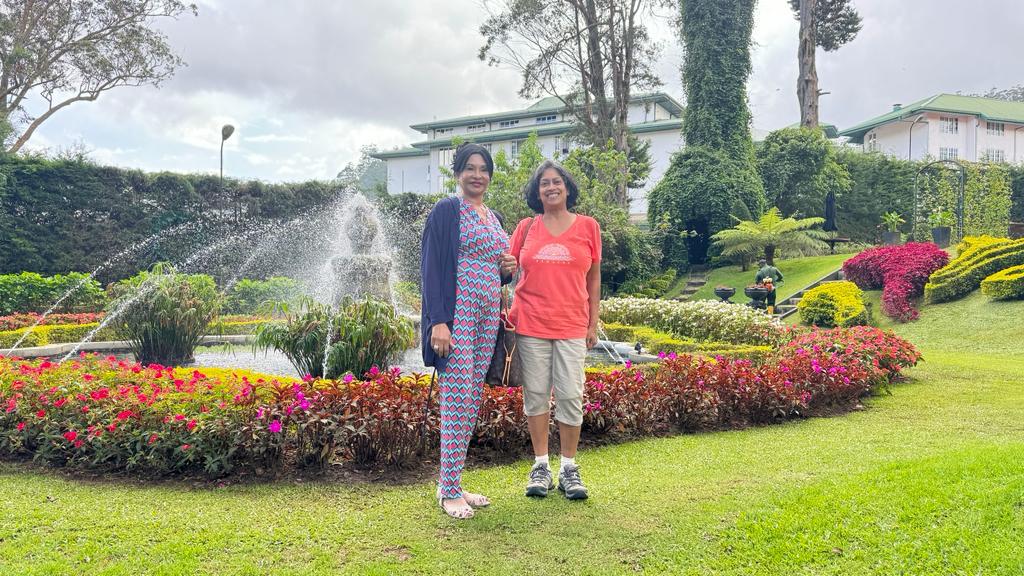
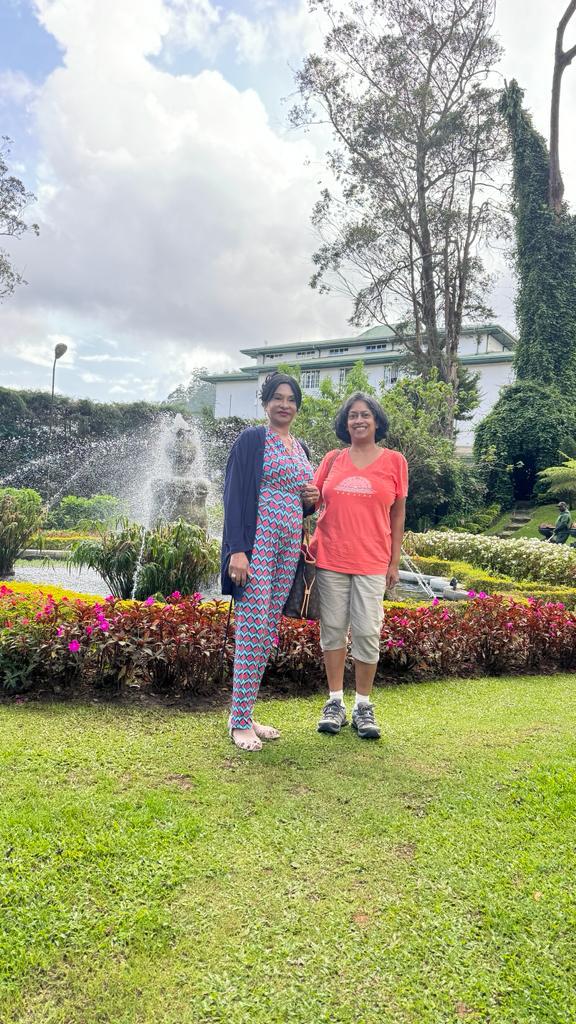
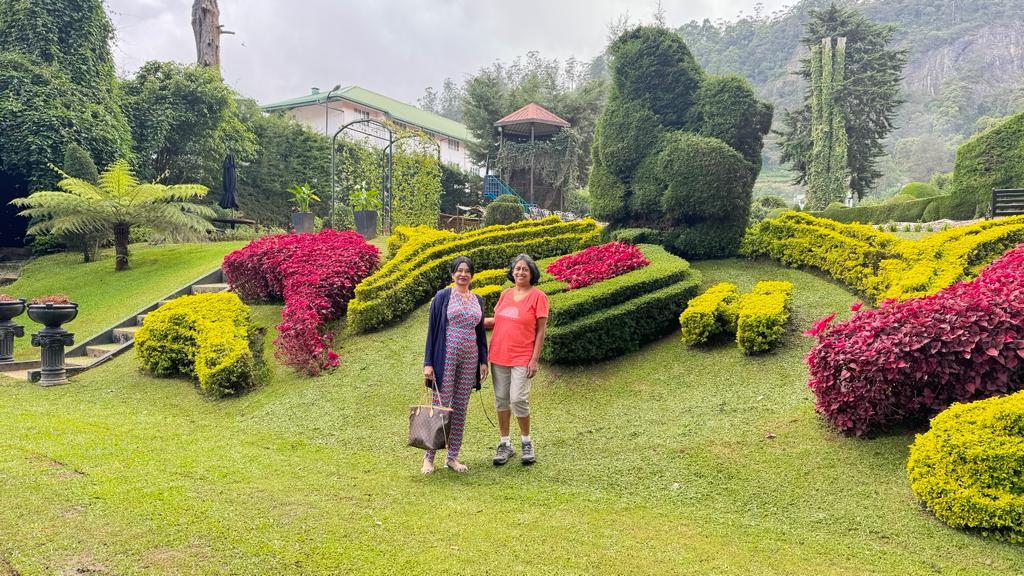
From Nuwara Eliya, we traveled to Kandy, Sri Lanka’s second city and religious center. At Kandy we visited the Temple of the Tooth (the holiest Buddhist temple) and went to a cultural show with traditional dances including an impressive display of fire dancing and eating. Kandy is spectacularly scenic. We stayed at the Amaya Hills (another 5-star hotel) which sported stunning rooms and incredible views. Coincidentally, Deana’s relative Subo and her husband Ram and his wife Kala whom we had been with at the wedding were also staying at The Grand at the same time so we got to meet with them there again.
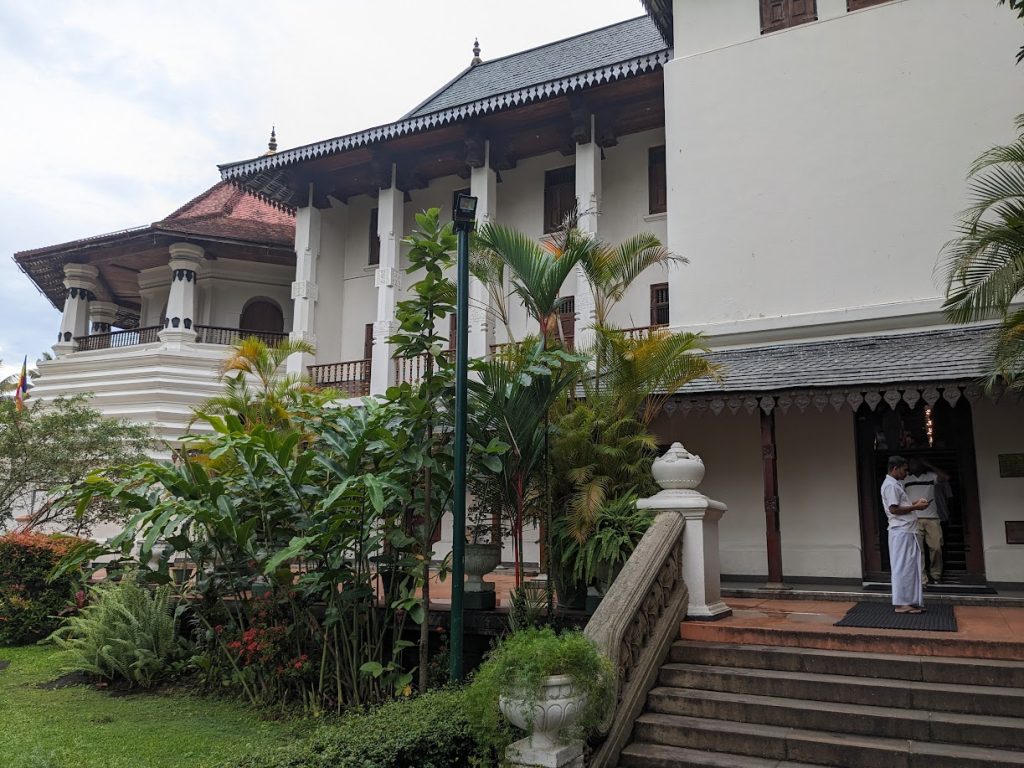
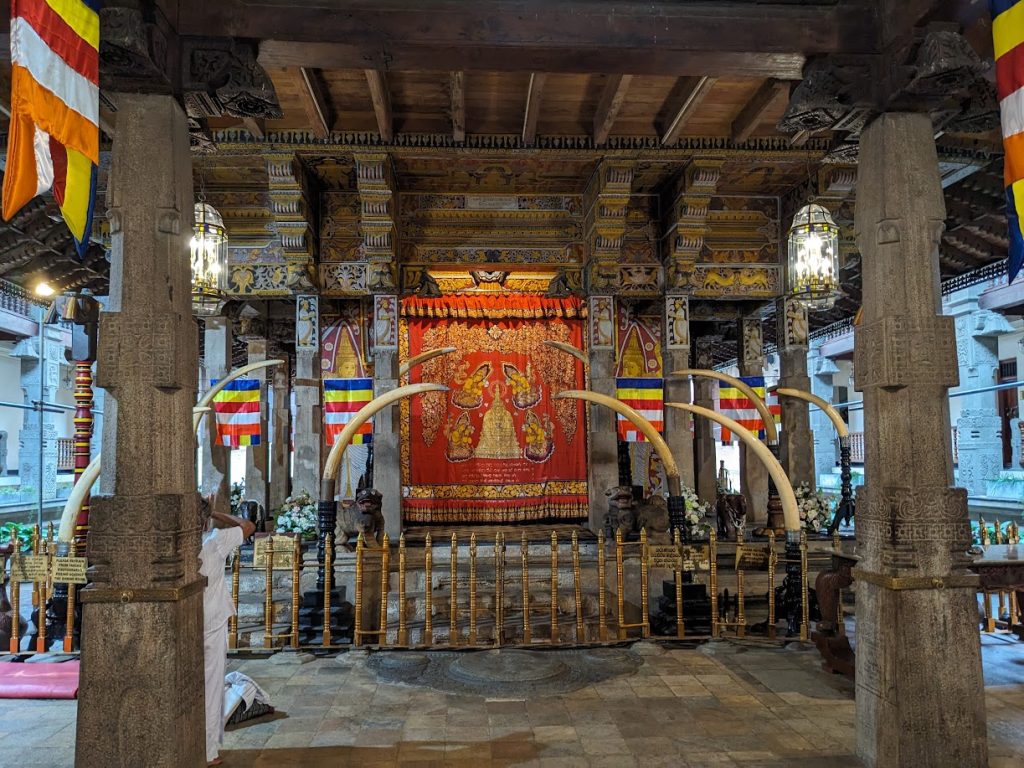
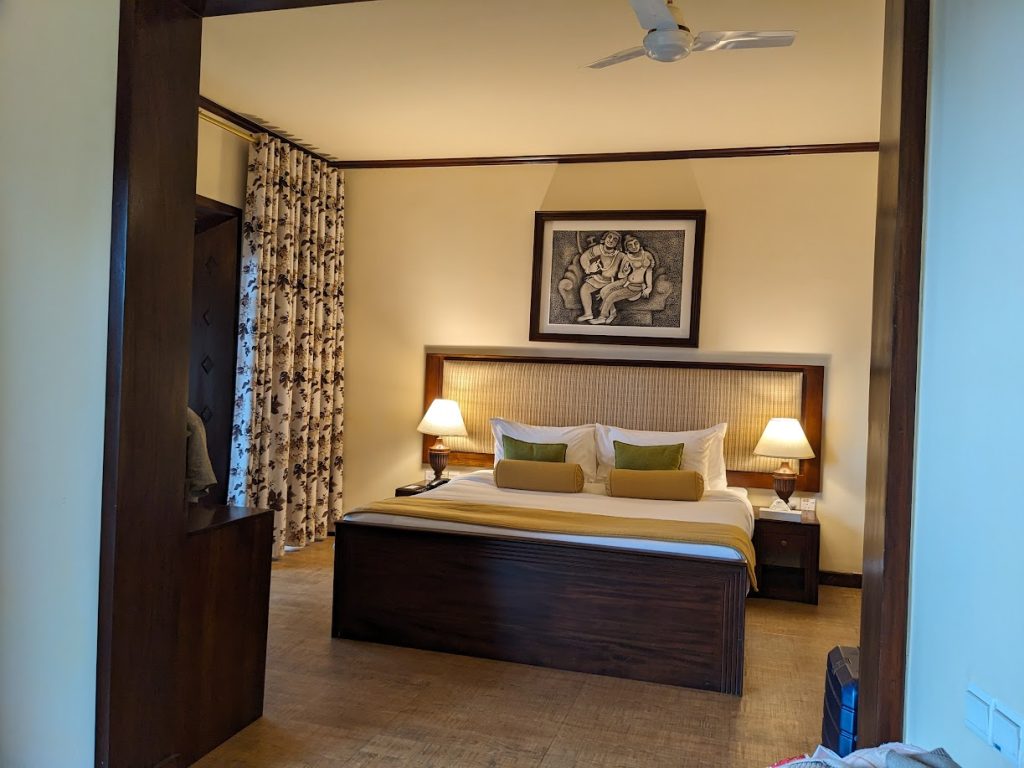
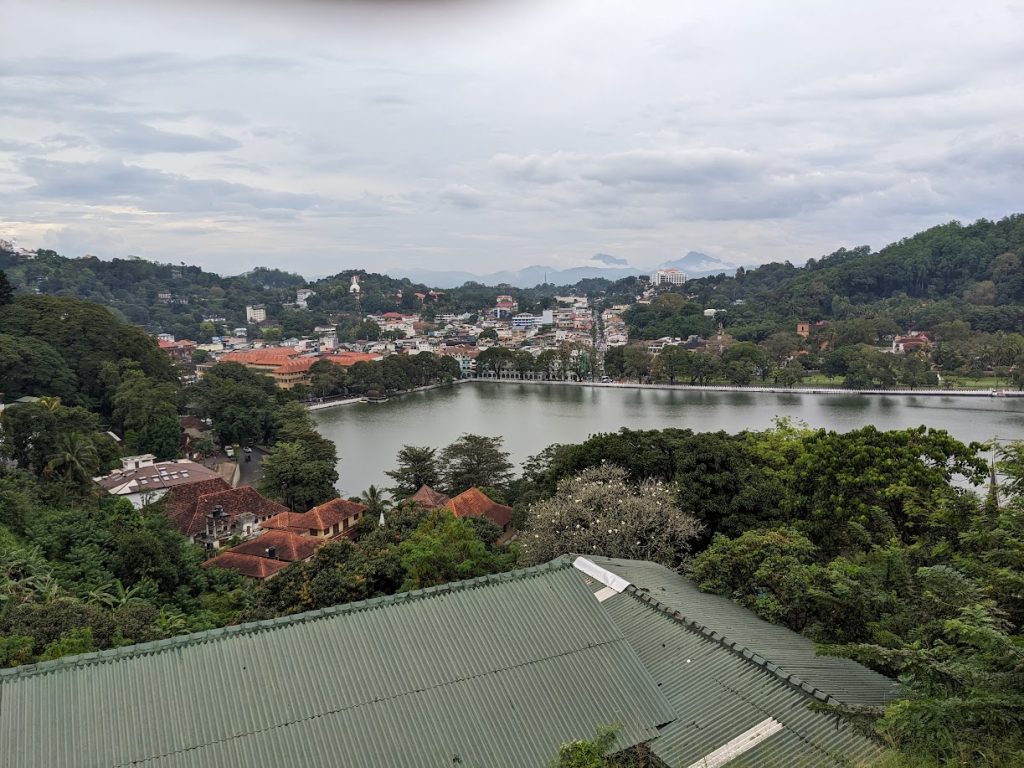
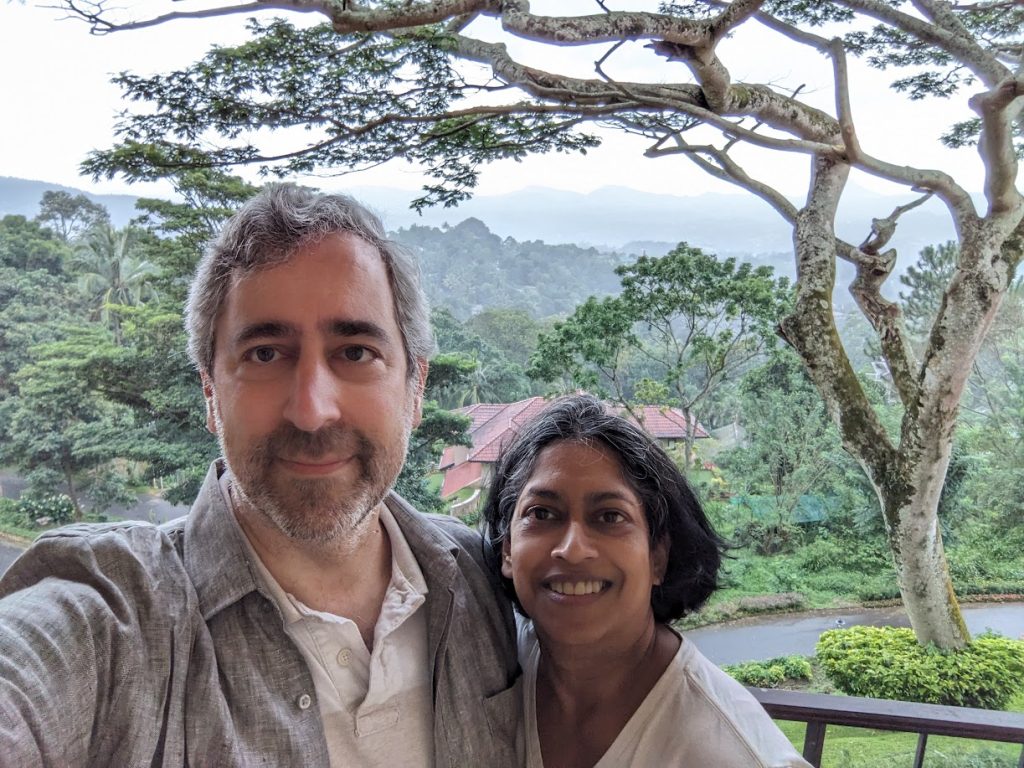
While staying in Kandy, we visited two ancient Buddhist temples; one was a UNESCO World Heritage sites: the 1st century BCE Dambulla Cave Temple. Both temples involve some climbing; Dambulla is built atop a 500′ rock so there are a lot of steps involved….but they’re worth it and somehow not nearly as difficult as the climb at Sigiriya (later). There are 5 caves at the top, each filled with massive ancient statues and every inch is intricately painted. Of the historic and religious sites we visited, I found Dambulla by far the most impressive. Note: there are a *lot* of monkeys at Dambulla.
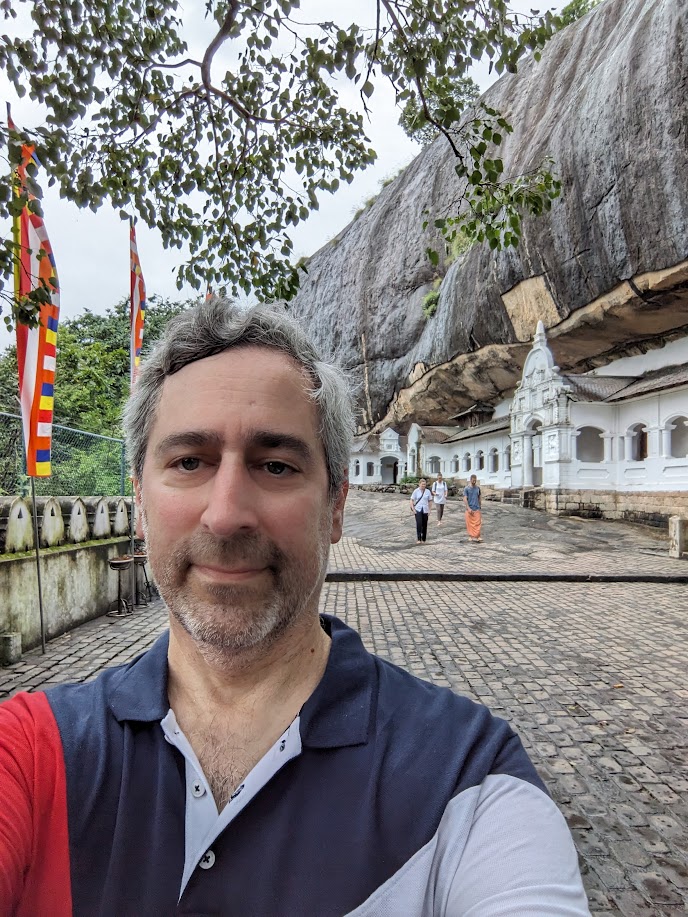
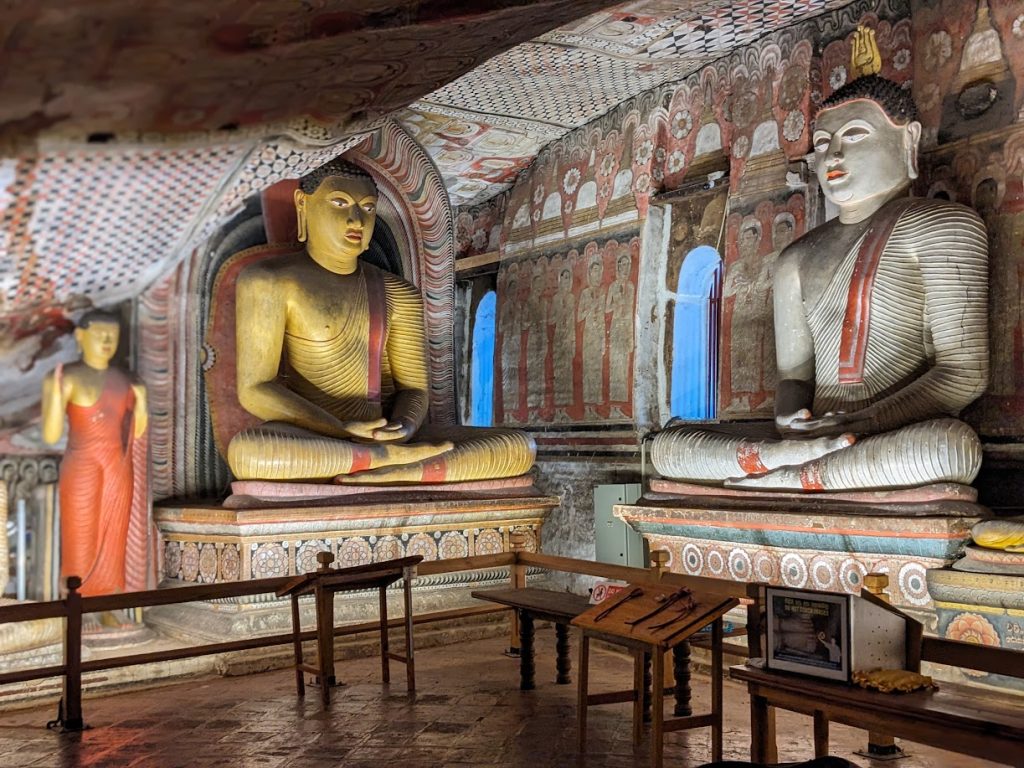
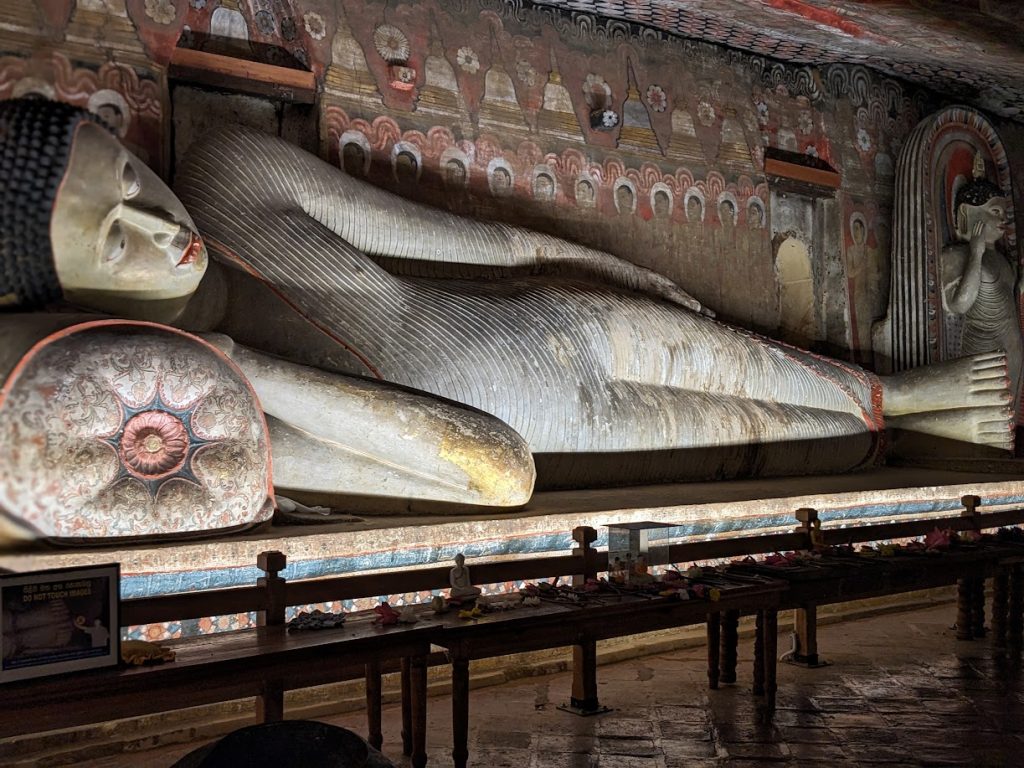
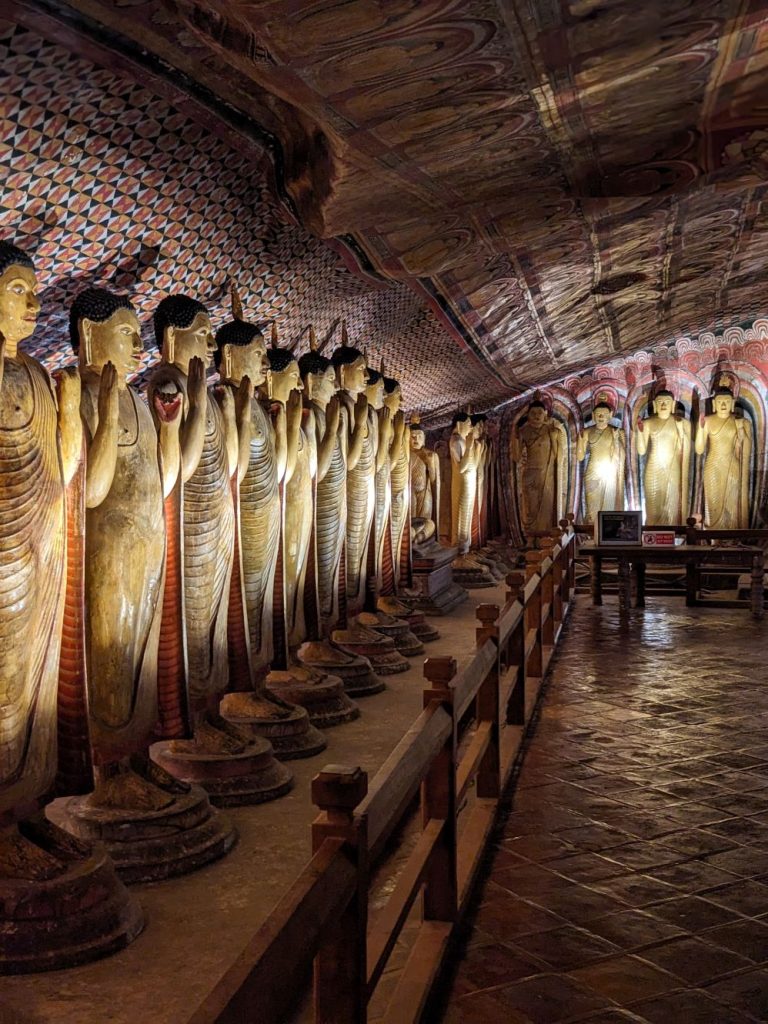
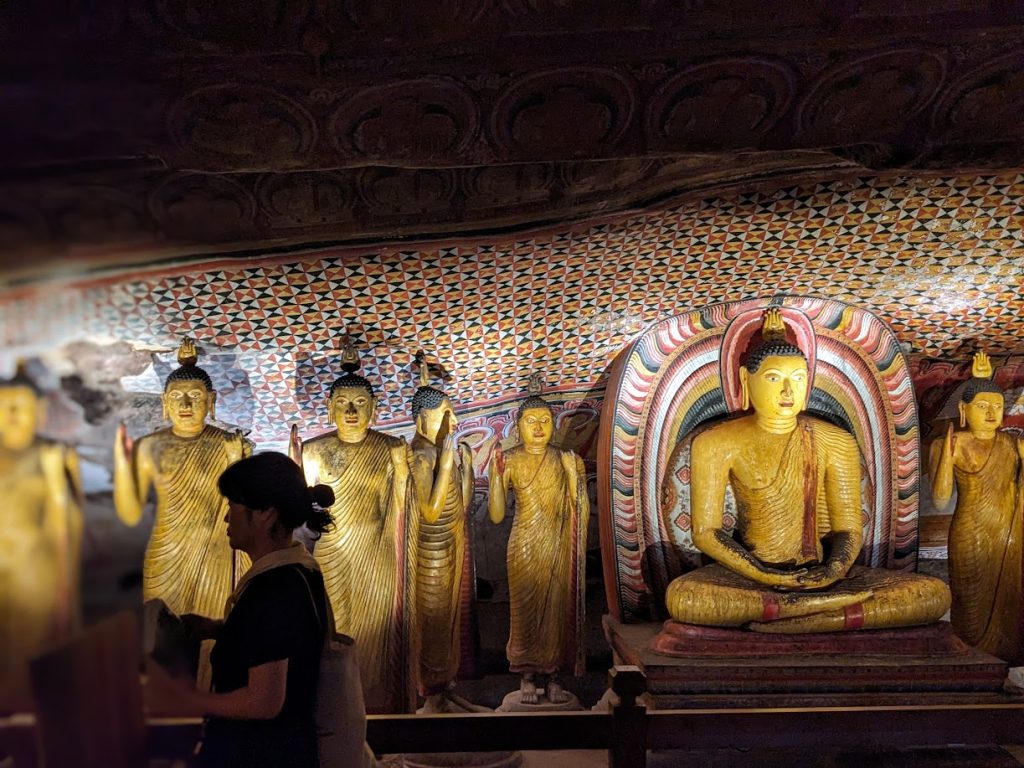
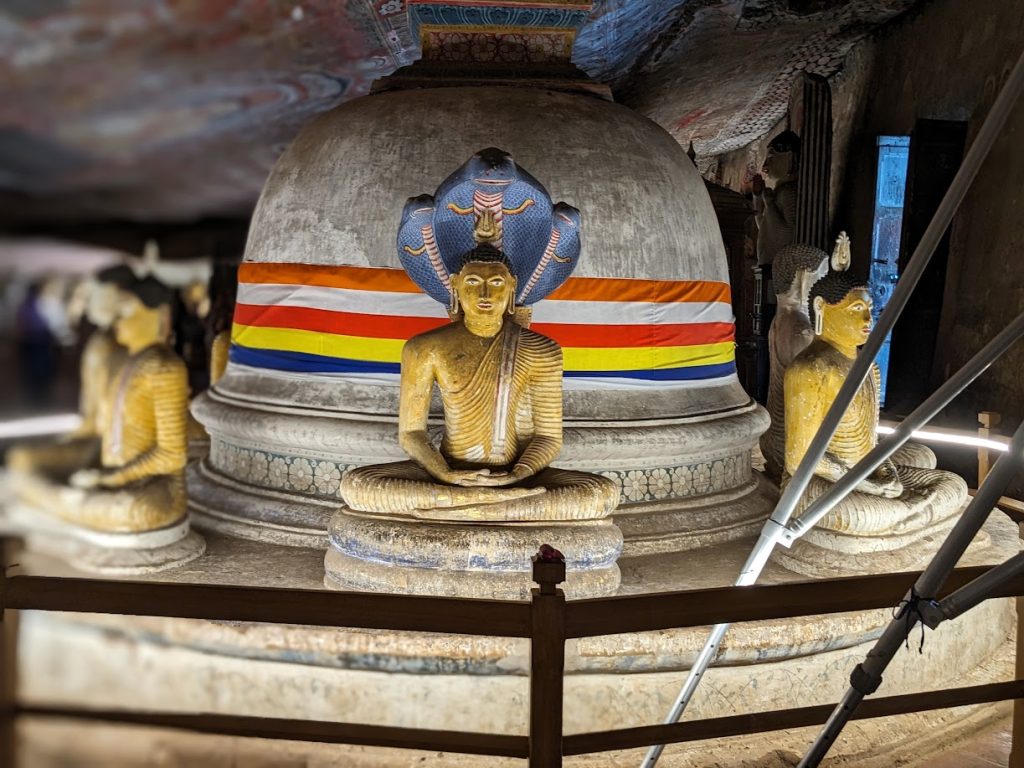
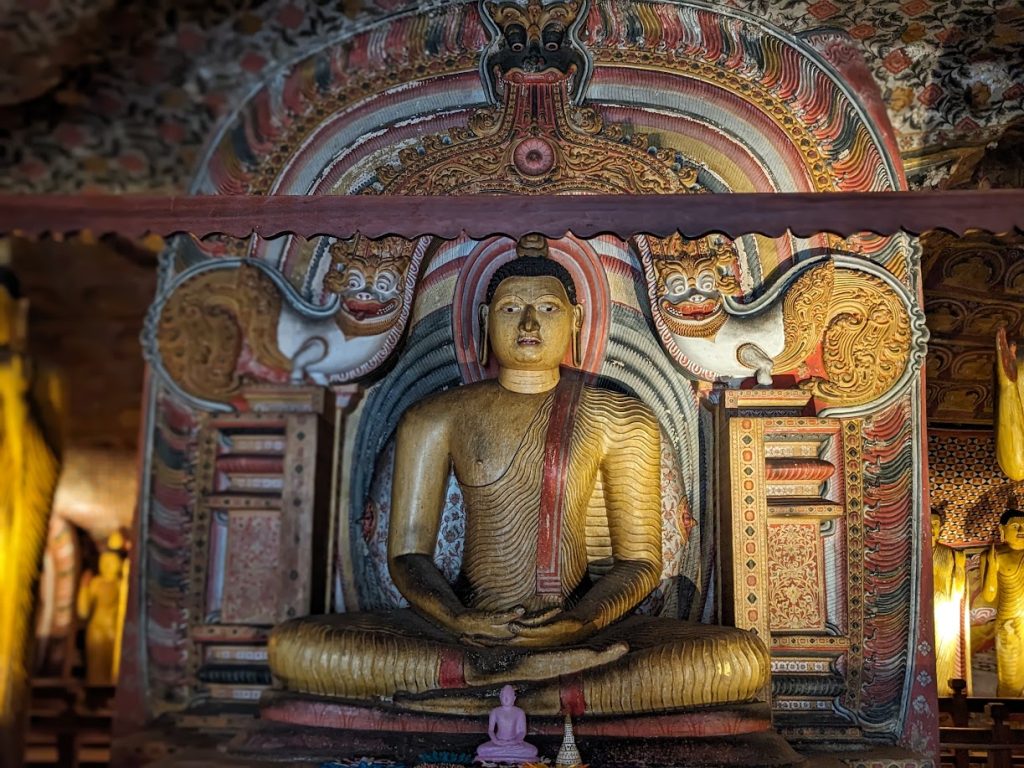
From Kandy, we traveled to Sigiriya. On the way we visited the Sri Muthumariamman Hindu Temple in Matale. This is a very old temple which is incredibly intricate
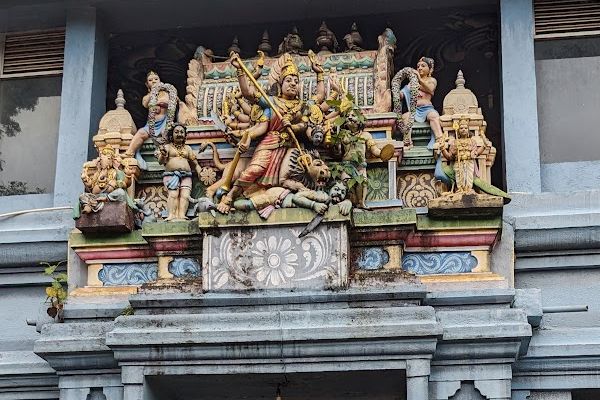
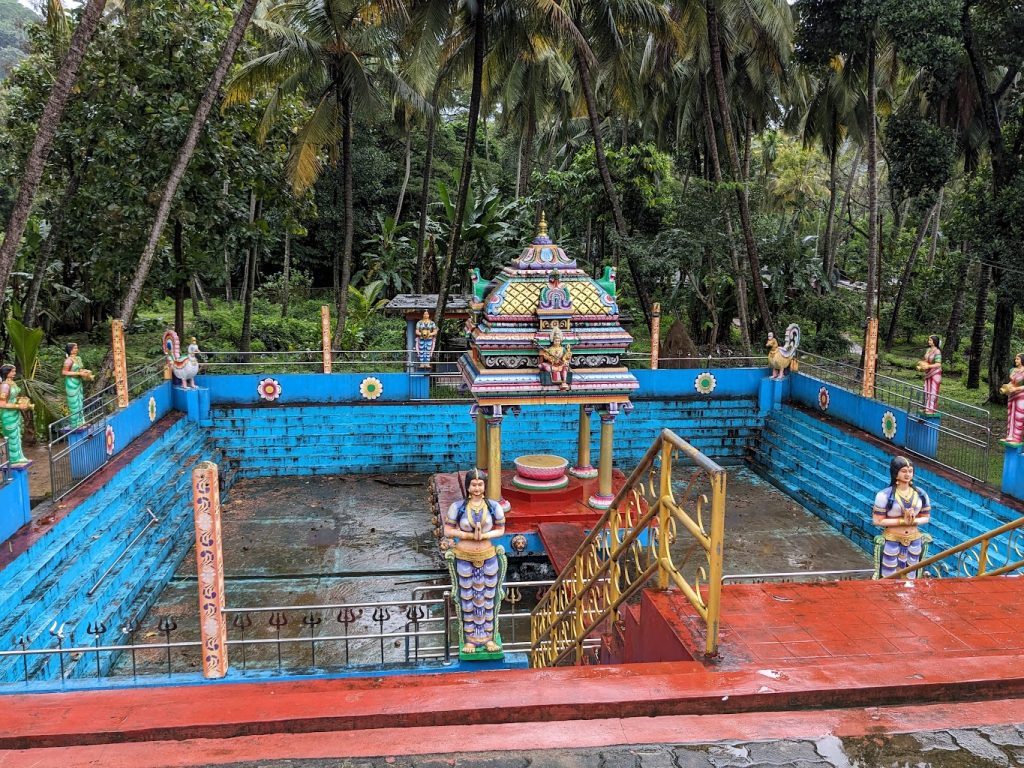
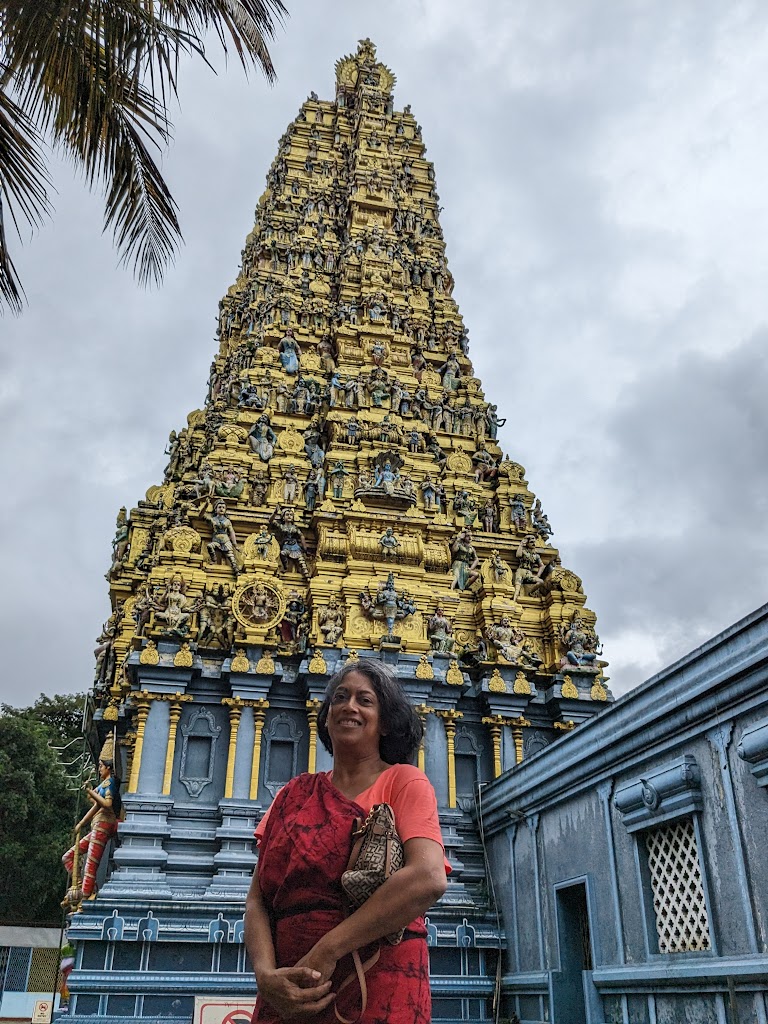
Once we reached the Sigiriya area, we stayed first at The Heritance Kandalama, an unbelievable eco-hotel located in the midst of a nature preserve. It’s really hard to overstate how amazing the Kandalama hotel is. We started in Colombo at a very impressive 5-star hotel and somehow each hotel kept getting better; the Kandalama was hands-down the best. The hotel was designed by a famous Sri Lankan architect (Geoffrey Bawa) and is simply perfect. It is integrated with its natural surroundings in ways reminiscent of Frank Lloyd Wright. From the moment you arrive at the hotel, it is apparent that it has been built to blend in with its surroundings. The hotel is on a lake deep in a nature preserve; wildlife is everywhere and you truly feel like you’re in the jungle. The first night, monkeys stole Deana’s coffee cup and when it rained, several families of monkeys camped out on our balcony. The night was filled with the sounds of birds, monkeys, elephants, etc.
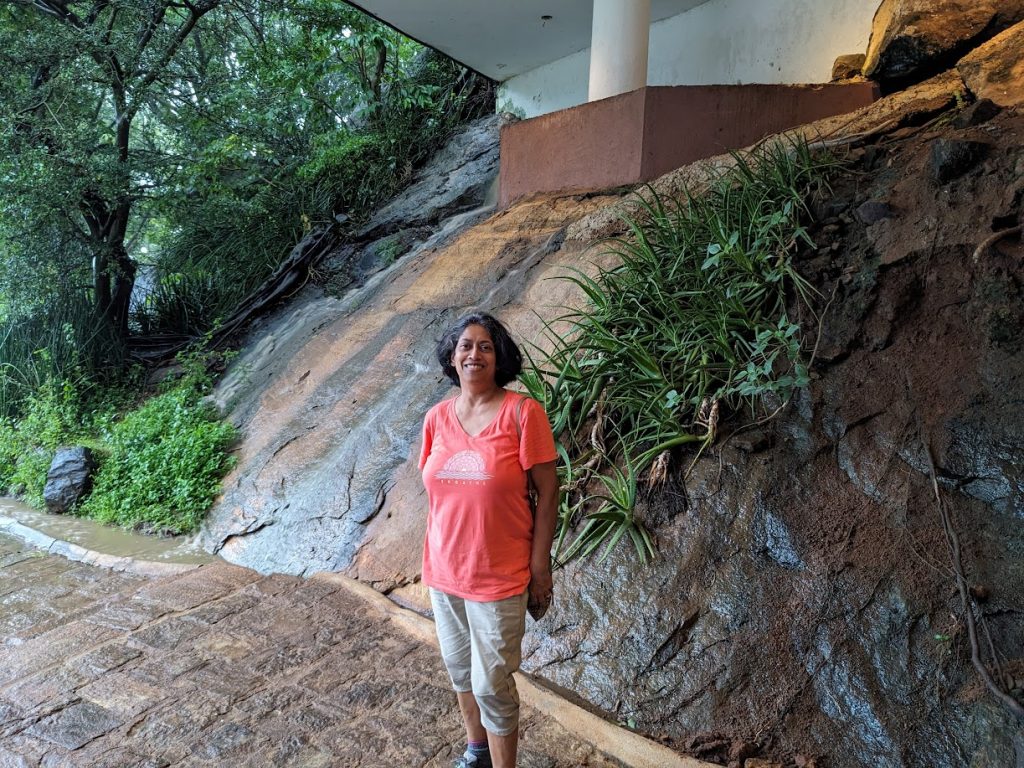
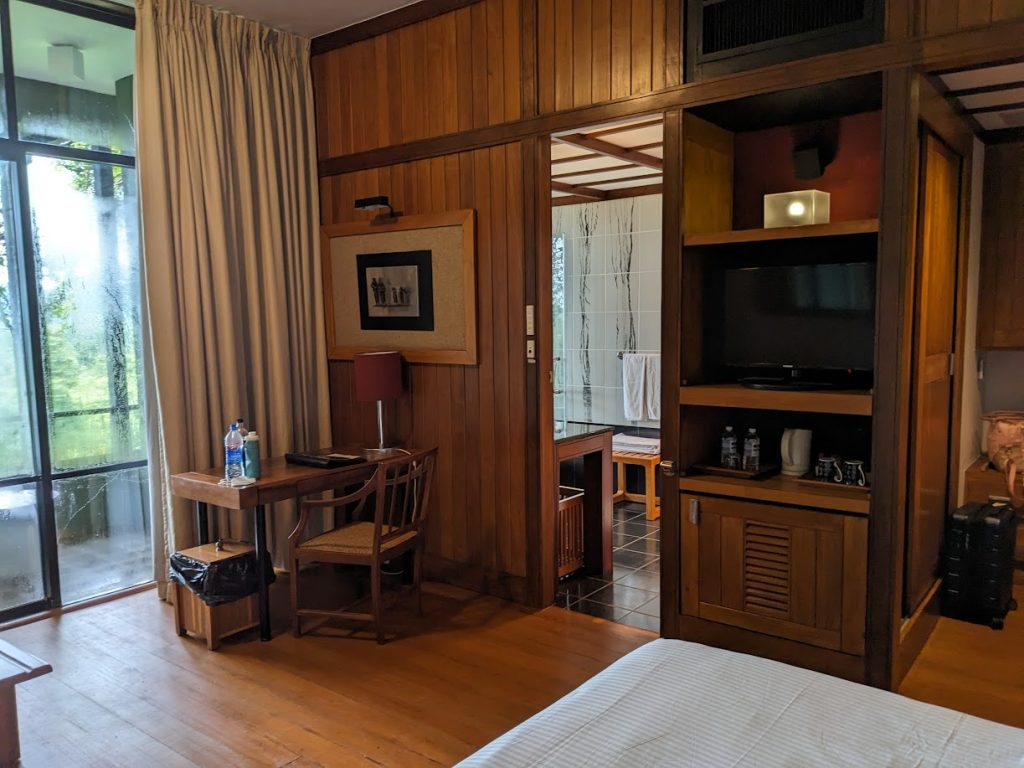
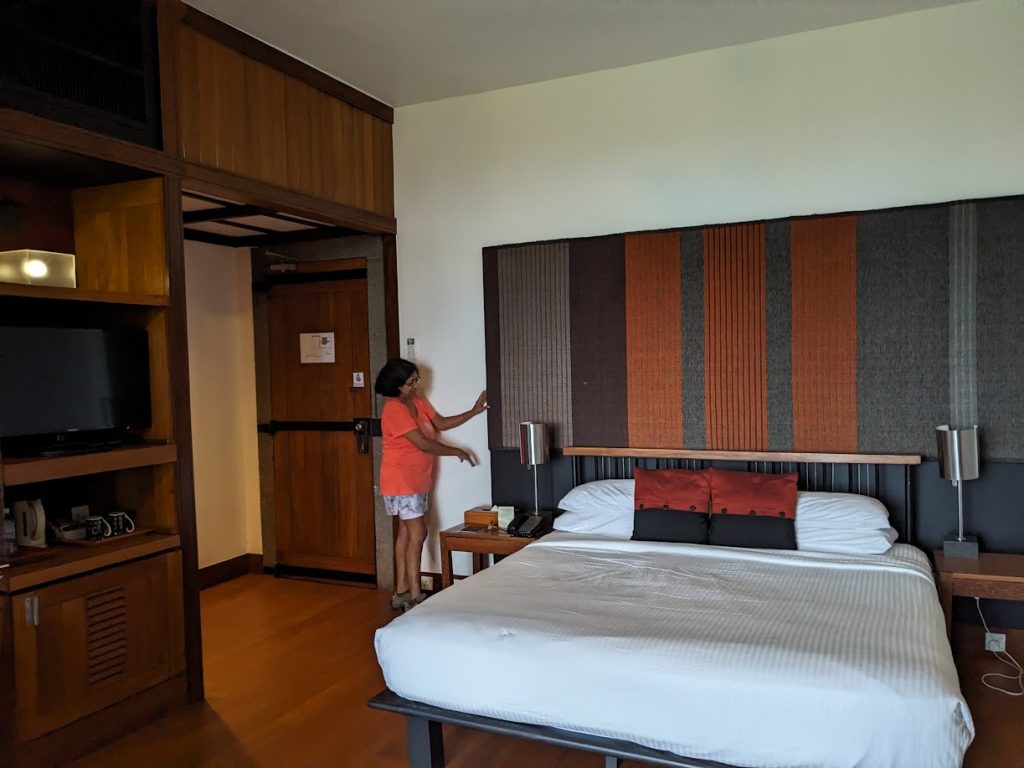
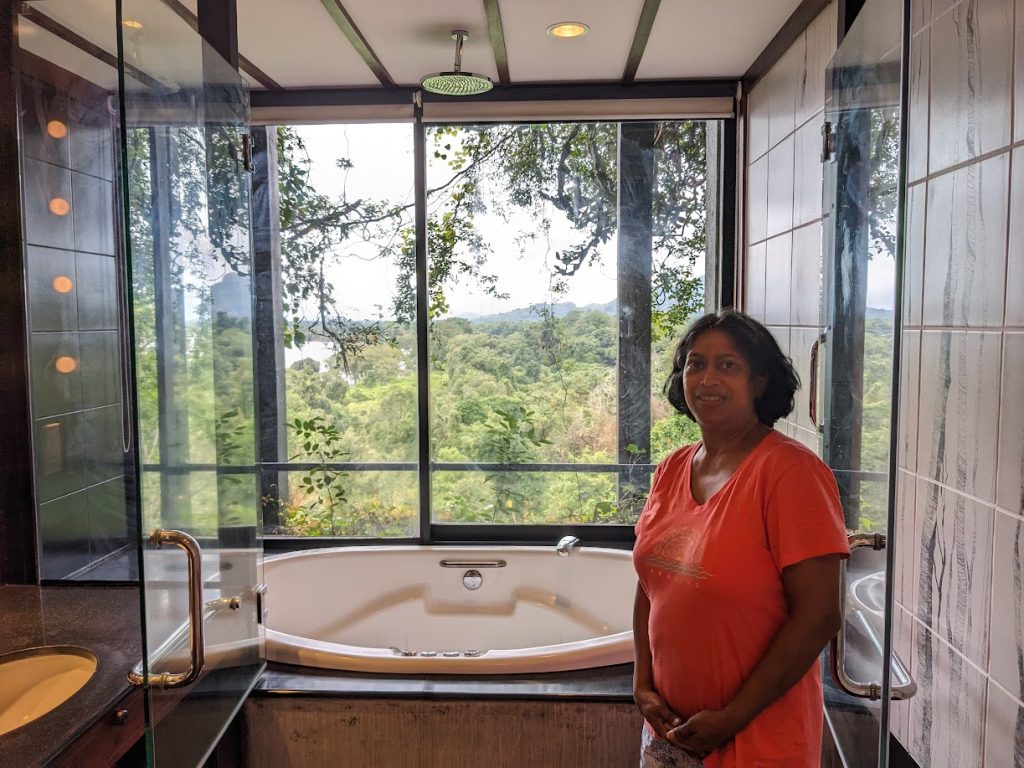
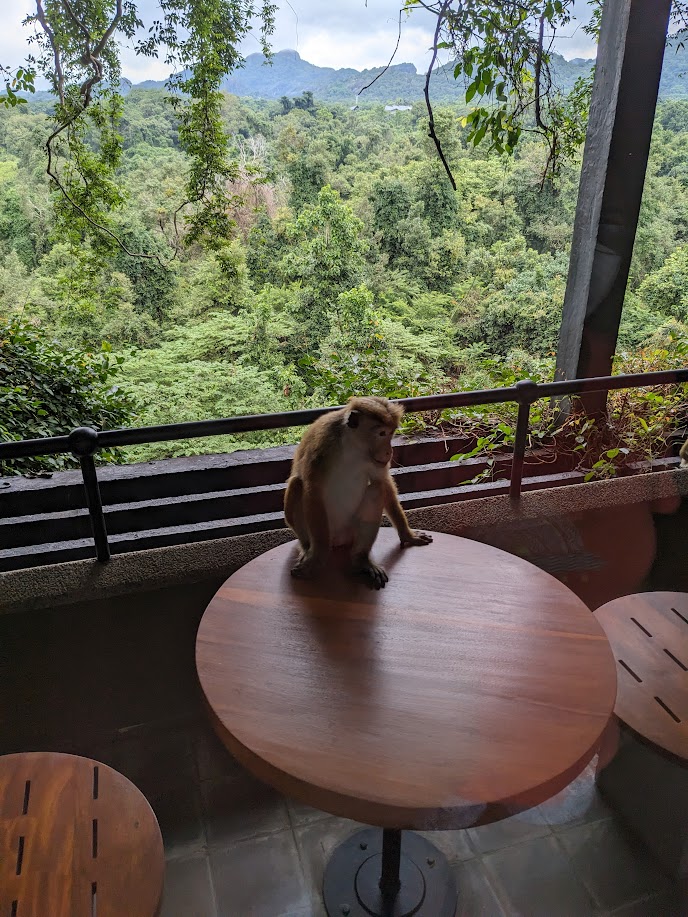
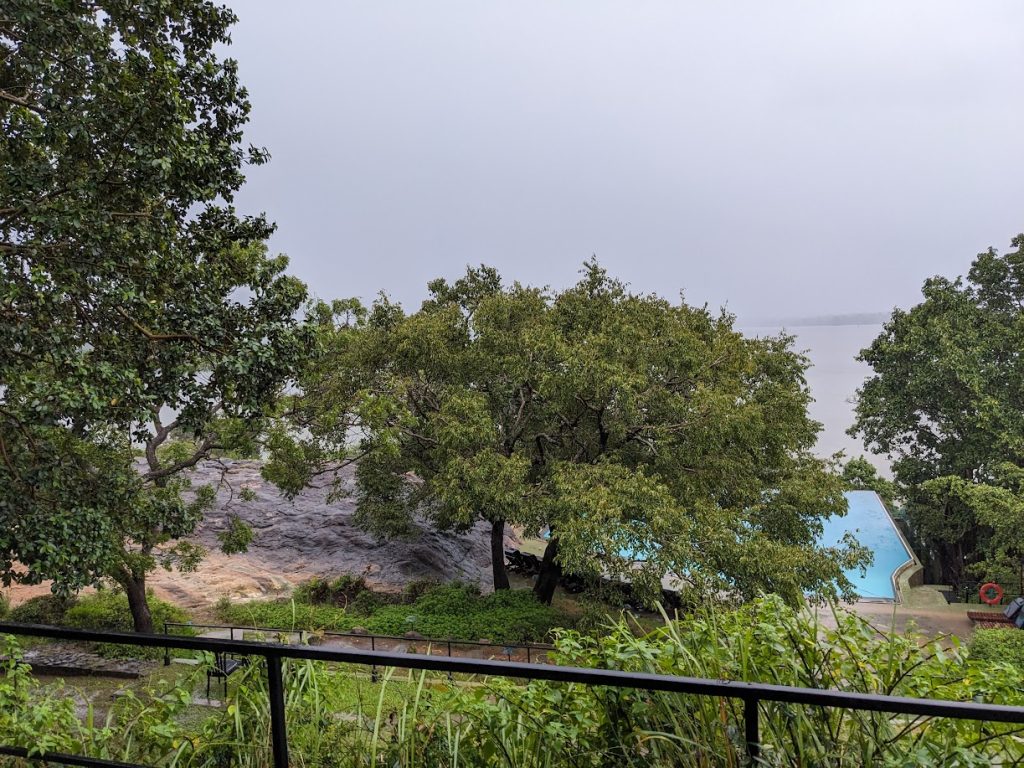
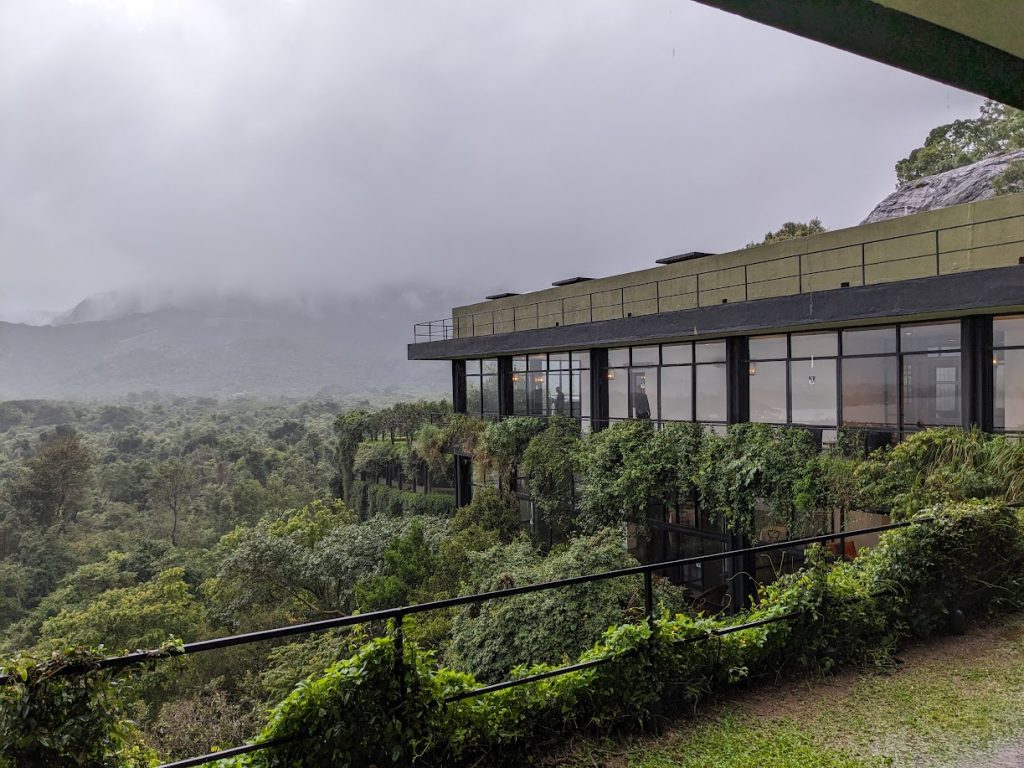
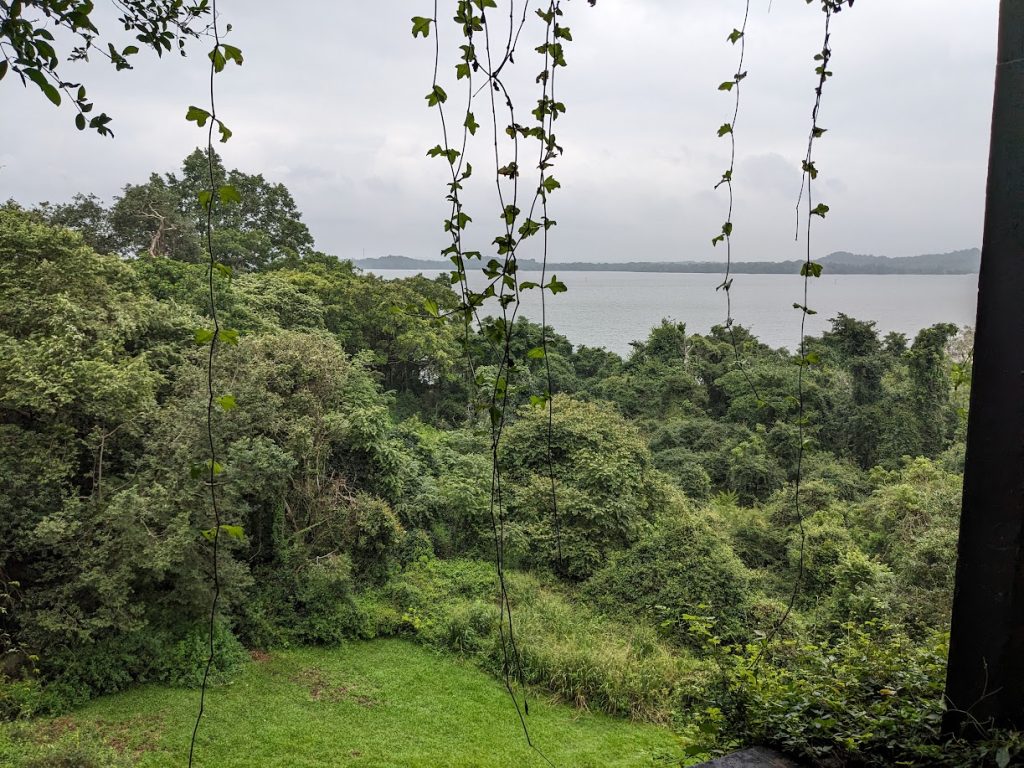
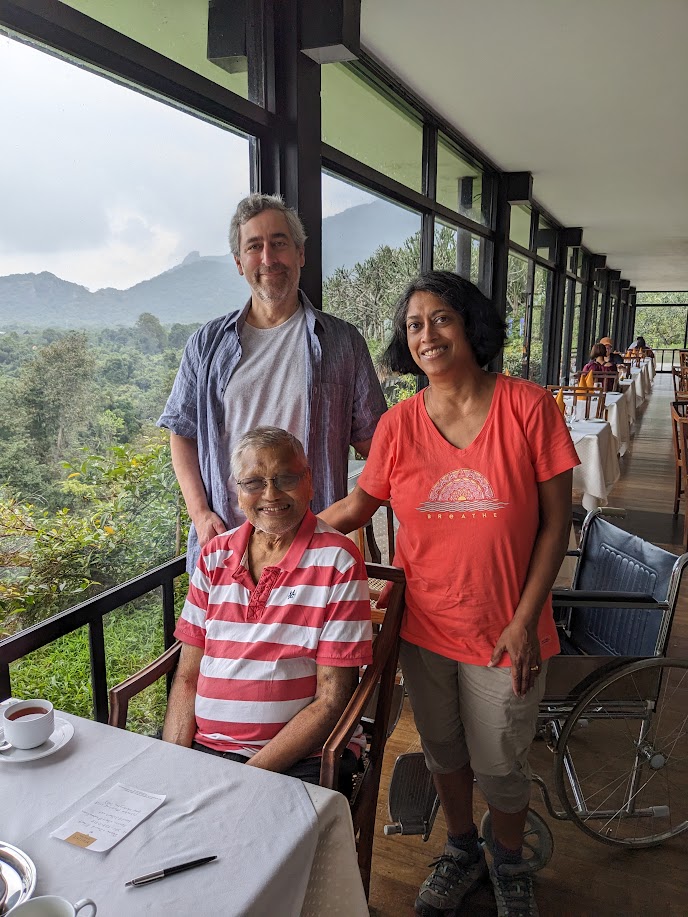
While at Kandalama, we had a chance meeting with the former chairman of the board of the corporation that built the hotel (and a whole chain of similar hotels): Prema Cooray. We had tea with him and he spent quite a long time with us; he is retired, but sharp as a tack, charming, and regaled us with the stories of how the hotel was built, the obstacles it faced (financial, political,etc.and how they were overcome). While we were at Kandalama, we experienced our only rainy day (and it was a great place to experience it); we enjoyed the hotel and spent a good deal of time talking with a delightful young artist from Bahrain (Abdulla Buhijji).
Our plans changed a bit due to the rain, so from Kandalama, we traveled to a nearby hotel: the Cinnamon Lodge in Habarana. Cinnamon Lodge is another highly rated hotel, and if we hadn’t just come from such incredible hotels, would have been impressive. As it was, the lodge felt a bit dated and even though it was actually very pretty. We took a dip in the pool and chatted with two nice British pensioners and the food was quite good. The rooms were reasonably spacious, but were set up as bungalows some distance from the main hotel; like many more traditional Sri Lankan settings, the rooms were air conditioned, but the bathroom was open to the air and overall, it just couldn’t compete with Kandalama.
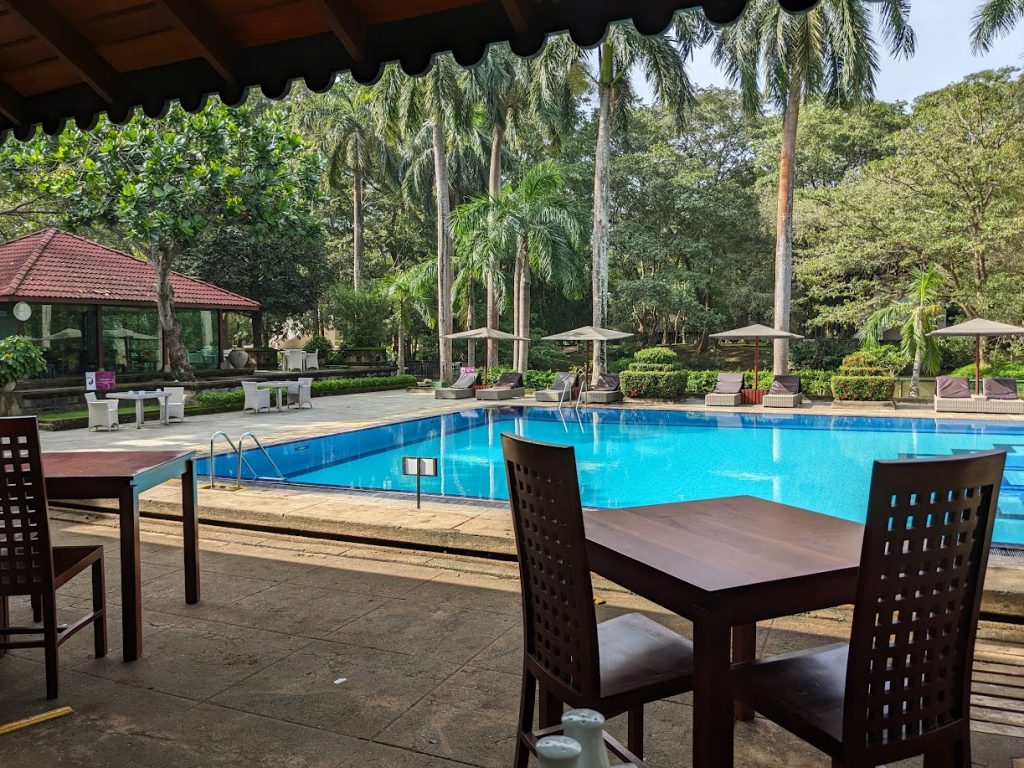
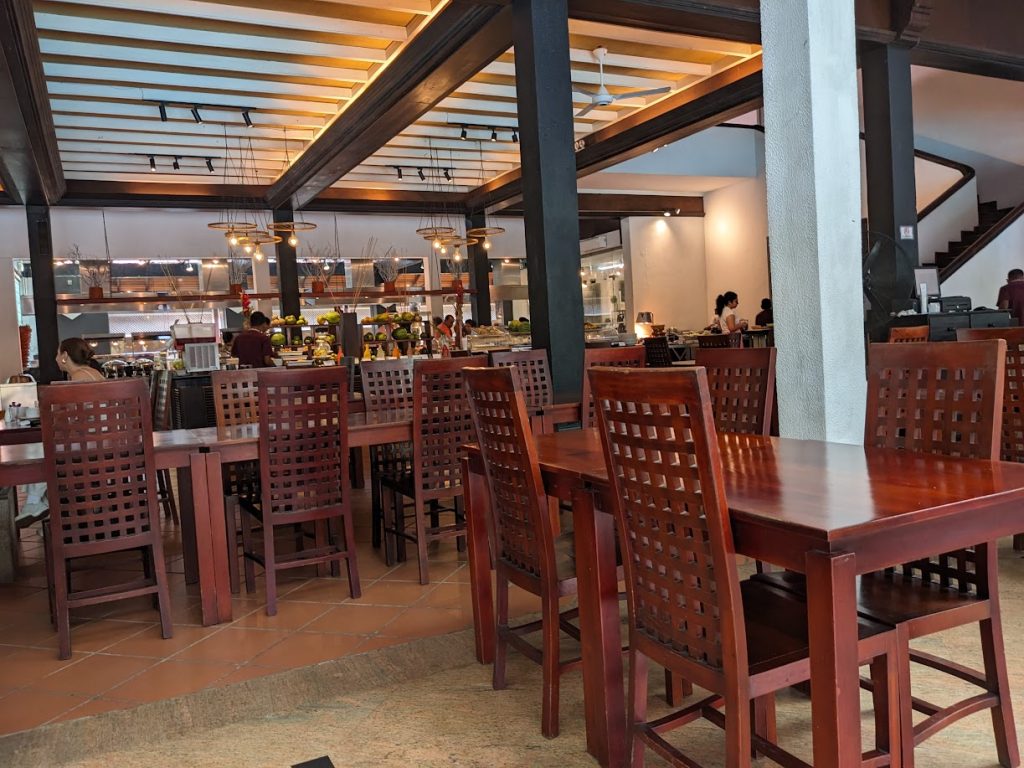
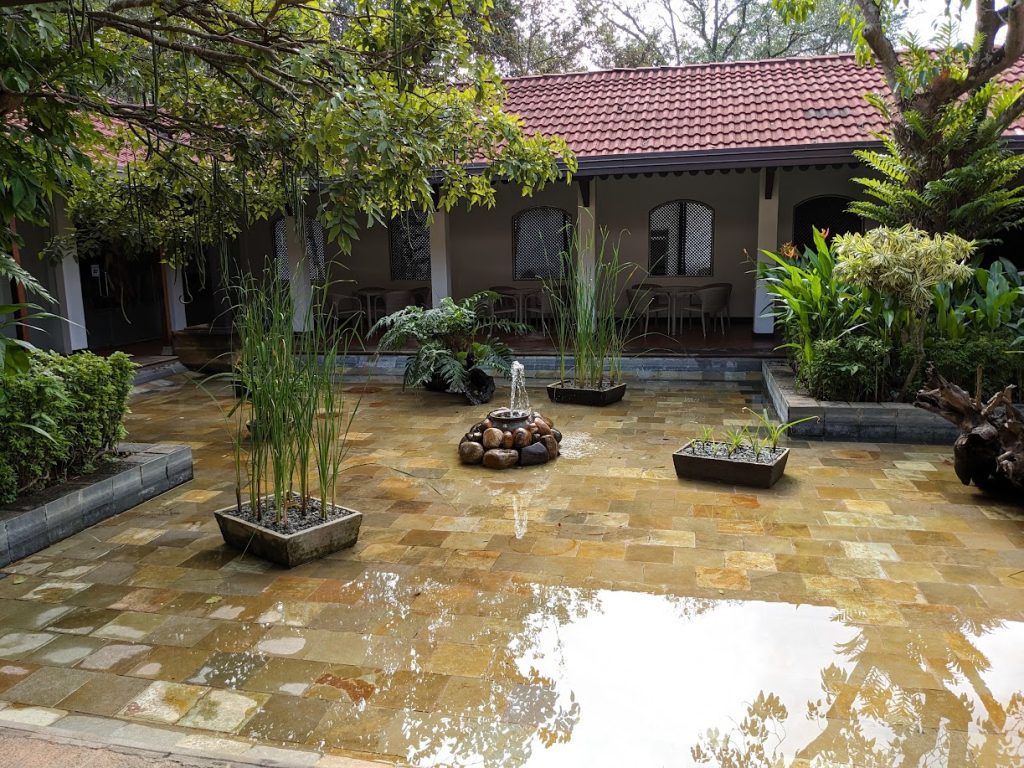
From Habarana, we visited Sigiriya, another UNESCO World Heritage Site. This too was spectacular: the site of an ancient palace built atop a massive rock surrounded by water gardens. The gardens around Sigiriya are still being excavated, but they are both beautiful and amazing feats of ancient engineering. The earliest activity at Sigiriya was 3rd century BCE and the palace was built in the 4th century CE. As was recommended, I paid (a very small amount) for a guide who was knowledgeable and explained the detailed history of the site as we traveled through it. He was extraordinarily patient with me as I trudged up the 1200 steps (foolishly having gone around noon when it was pretty warm), having to stop several times. The guide does the climb several times a week and was a cardio-god, not even breaking a sweat. The climb is 590′ (59 stories) pretty much straight up…so it will give you a workout. It’s also not great for anyone with even a slight fear of heights. There are several important sites on the climb that did not permit photography including the famous maiden frescoes and mirror wall.
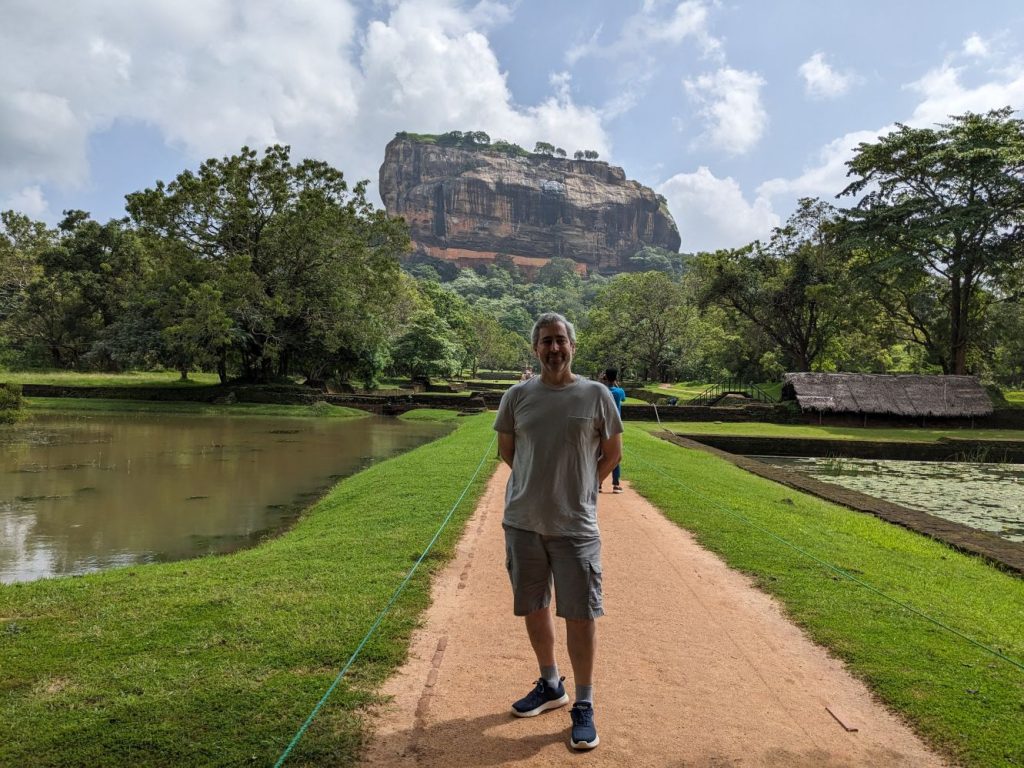
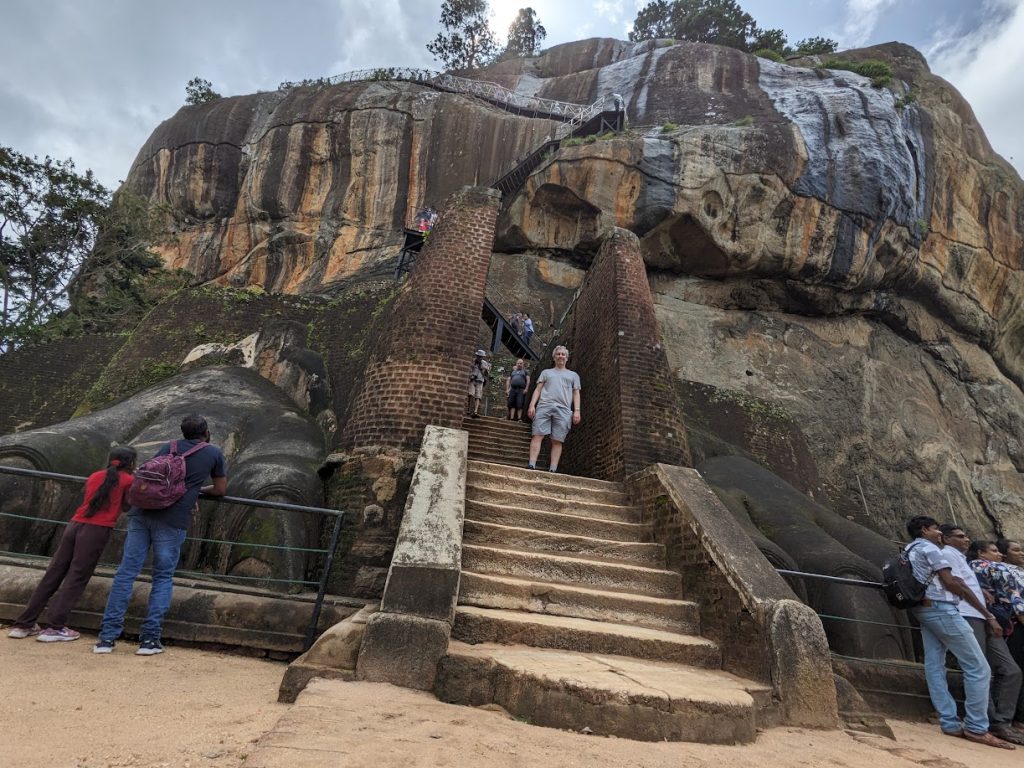
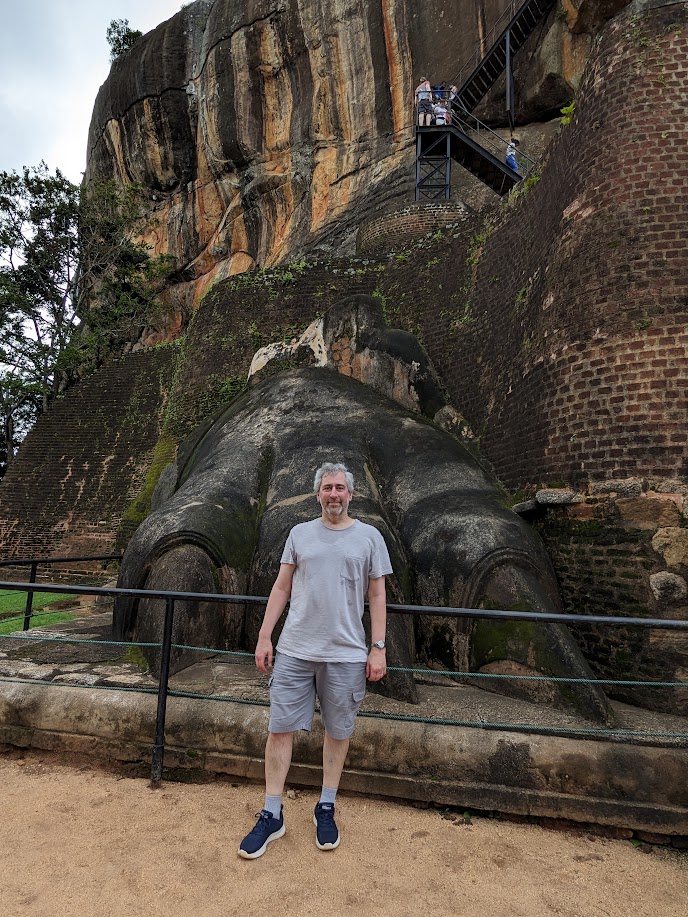
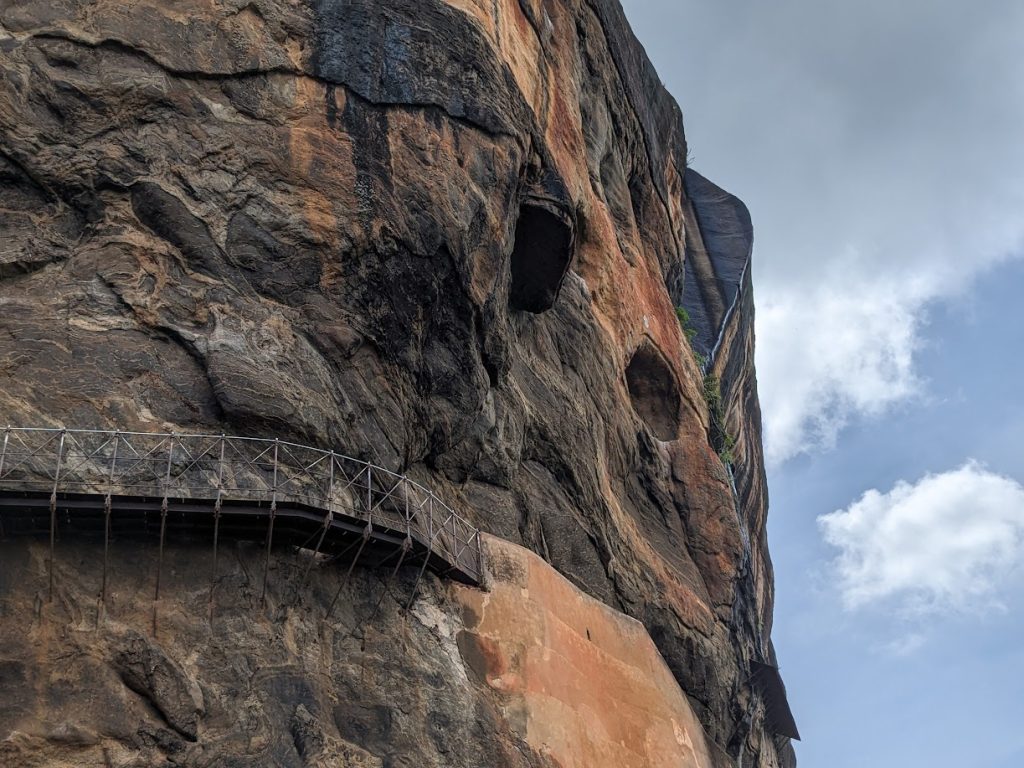
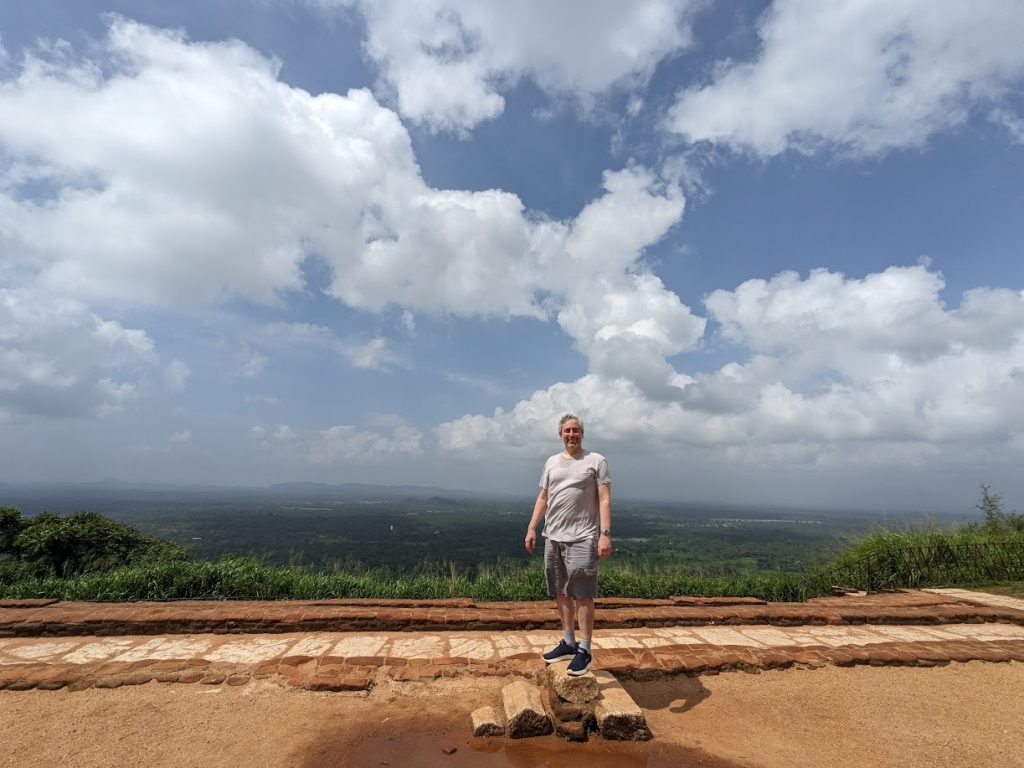
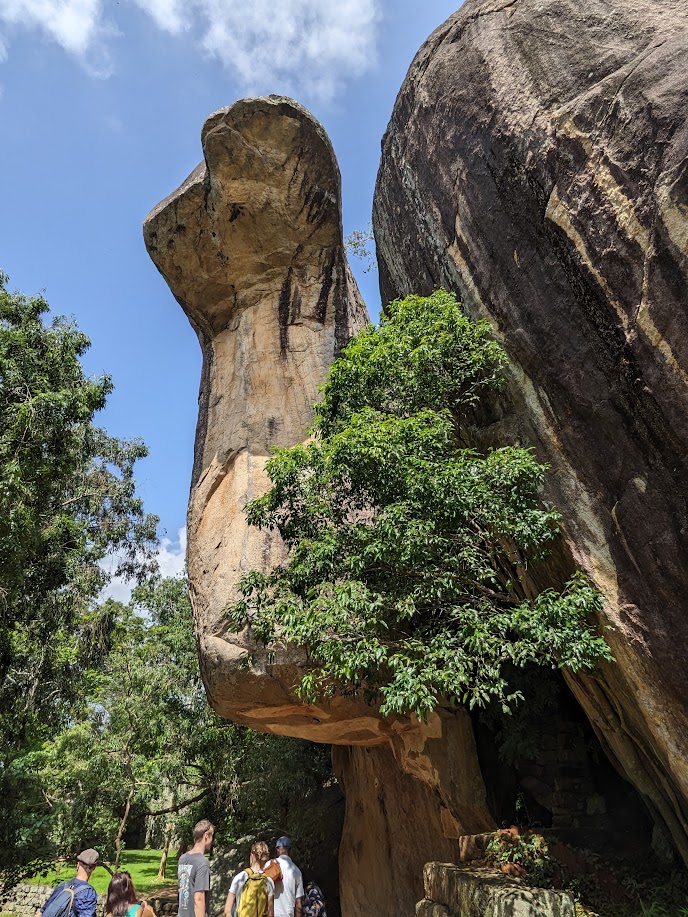
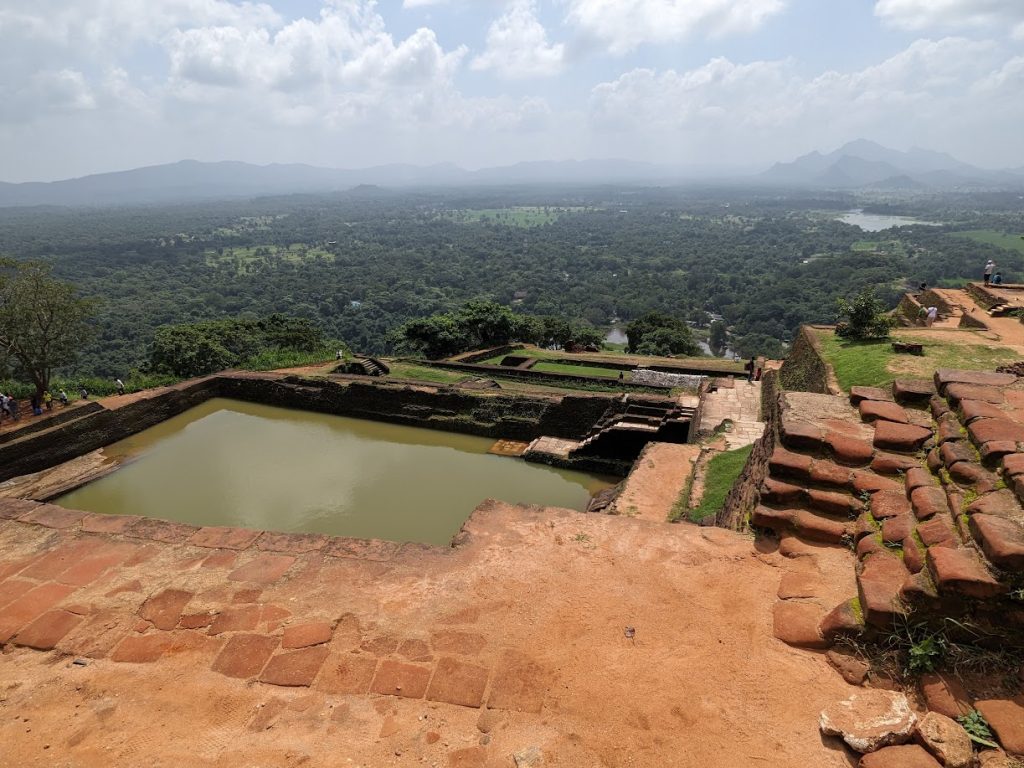
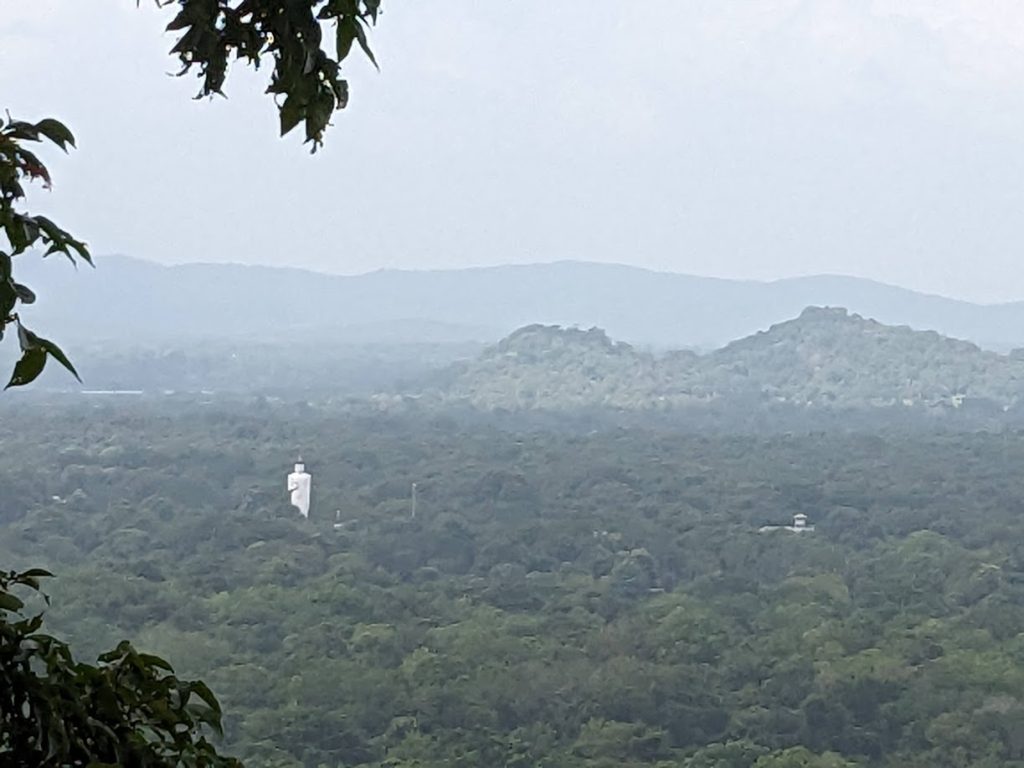
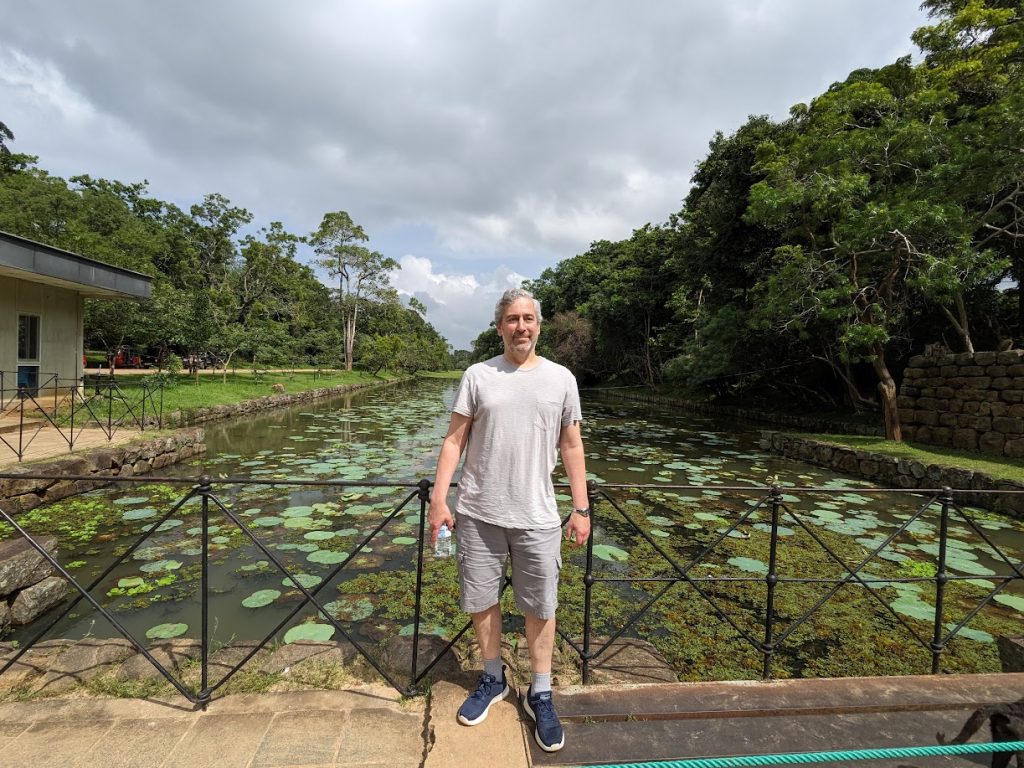
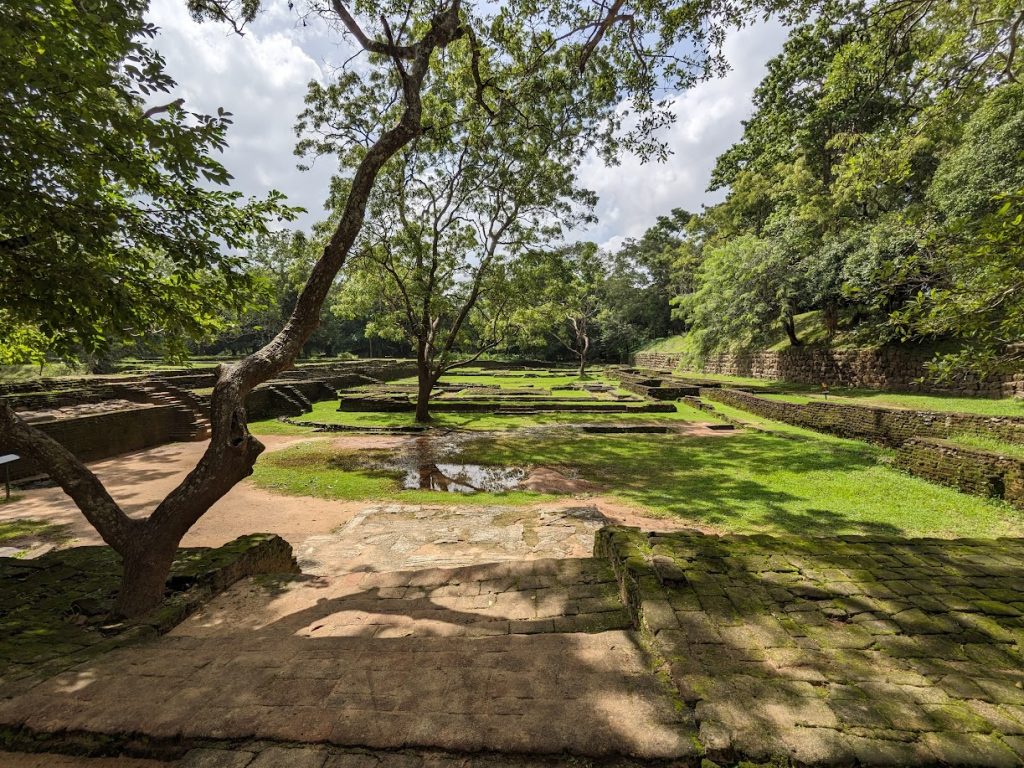
After Sigiriya, Amal arranged a safari through a nearby nature preserve the objective was to see elephants and it very much delivered.
It’s hard to convey just how beautiful the scenery is in Sri Lanka.
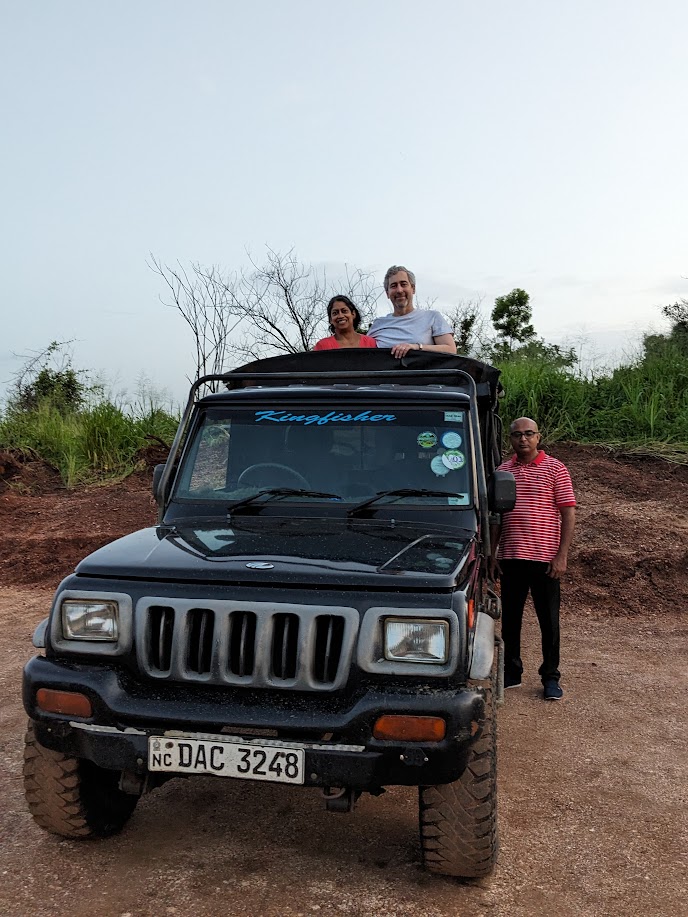
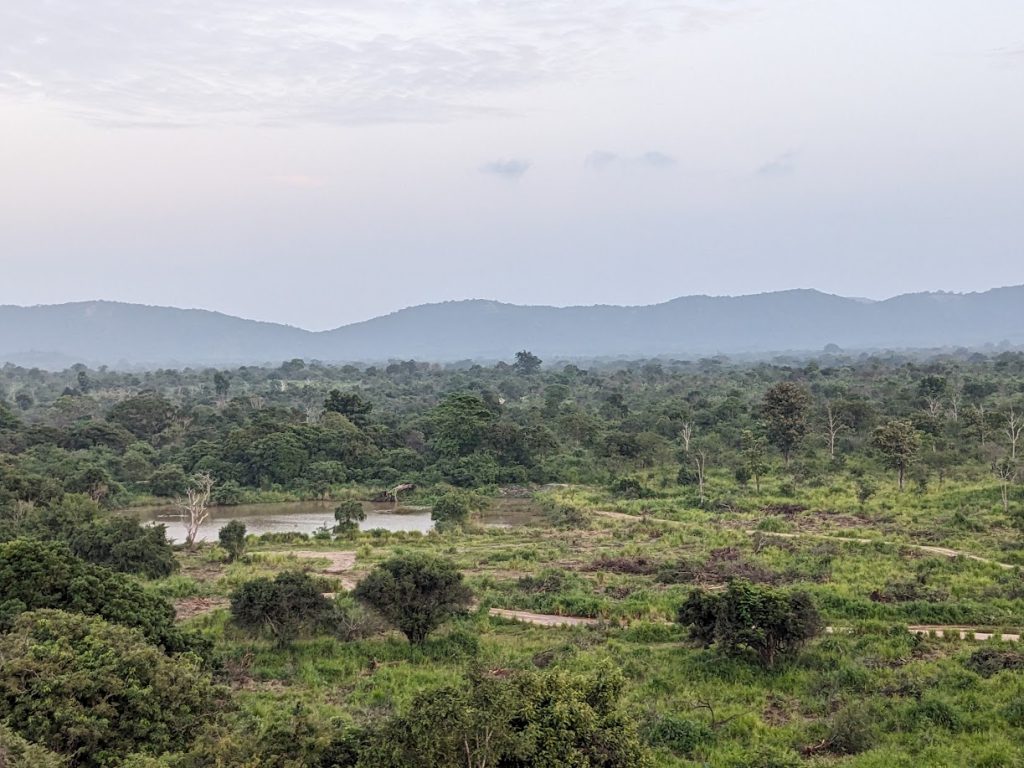
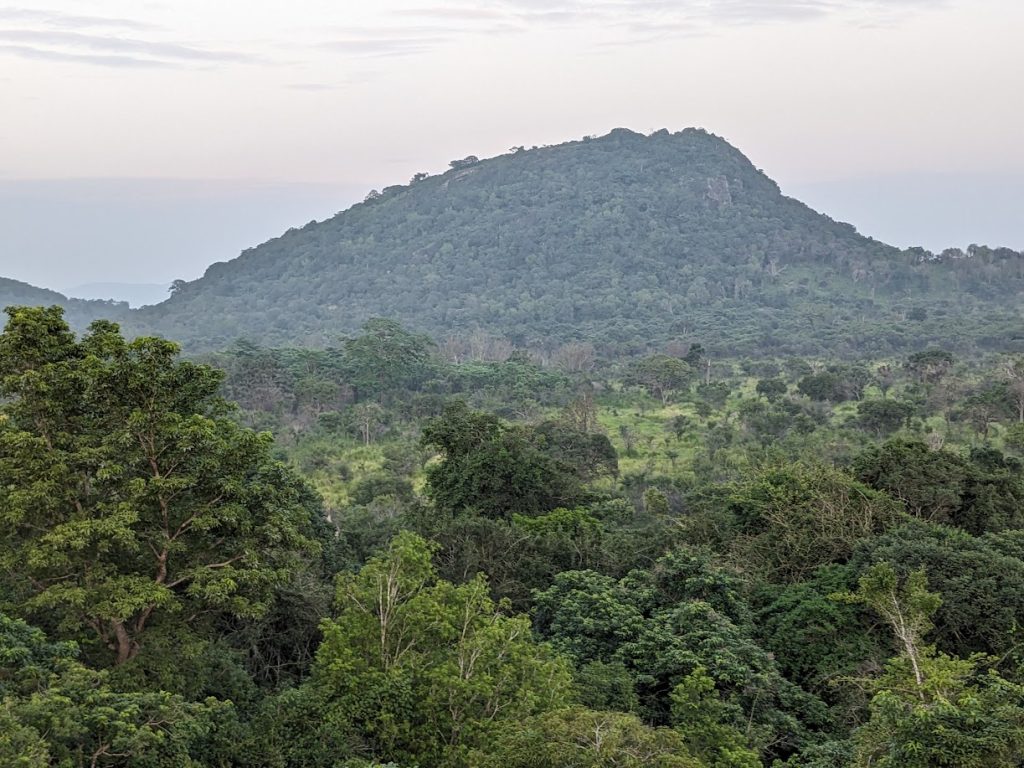
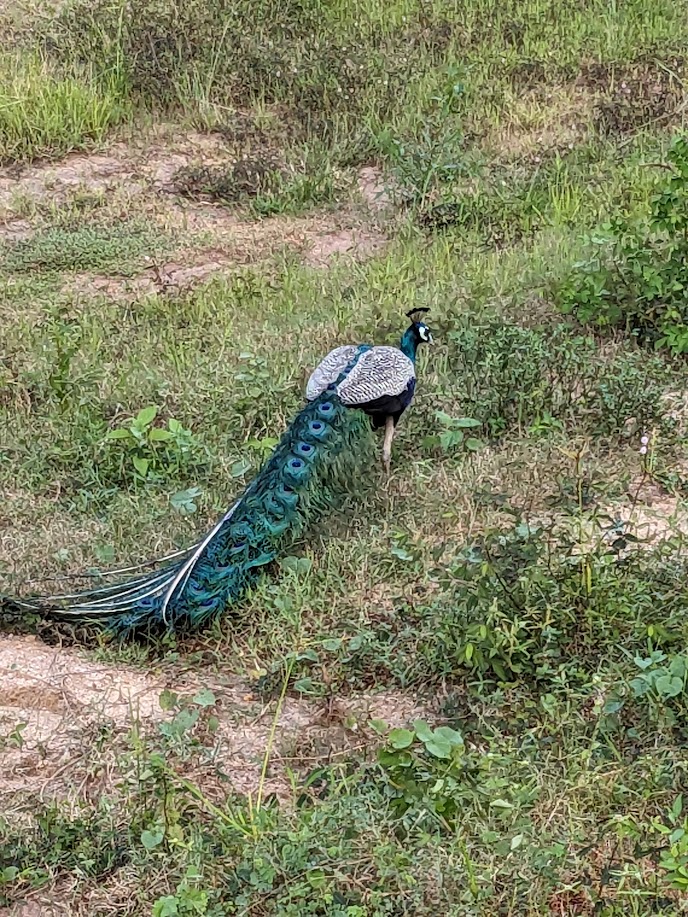
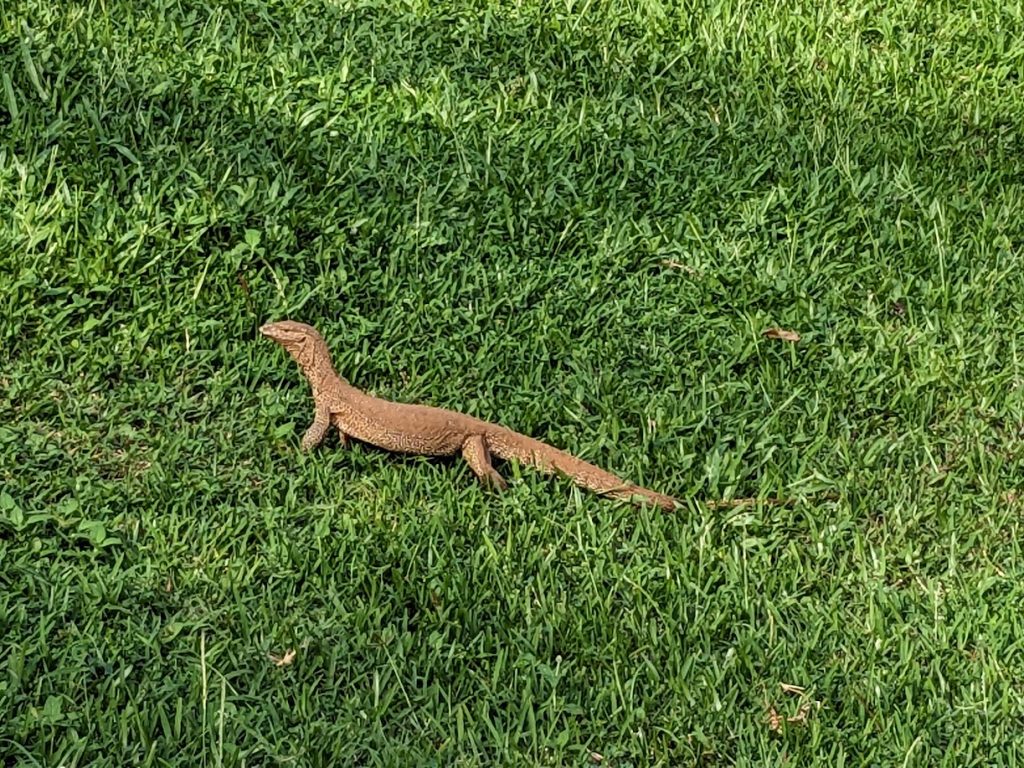
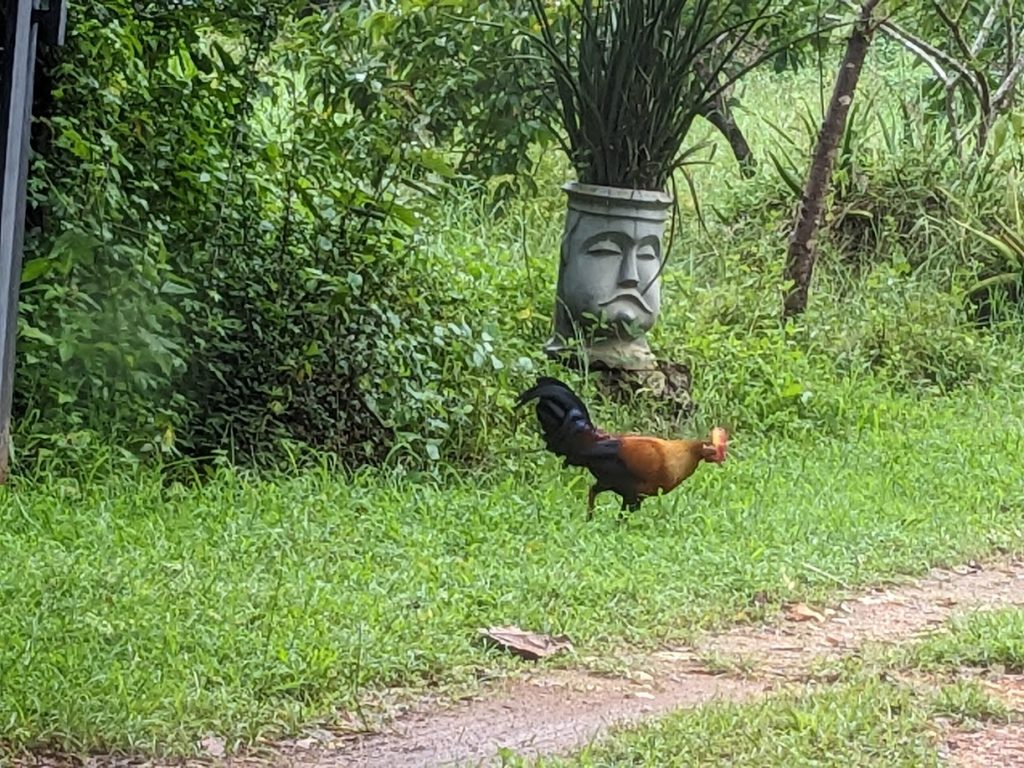
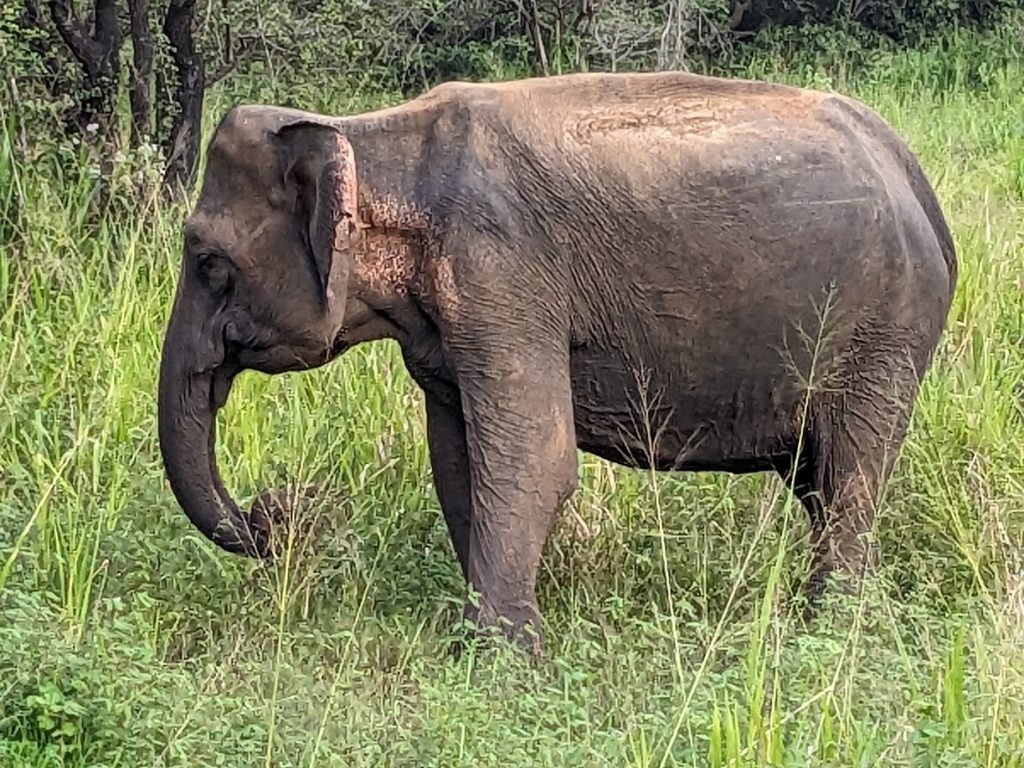
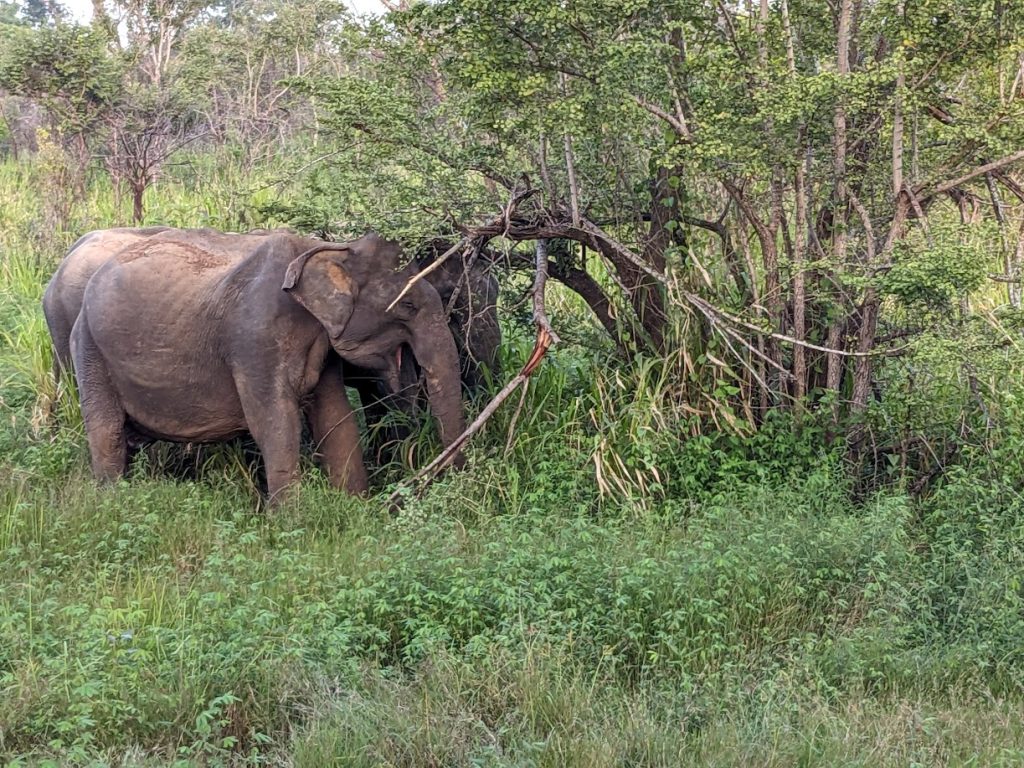
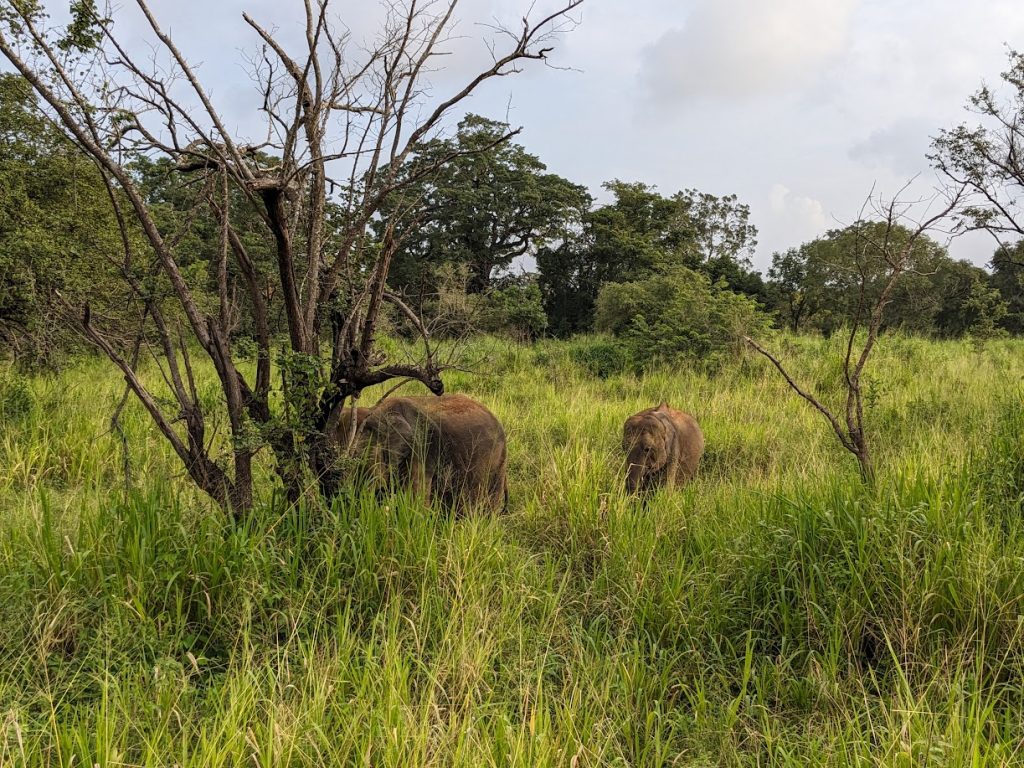
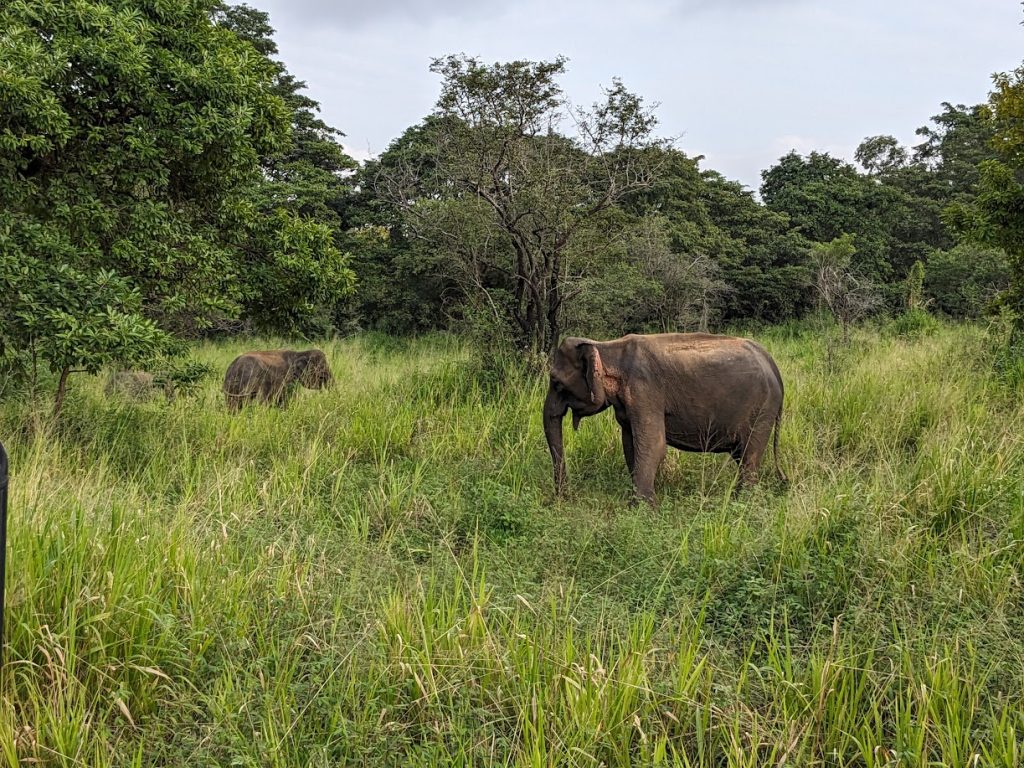
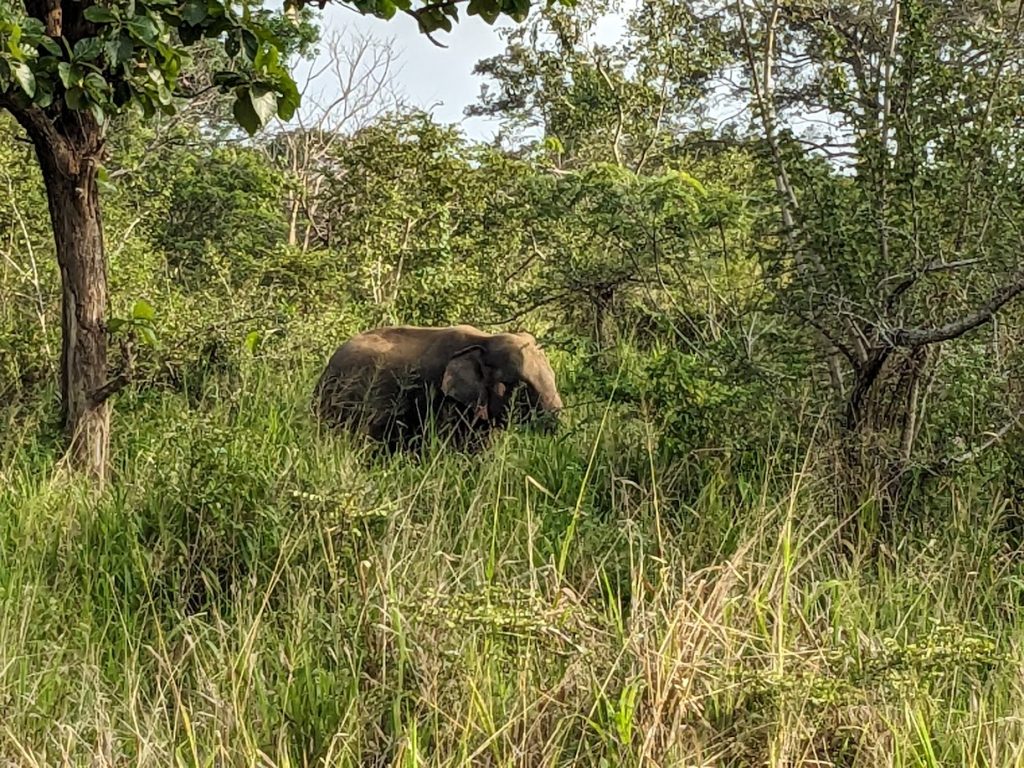
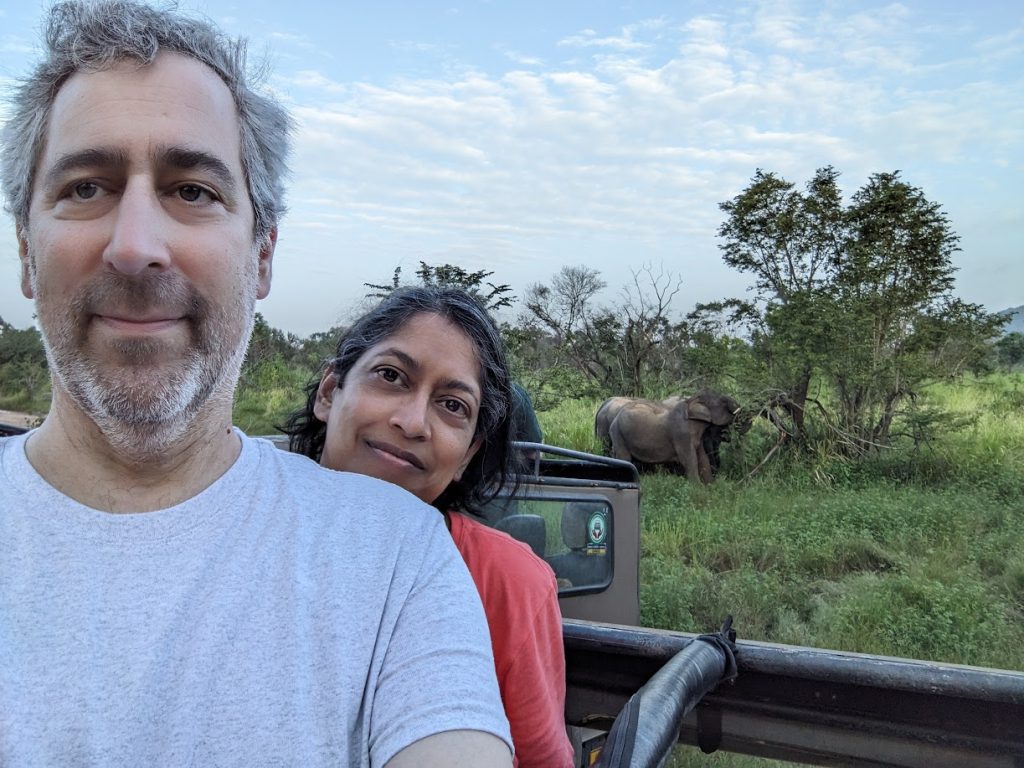
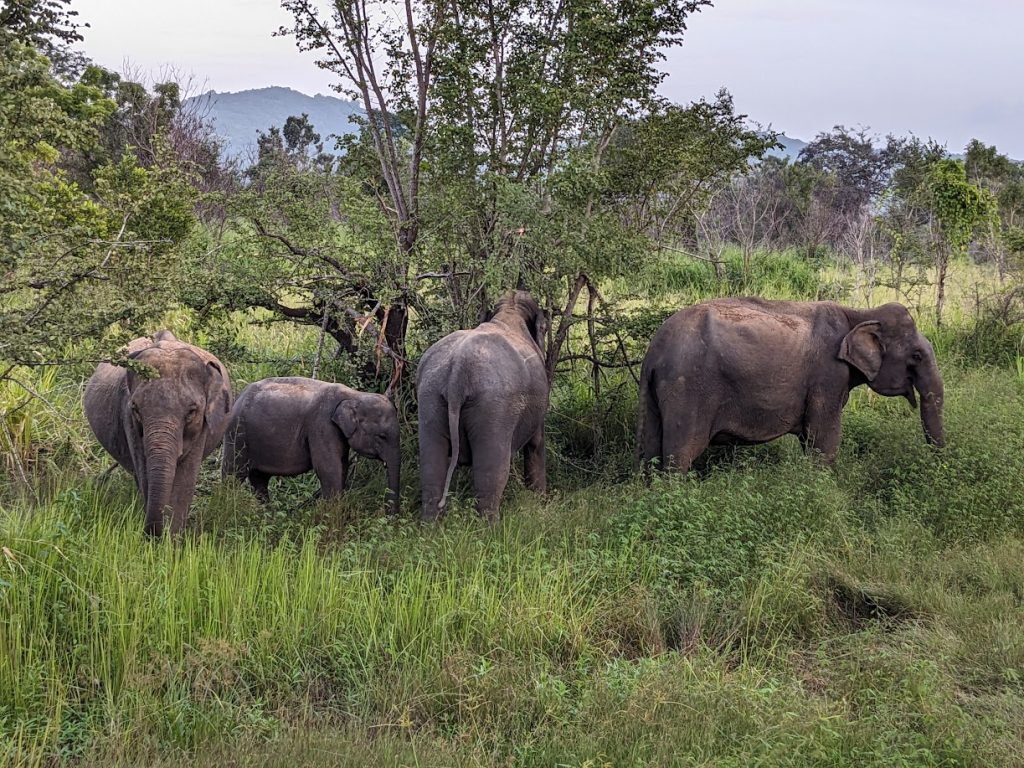
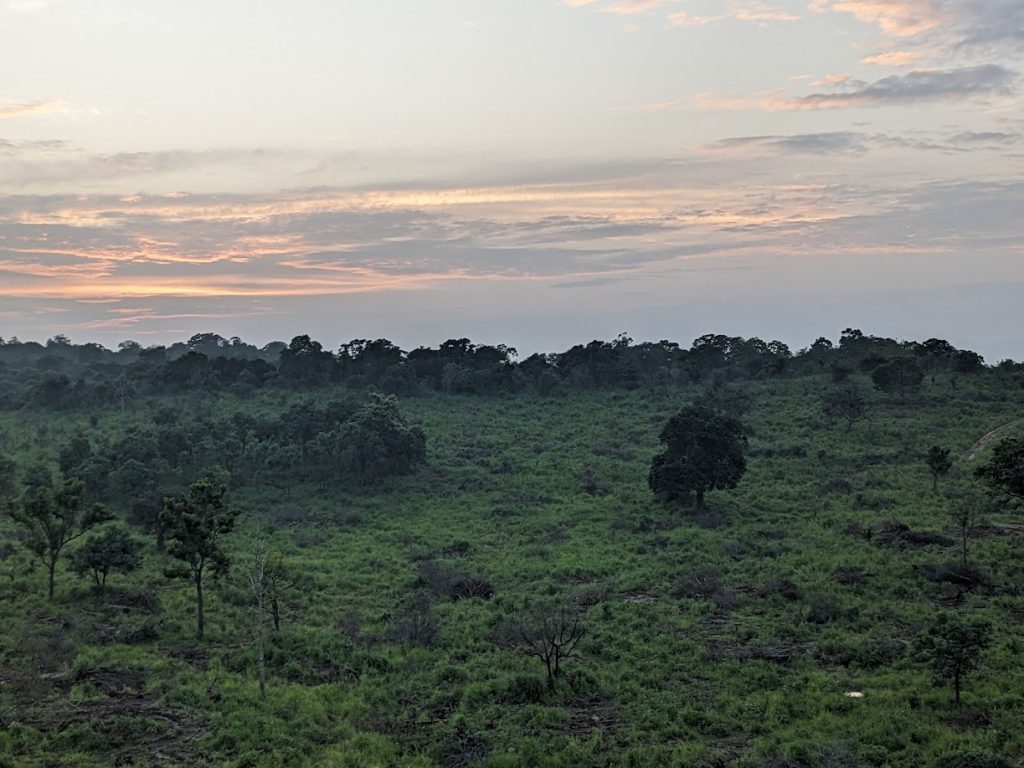
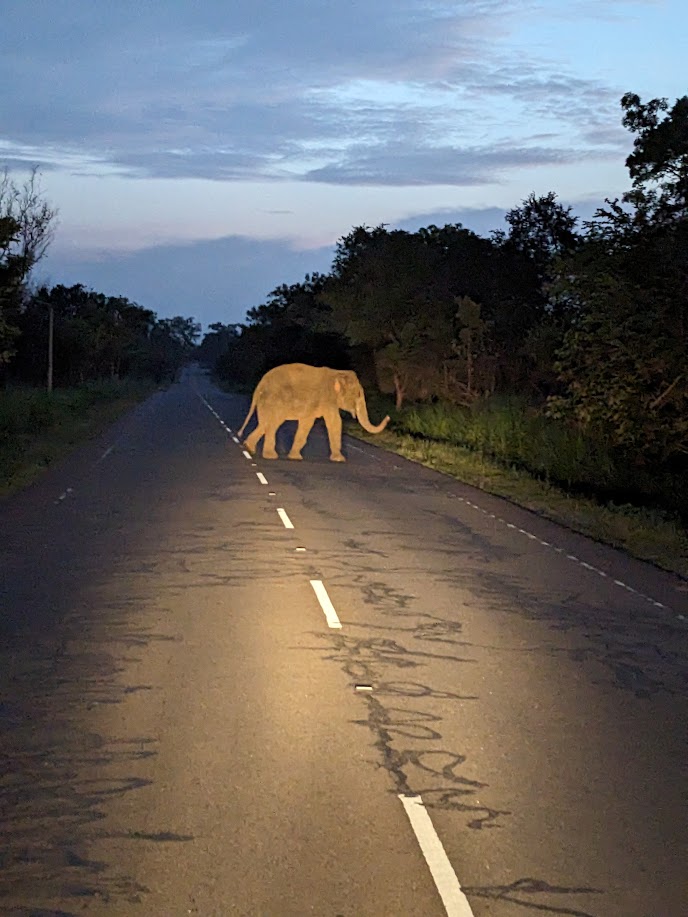
…and I will never again complain about deer in the road; this is what a road hazard looks like in Sri Lanka and it is not uncommon. I think the safari was one of the high points for Deana; we saw a ton of wildlife. Like so many things, the safari was arranged on very short notice by Amal. Having a private driver is like traveling with your own travel agency. Everywhere we went, Amal knew the hotels, sites, people, and could arrange whatever we wanted at a moment’s notice, usually for much less than we would have paid if we booked them ourselves.
From Habanara, we moved on to Anuradhapura, one of the 3 ancient capitals of Sri Lanka (along with Kandy and Polonaruwa). Unfortunately, we didn’t get to Polonaruwa due to rain and concerns that some roads might have been flooded.
In Anuradhapura, we stayed at very different lodging: the Arachchi Heritage. This is a private home with two separate, private guest suites and a staff that makes it effectively a boutique hotel. The house is spectacular, like something out of Architectural Digest. It is on a lake and its design, in many ways, reminded us of Kandalama: tightly integrated with nature. The positioning and design of the house capture a constant breeze so even though many parts of the house are open to the outdoors, they remain cool even on a hot day. The house won a Geoffrey Bawa design award. The owners: Chandrika and Siri were charming and wonderful hosts. The food was outstanding, every bit as good as the 5-star hotels and made to order!
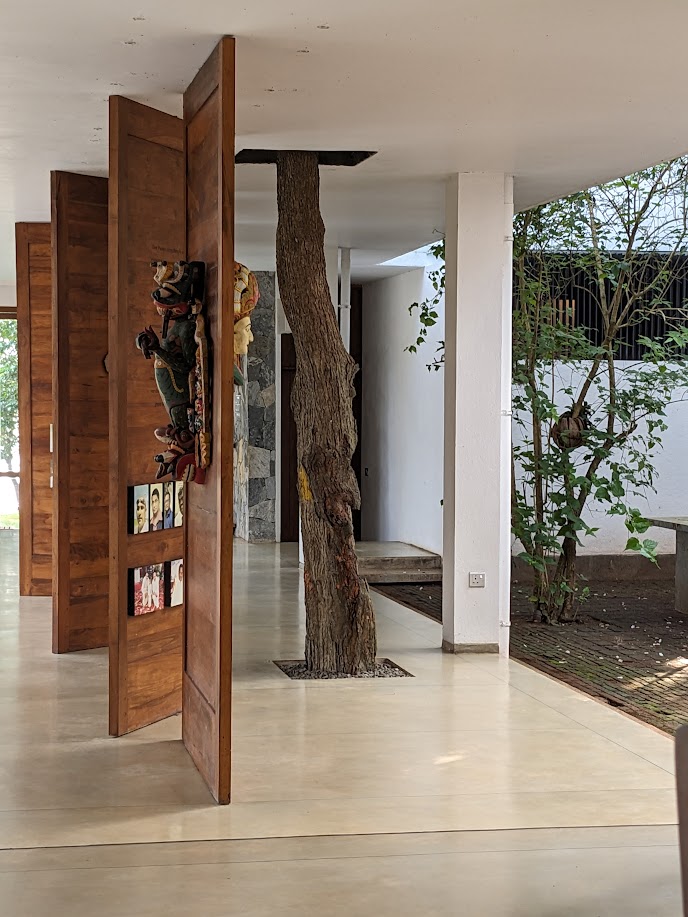
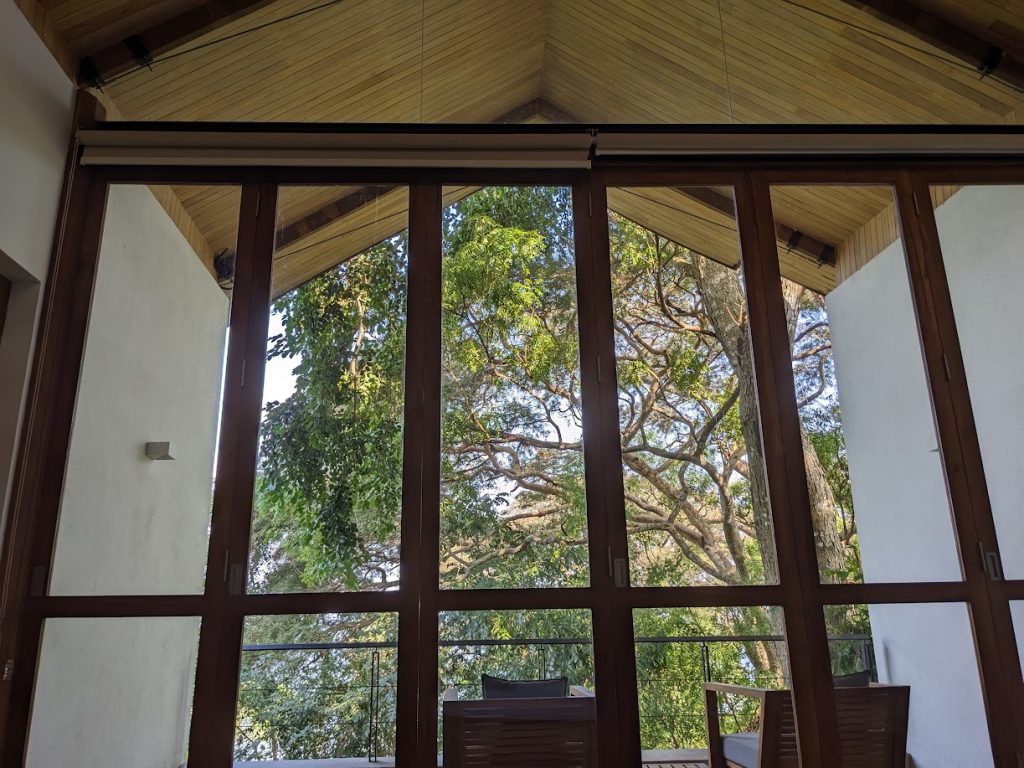
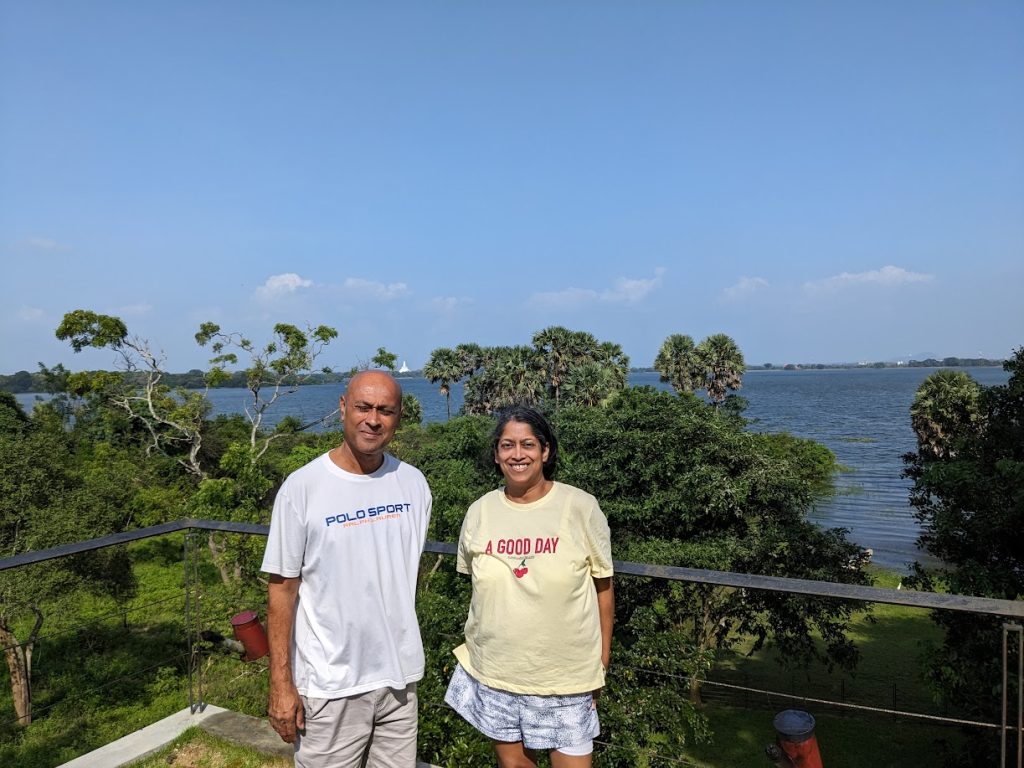
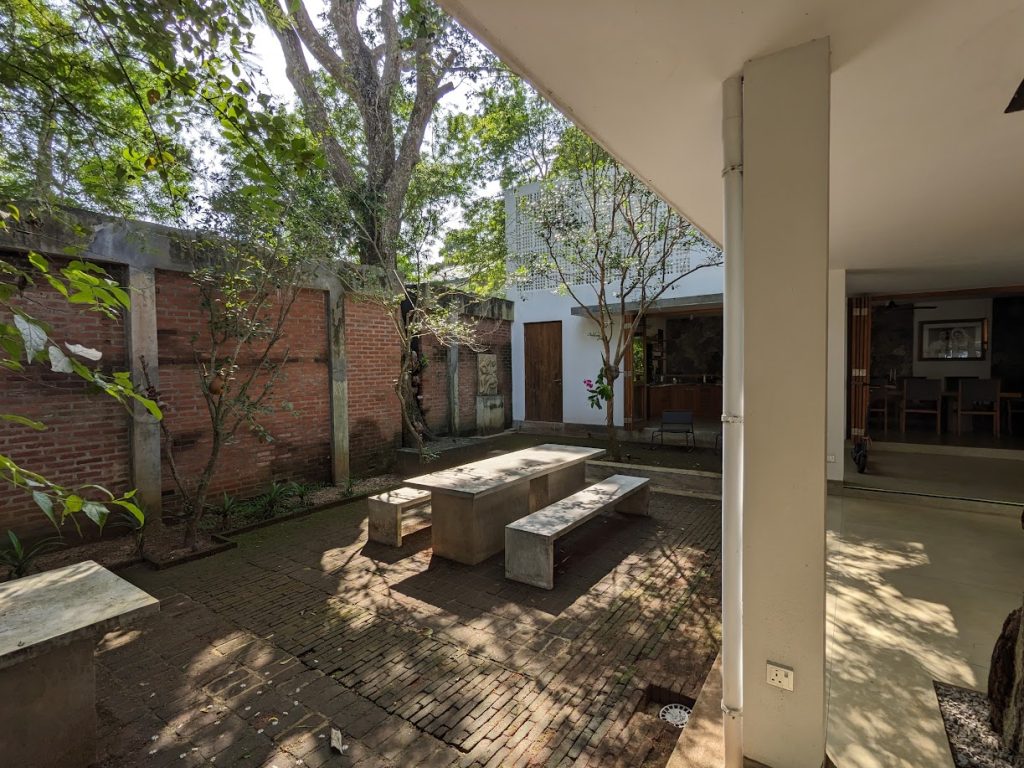
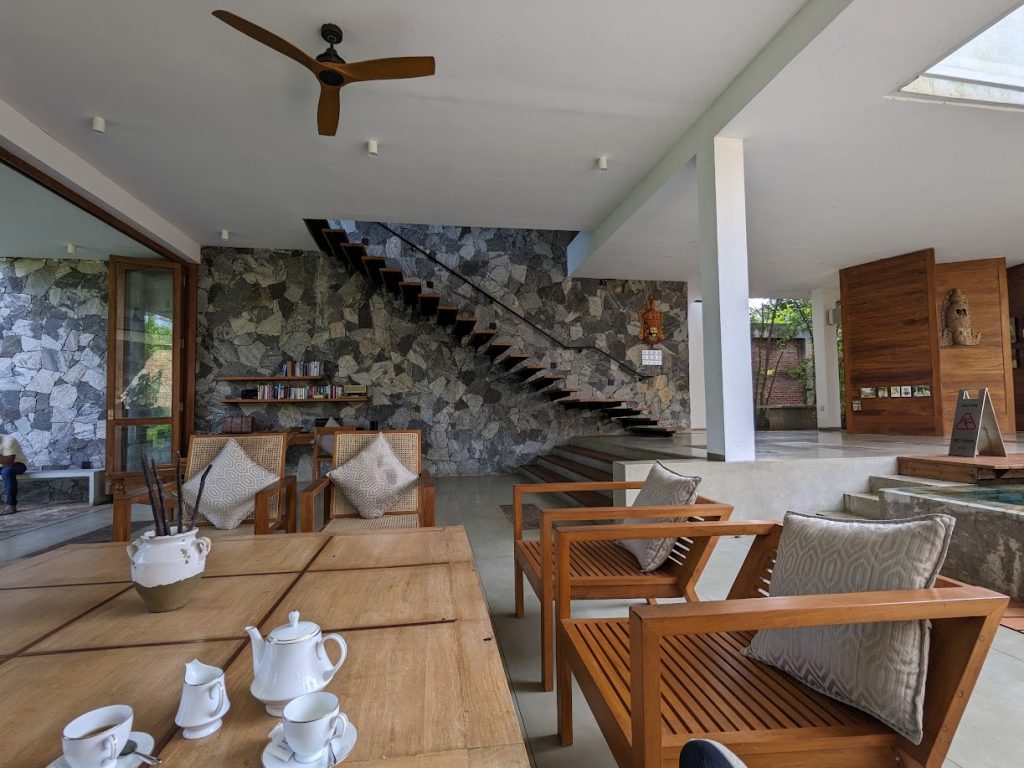
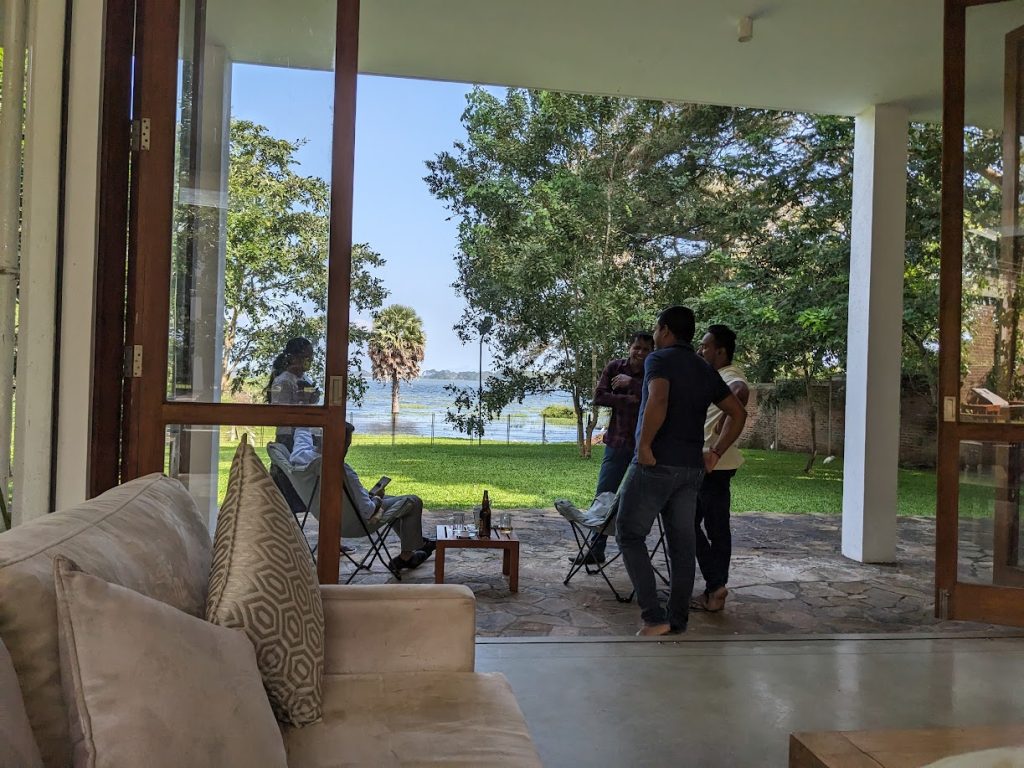
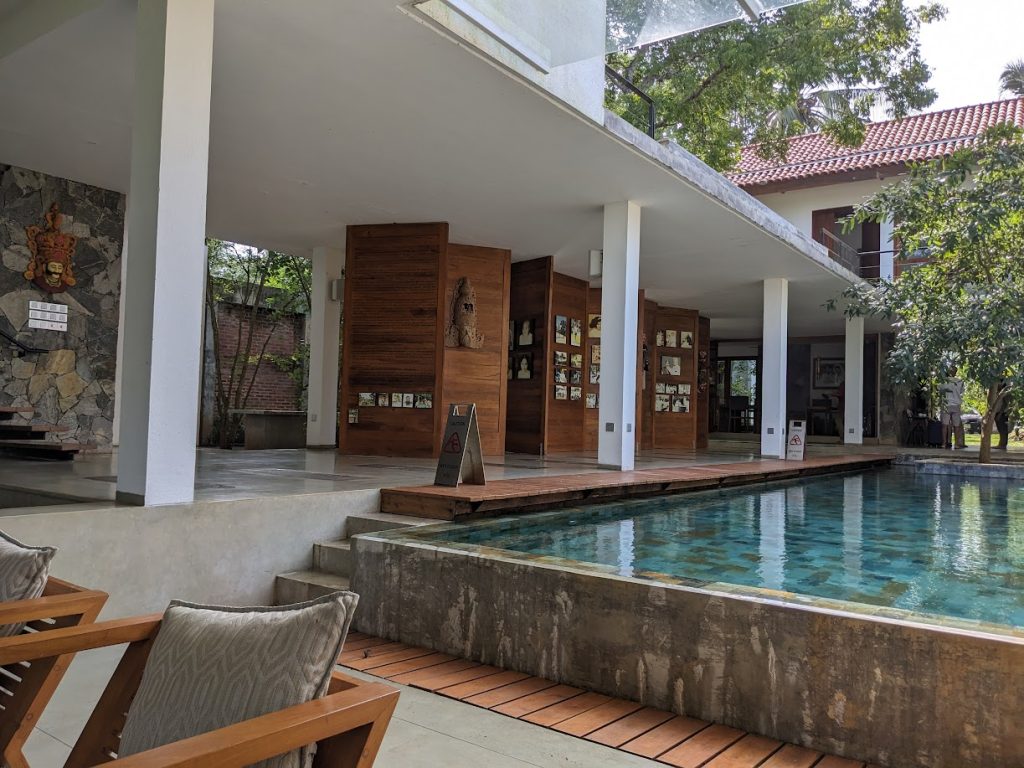
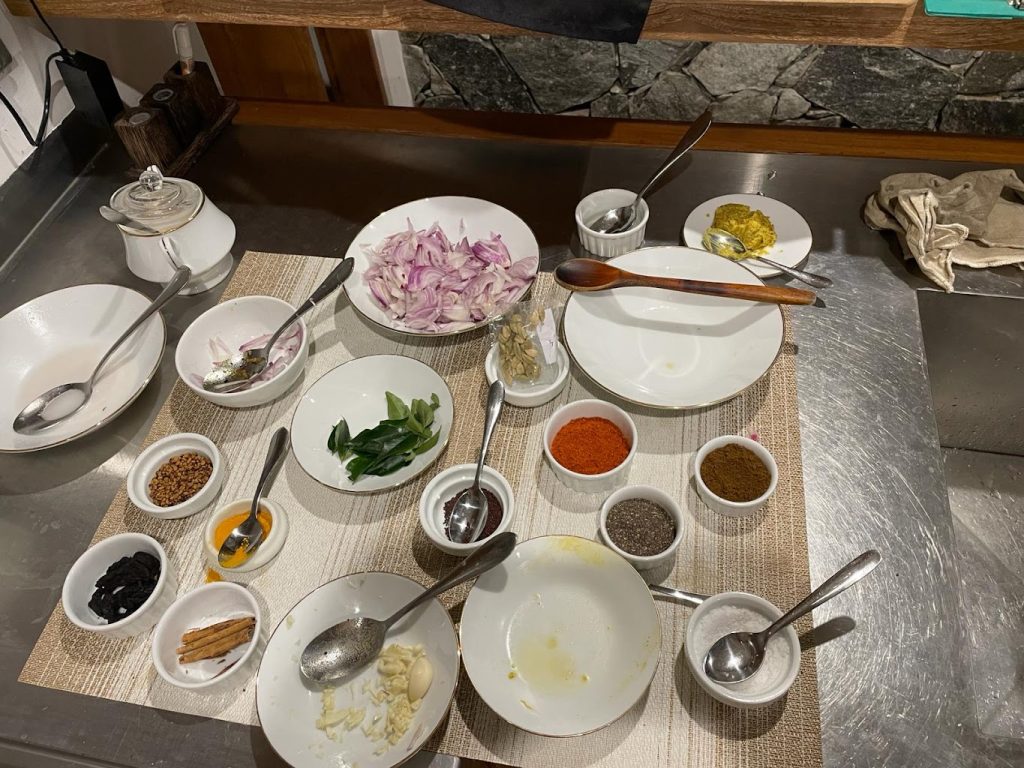
While staying at Arachchi, Deana took a cooking lesson given by Chandrika and the in-house cook. The food was really delicious and I couldn’t believe how many dishes were prepared each meal for just two guests. The food at all of the hotels was just amazing; I had hoppers for breakfast every day, often along with pittu and idli. For lunch and diner I had Sri Lankan roti and all sorts of curries: dal, banana blossom, beet, snake gourd, and more.
We visited the extensive Anuradhapura archeological sites and museum. This was the site of an ancient capital and center of education and monastic knowledge. 5000 monks lived on 500 acres with extensive housing, baths, dining, sanitary systems, and remarkable feats of ancient engineering. Our guide (also arranged by Amal) was a young man named Jagat who was knowledgeable, extremely fluent in English, and very enthusiastic about Sri Lanka and its history. We had lunch with Jagat and Amal at the Aliya Resort Hotel in Sigiriya; their website doesn’t do them justice; it was incredibly beautiful and if we visit again we will try to stay there. In general, although Anuradhapura is worth seeing for its historical significance, I didn’t find it as impressive as sites like Sigiriya or Dambulla.
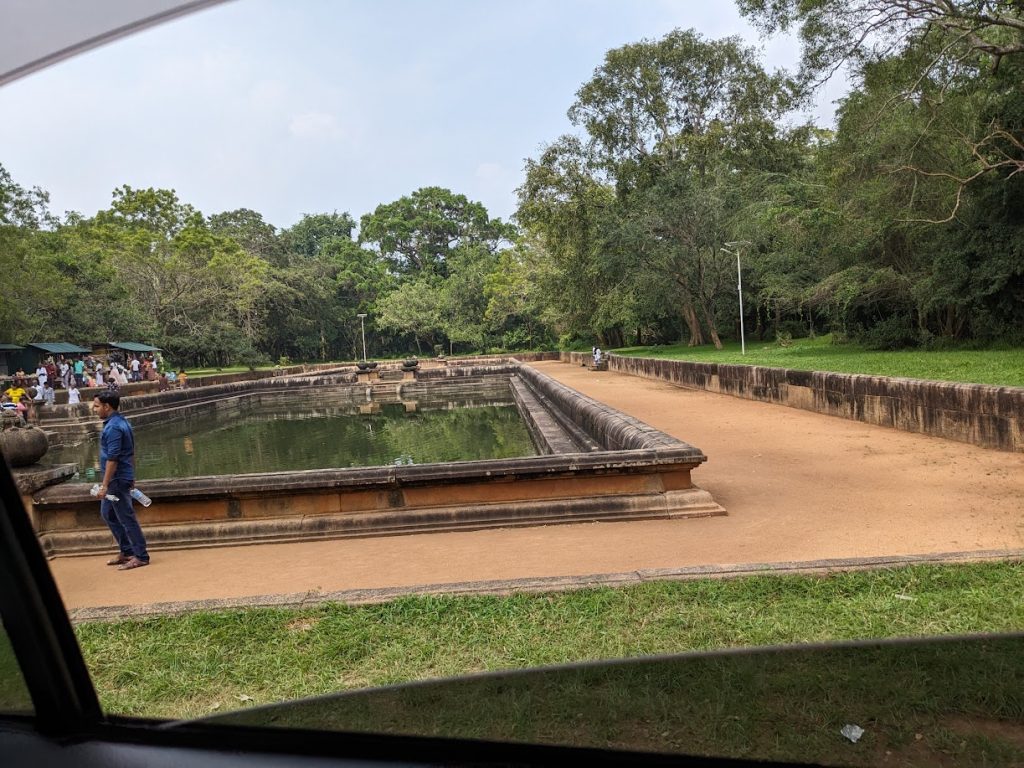
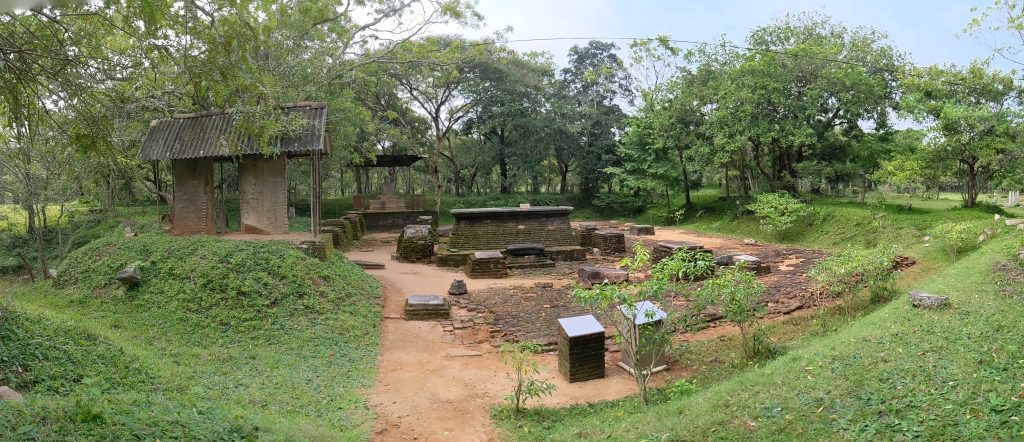
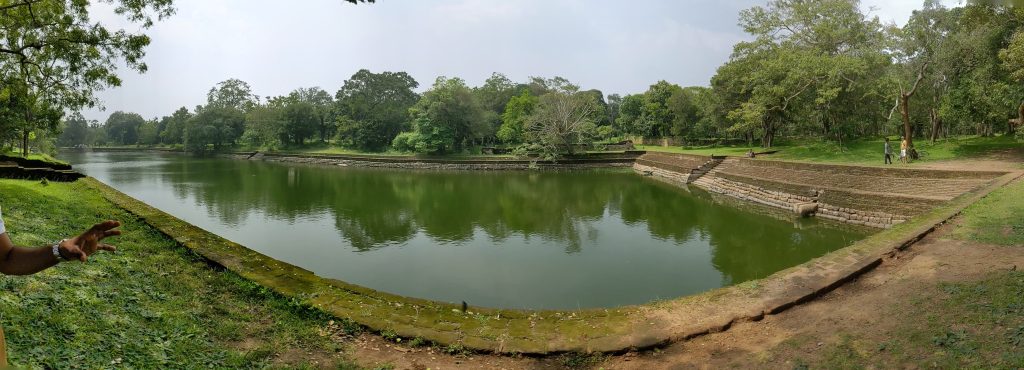
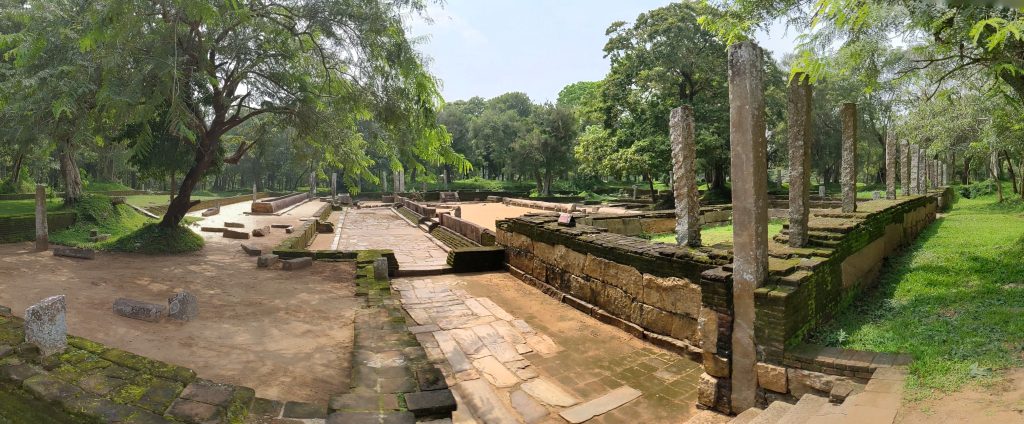
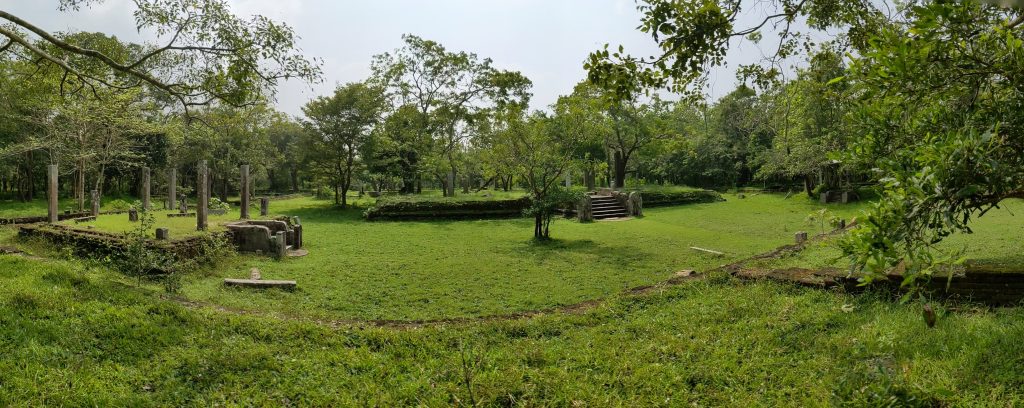
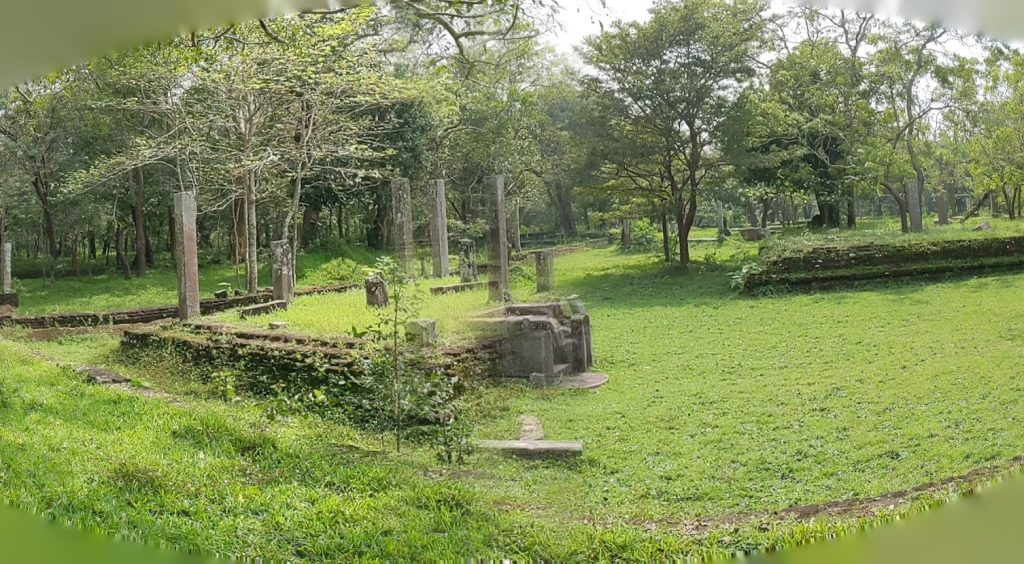
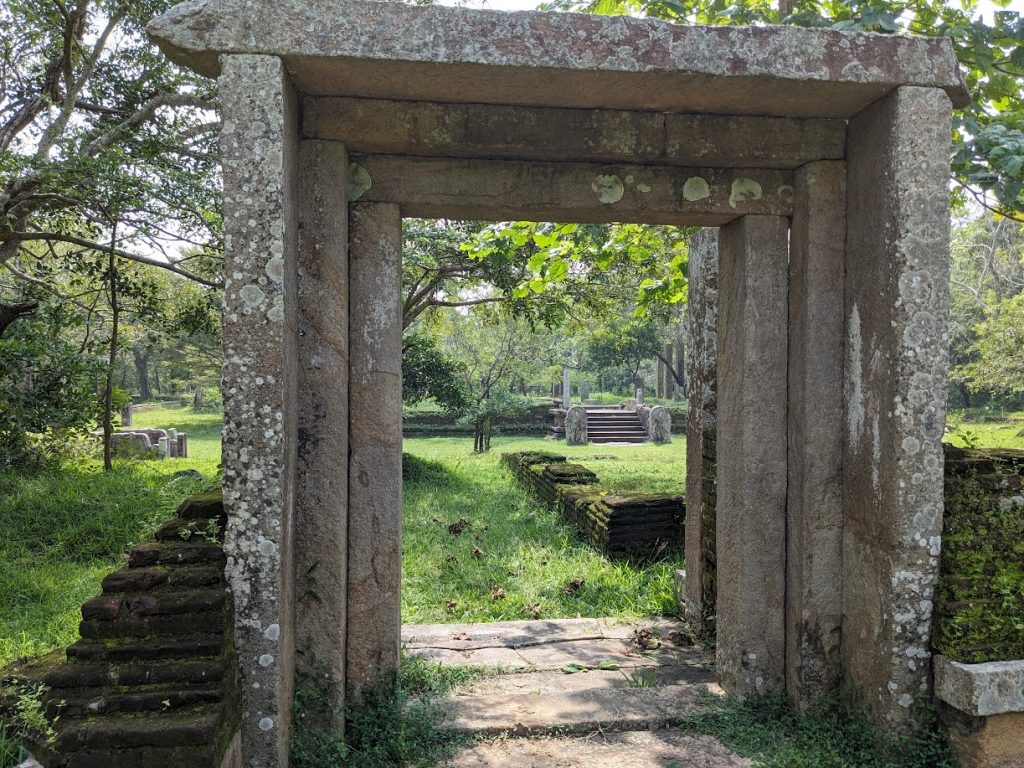
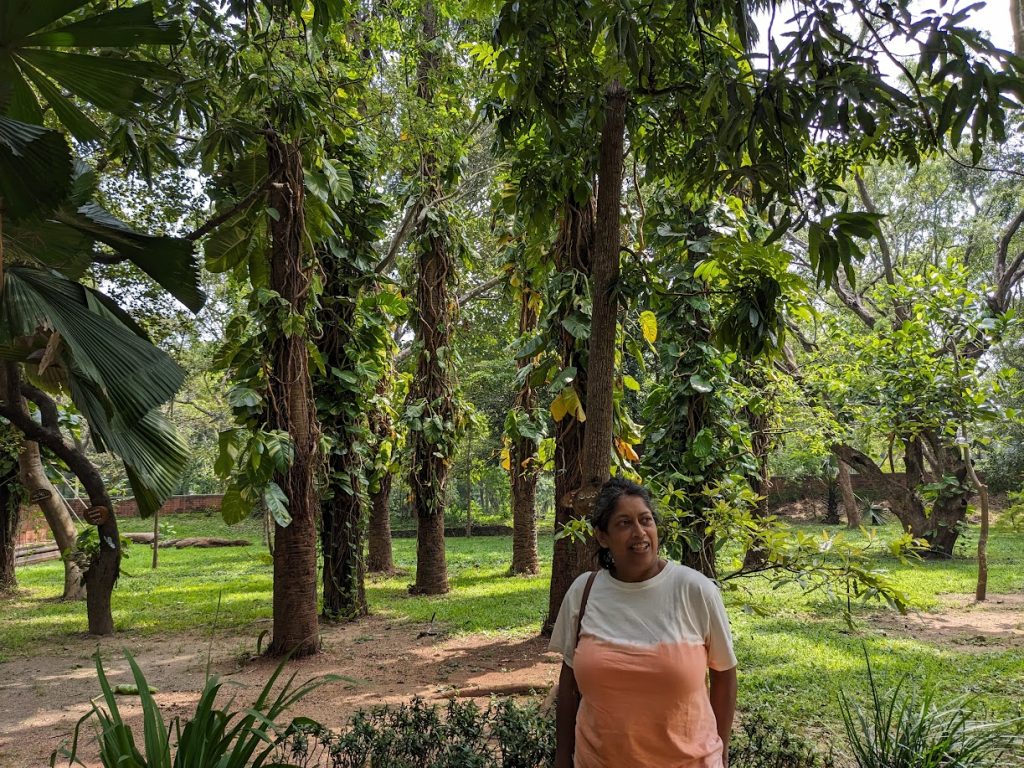
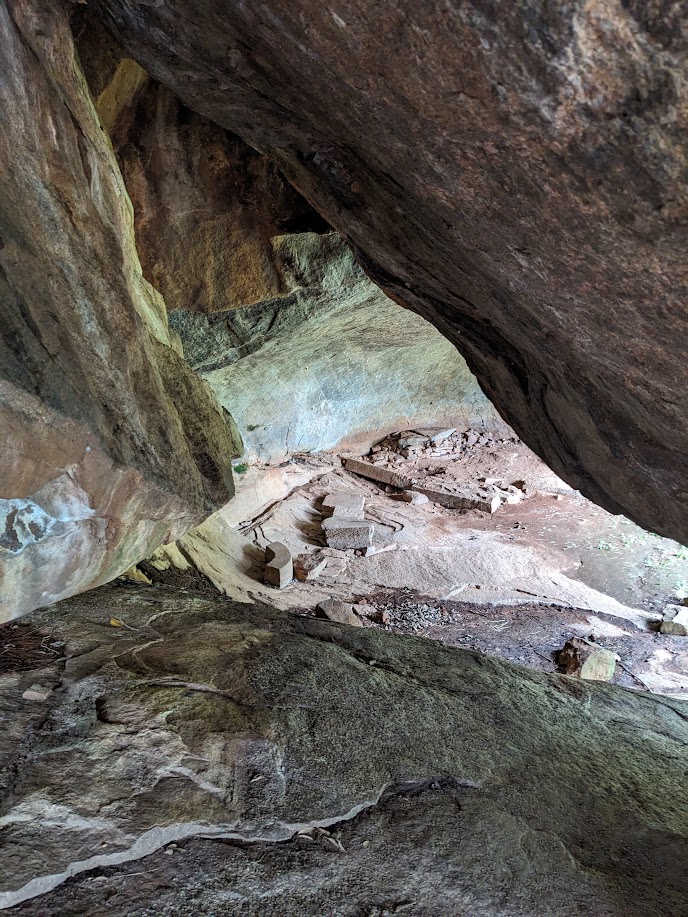
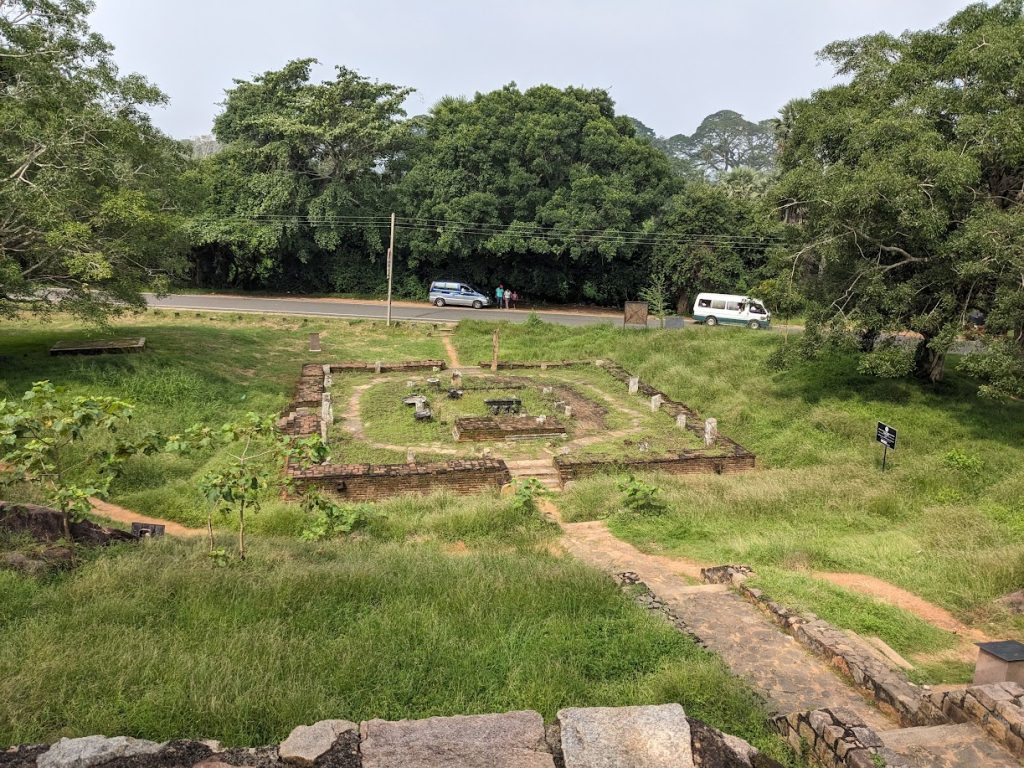
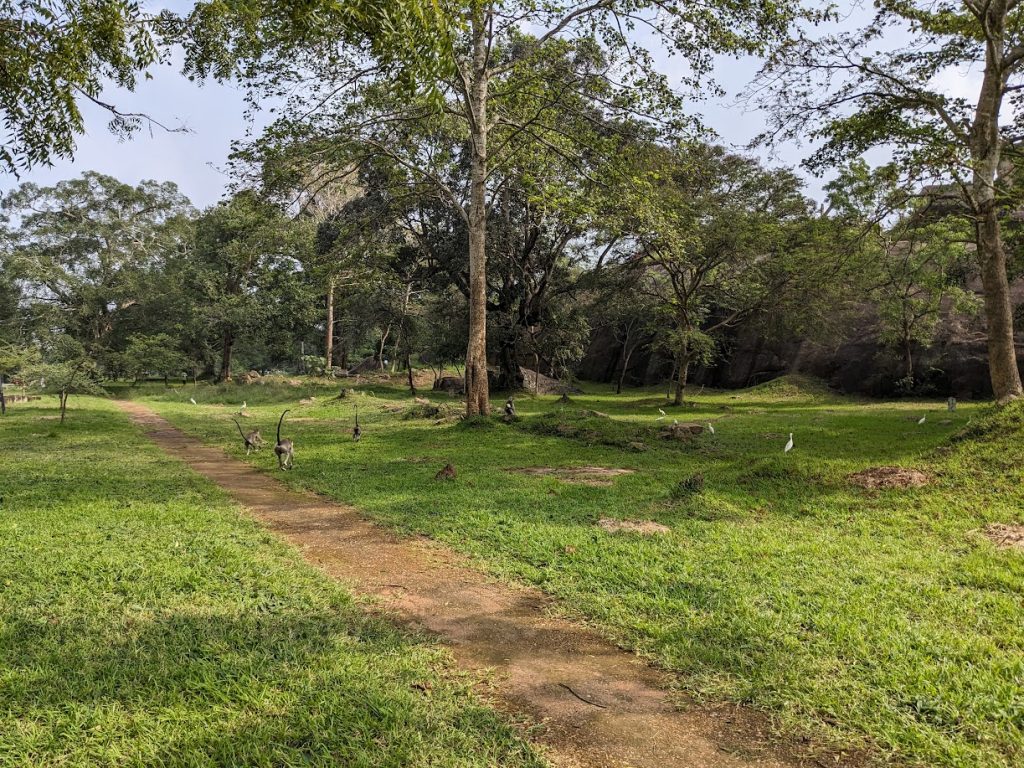
We returned to Colombo from Anuradhapura a day early because Deana had been making plans with relatives and family friends throughout the trip and we needed more time. We stayed at the Kingsbury hotel for the rest of our time in Sri Lanka. It was another 5-star modern hotel with impressive restaurants and facilities. My only complaint about the Colombo hotels is that they frequently host weddings and other events and the parties go on *late*; it wasn’t uncommon for the music outside to go on until 11:30pm or midnight. Sri Lankans like to party.
We visited with Aunt Amithi (Deanas mother’s closest friend); her husband had been an architect and her house was quite beautiful. I wish I’d taken more photos. Amithi herself was lovely and sharp as a tack.
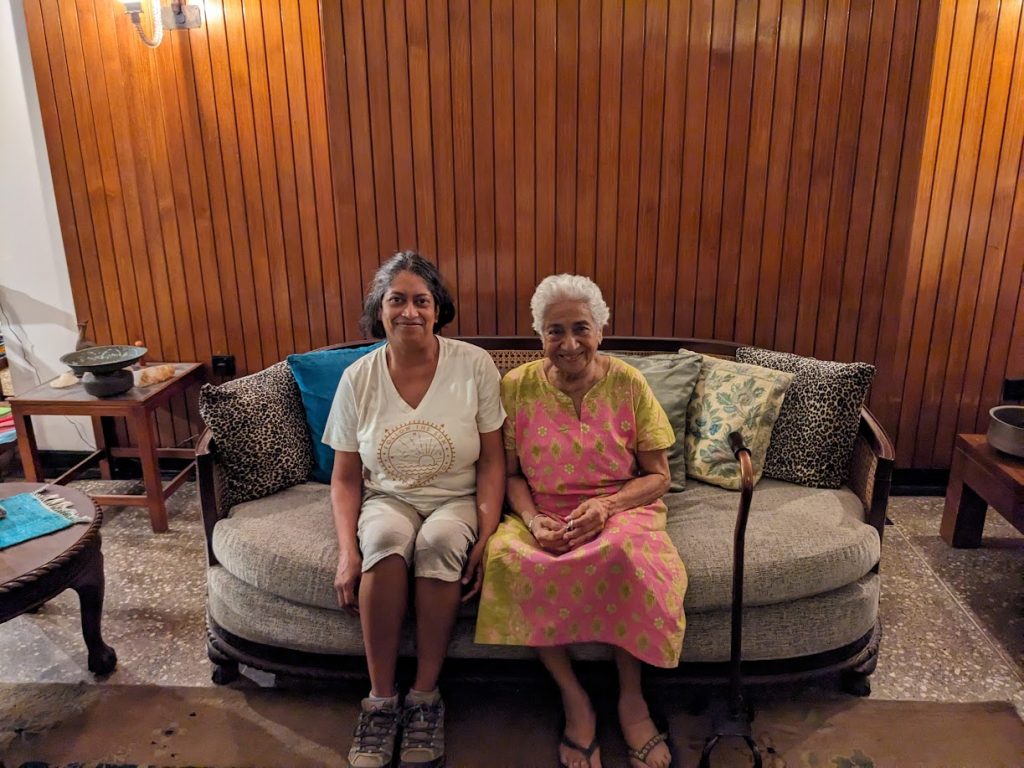

We met Deana’s grade-school (St. Bridget’s Convent) friend Jaish for tea at the Tintagel, another impressive Colombo hotel. Jaish is now a fashion designer and was delightful.
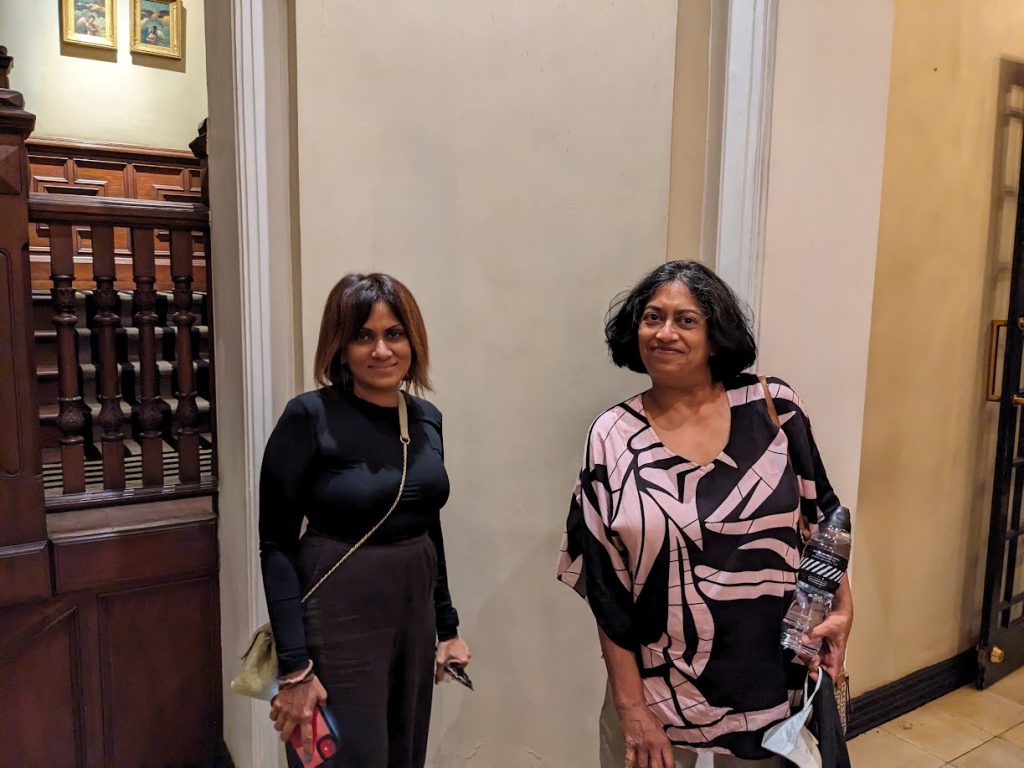
We spent time with Deana’s cousins Janthy and Vilo and Janthy’s husband Dehan who took us to Nuga Gama; a restaurant in the middle of a swanky cosmopolitan hotel that had been created to give them feel of a rural village. At various times there were dancers and other entertainers such as this traditional comedic “devil-dancer”.
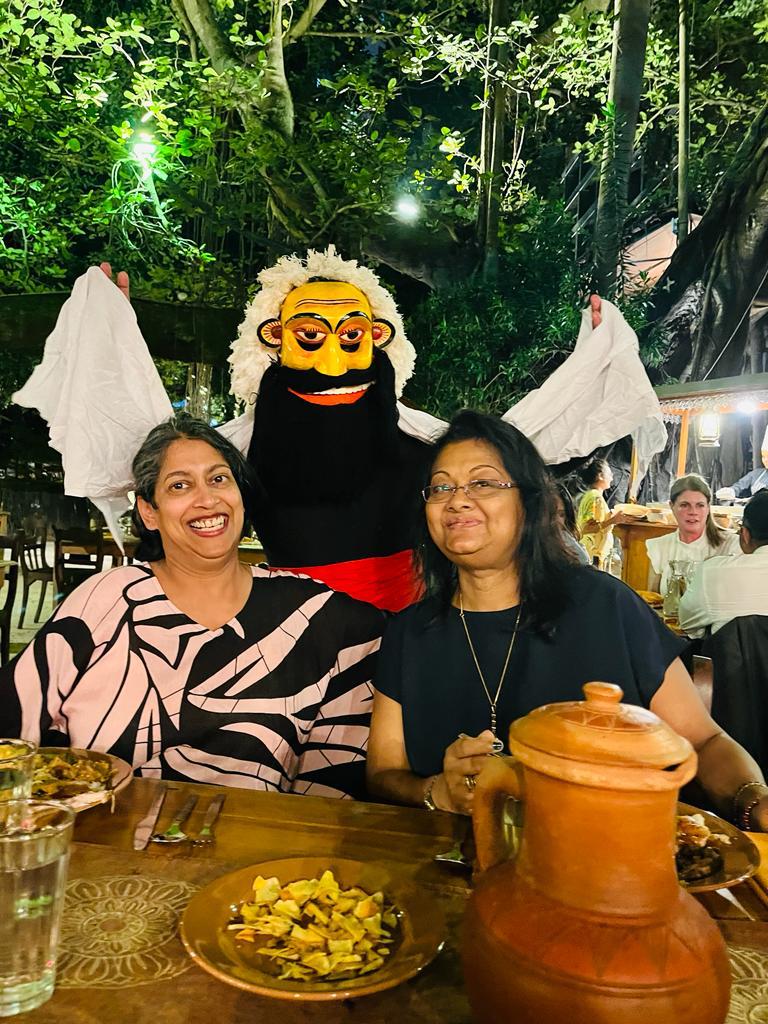
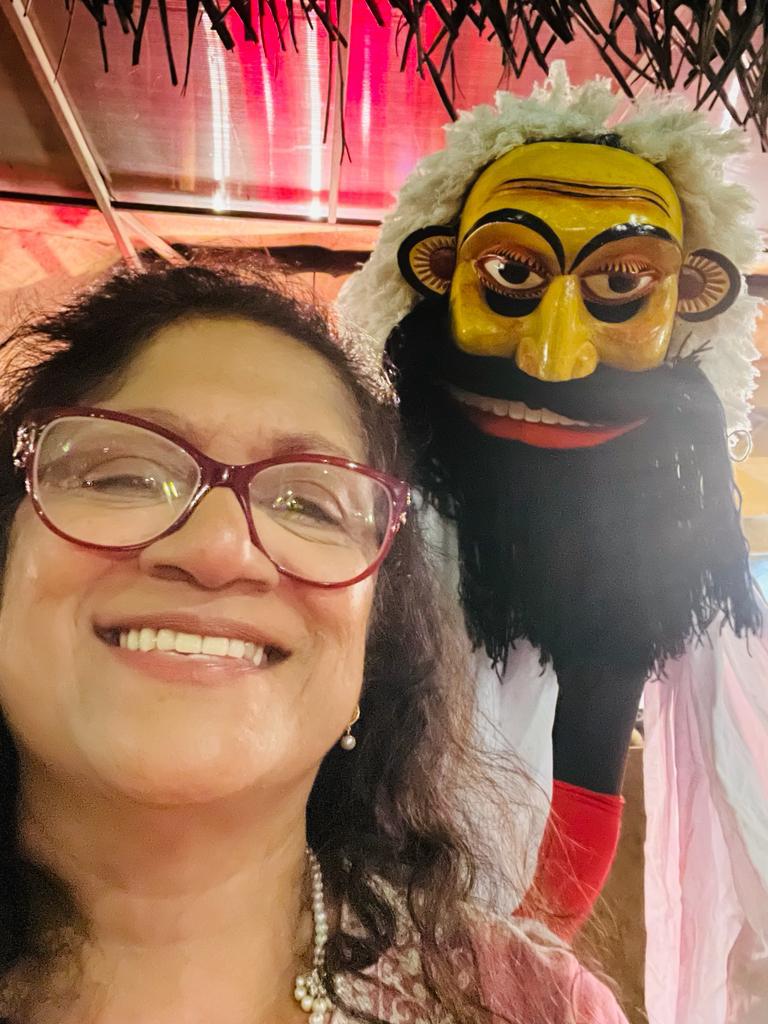
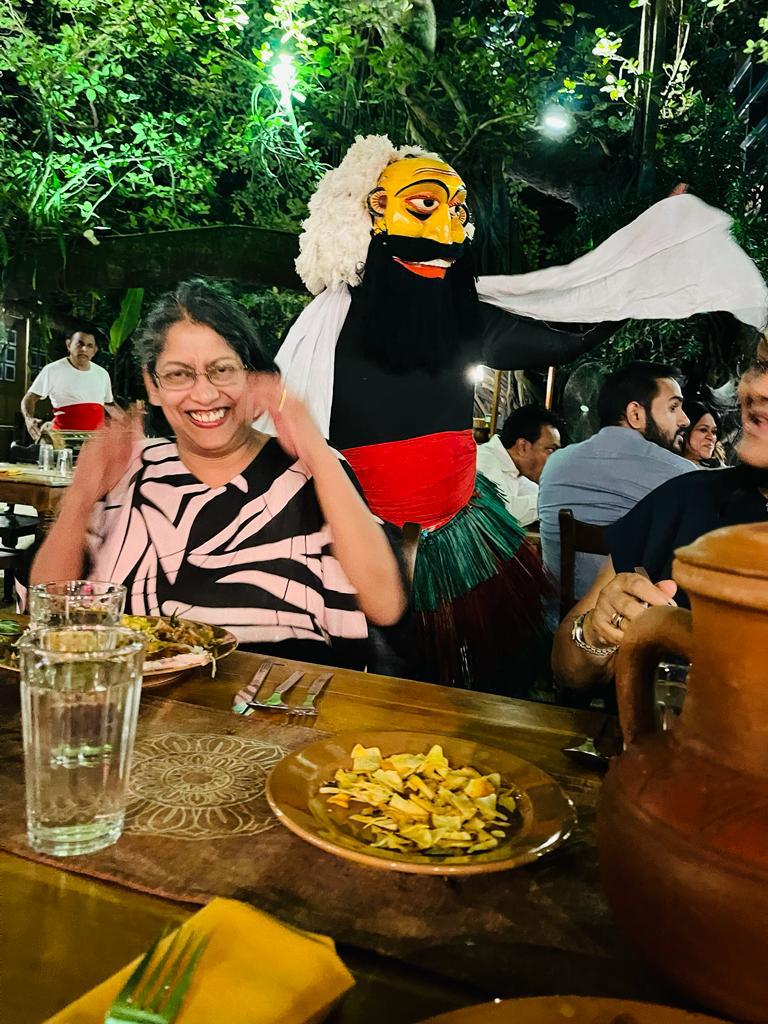
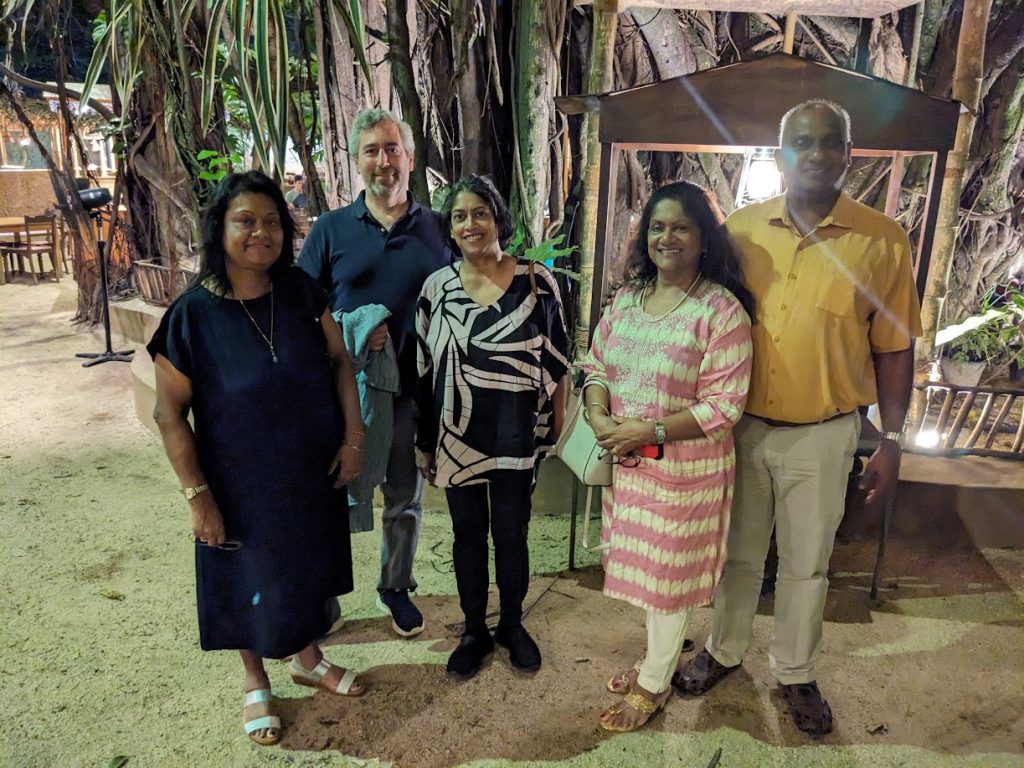
We visited Deana’s cousin Punya, her husband Dil, and their daughter Pulisticka (Puli) Jayathilake and her daughter RIddhi near her old house on Kinsey Road. It was neat that Riddhi represented the 5th generation from her family at St. Bridget’s Convent school in Colombo 7.
Deana’s father’s best friend’s son Dev Devendra and his wife took us to lunch at the beautiful Royal Colombo golf club. They are an awesome couple; their daughter lives in relatively nearby Reston, VA and Deana has already been in touch with her.
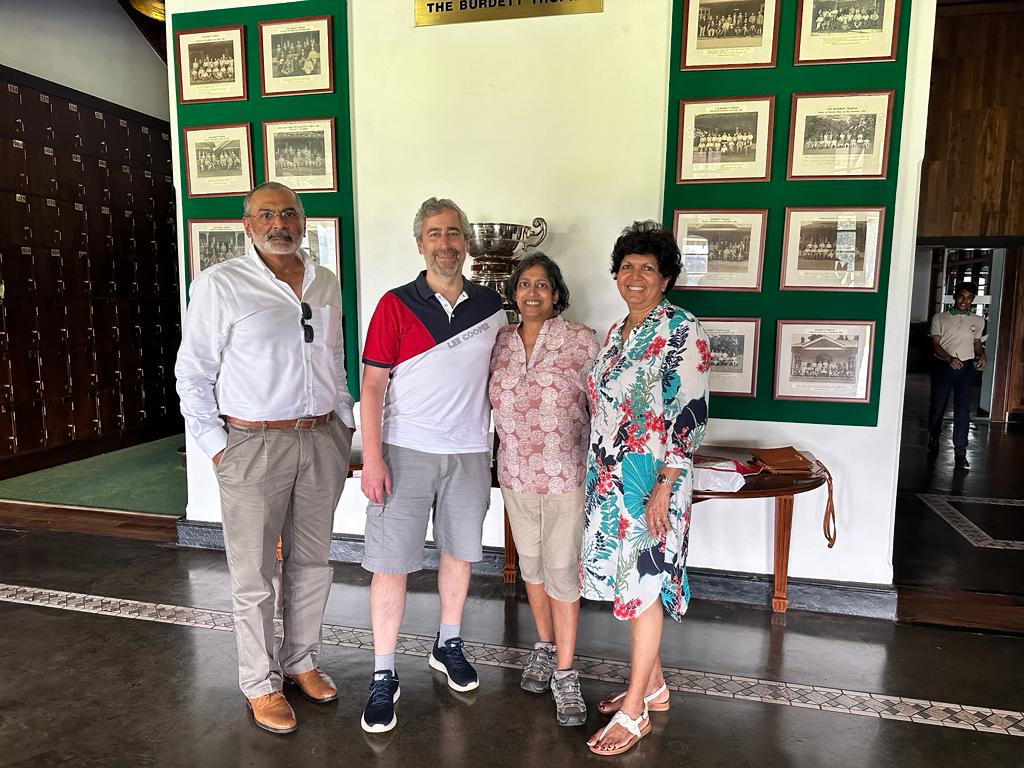
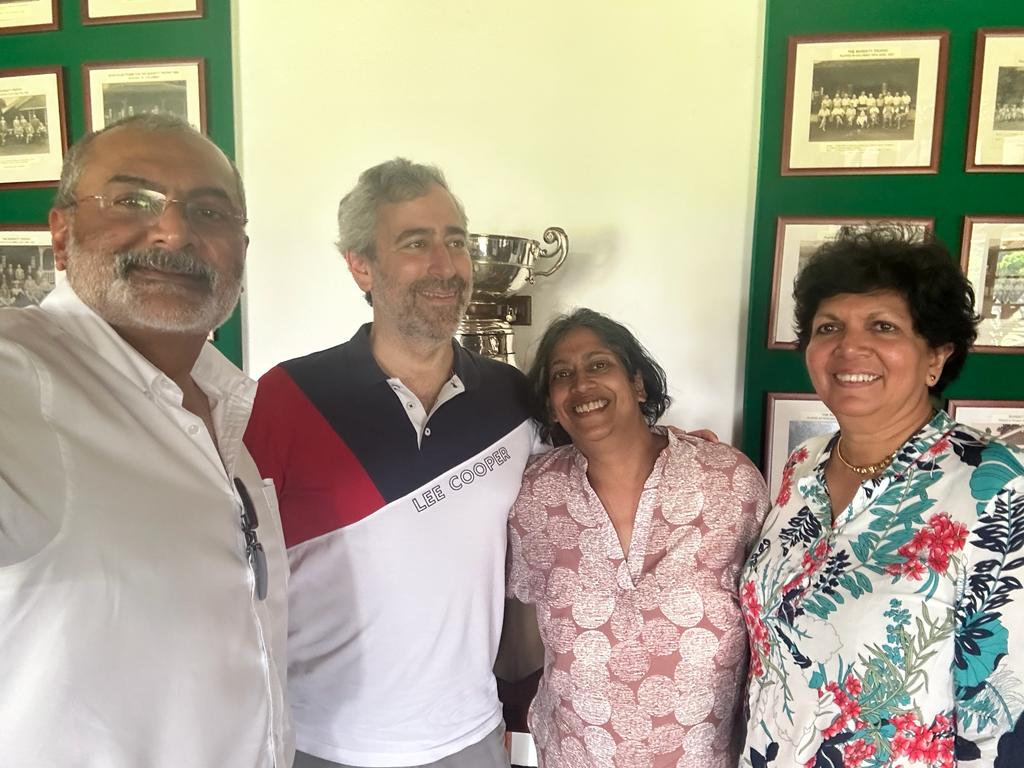
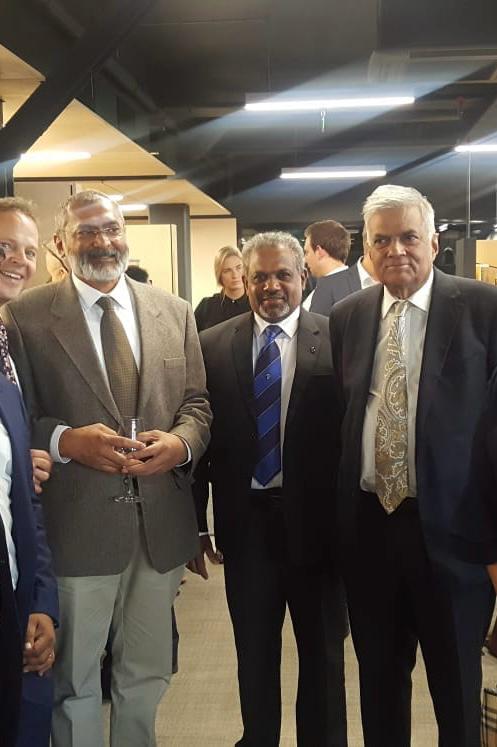
(Sri Lanka President)
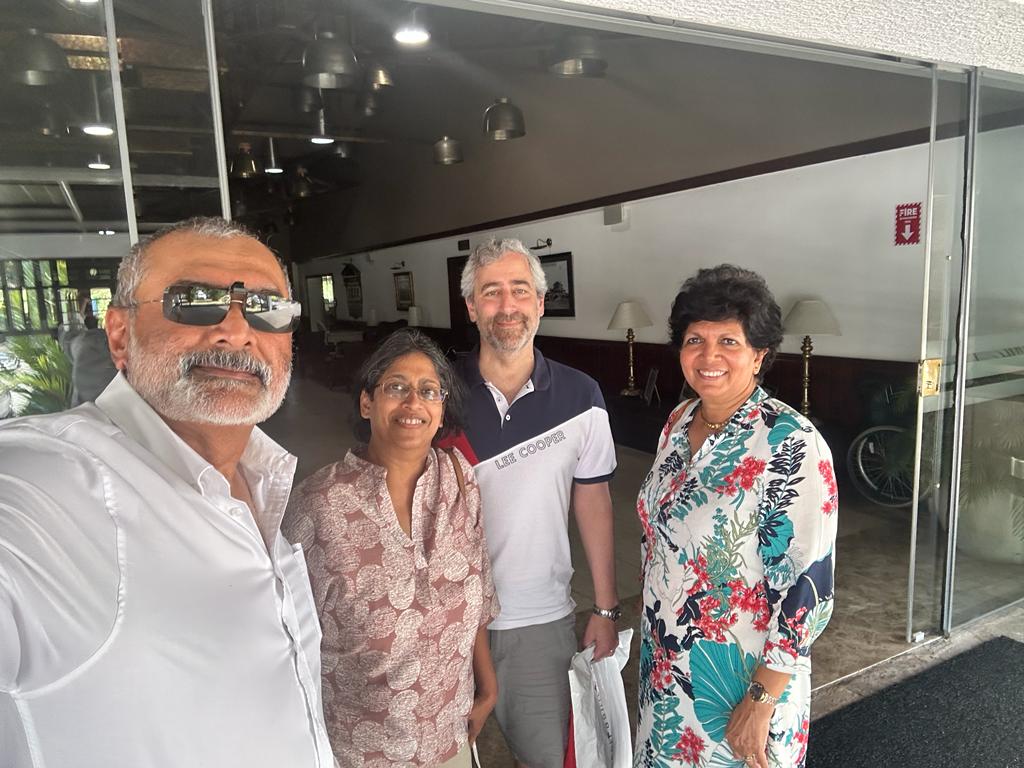
We had dinner with Deana’s cousin Prabha and her husband at the very nice Chinese restaurant in the Kingsbury hotel.
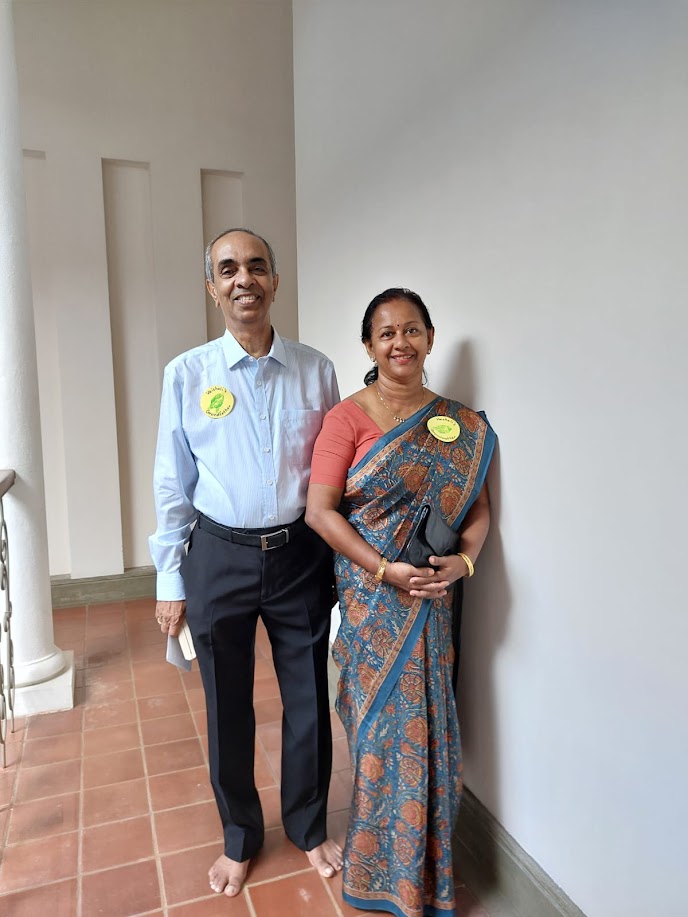
There’s a lot more to write, but I’m out of gas on this marathon post. It was an amazing trip and one I hope we’ll do again soon. The people were wonderful, the country is beautiful, and we had the benefit of traveling at a time when the exchange rate worked very much in our favor (1USD = 320 LKR). Tourism is a key business for Sri Lanka and it suffered badly during the pandemic. They really want tourism to return which makes for great synergy: tourism dollars and amazing value for tourists; so it is a *great* time to visit Sri Lanka; I highly recommend it!
The day after we returned home…
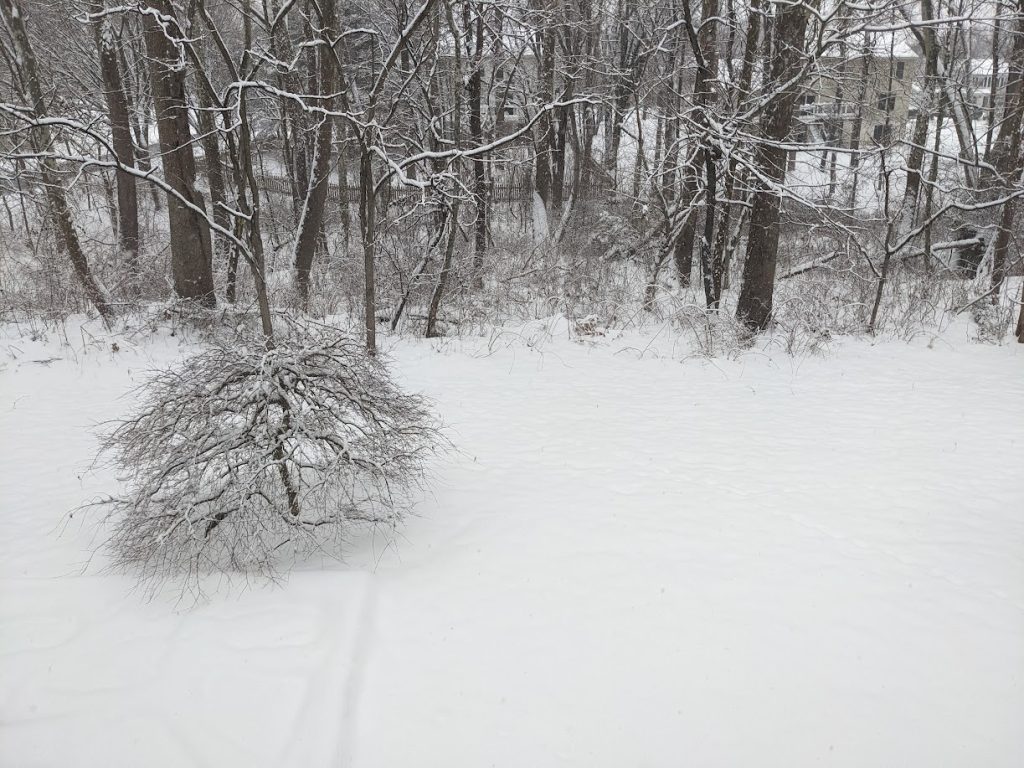

Fortunately, Maryland and climate change being what they are, it was 70F the following week…
To help with your next game of six-degrees of separation:
- Subo’s maiden name was Sobodhini Nagesan; she was Miss Sri Lanka 1977
- Dev Devendran knows Ranil Wickremesinghe and his family; we bumped into a nephew at the Royal Golf Club.
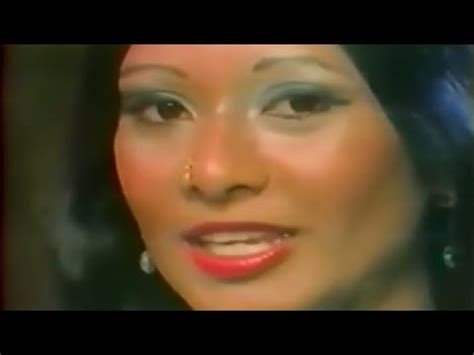
Miss Sri Lanka 1977
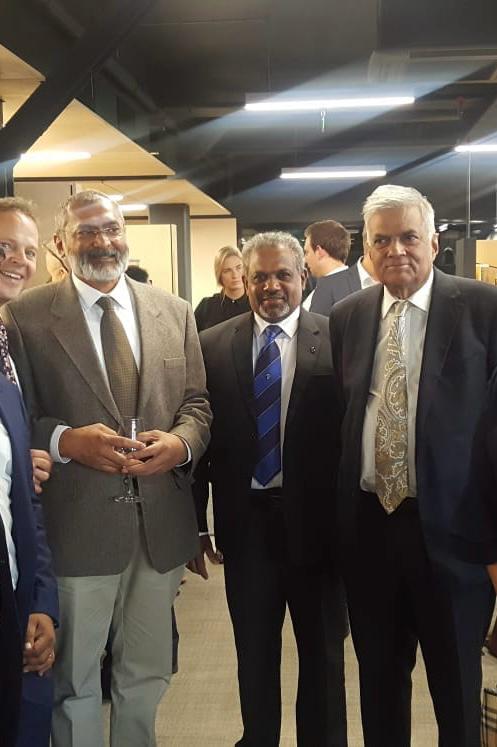
Ranil Wickremesinghe
